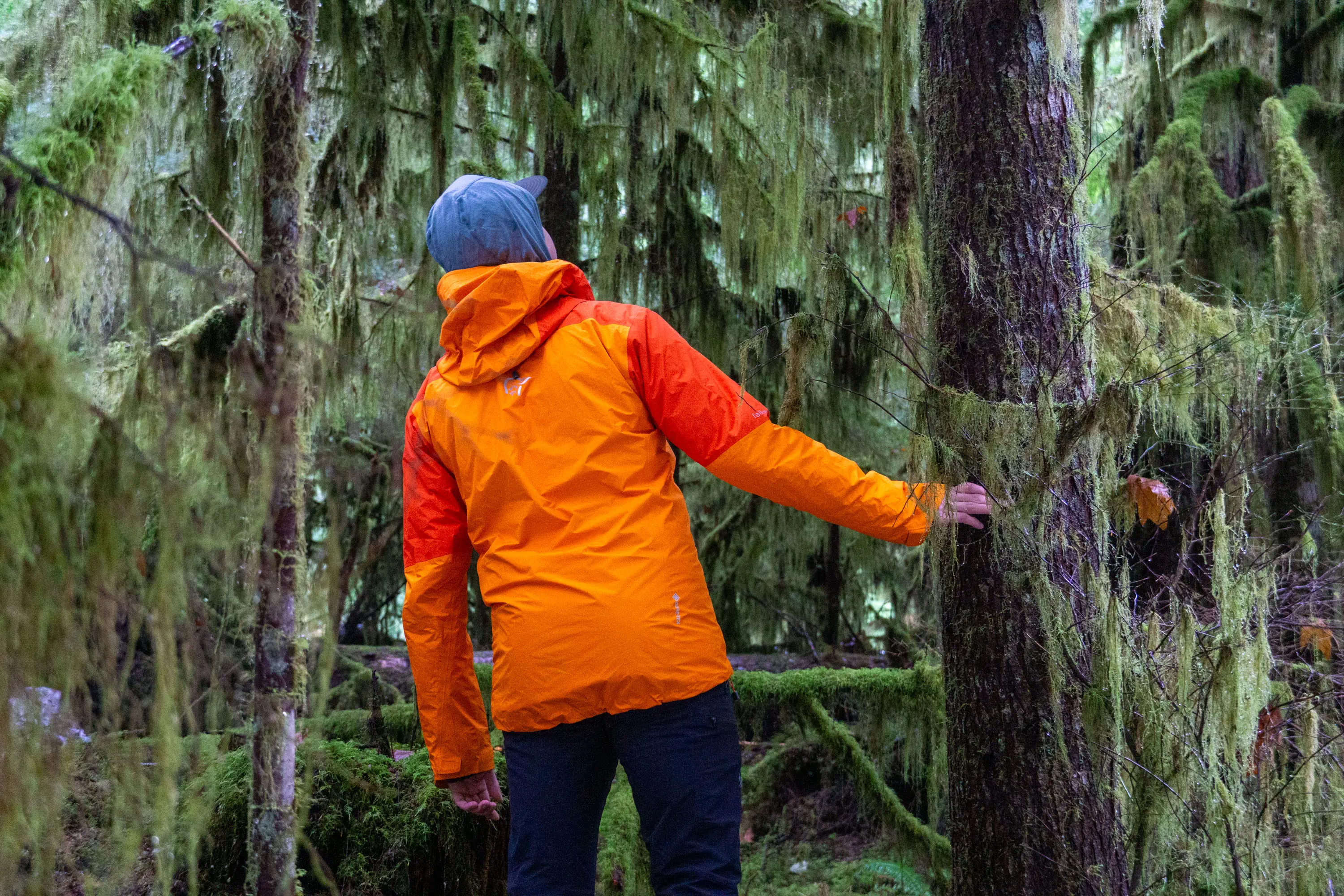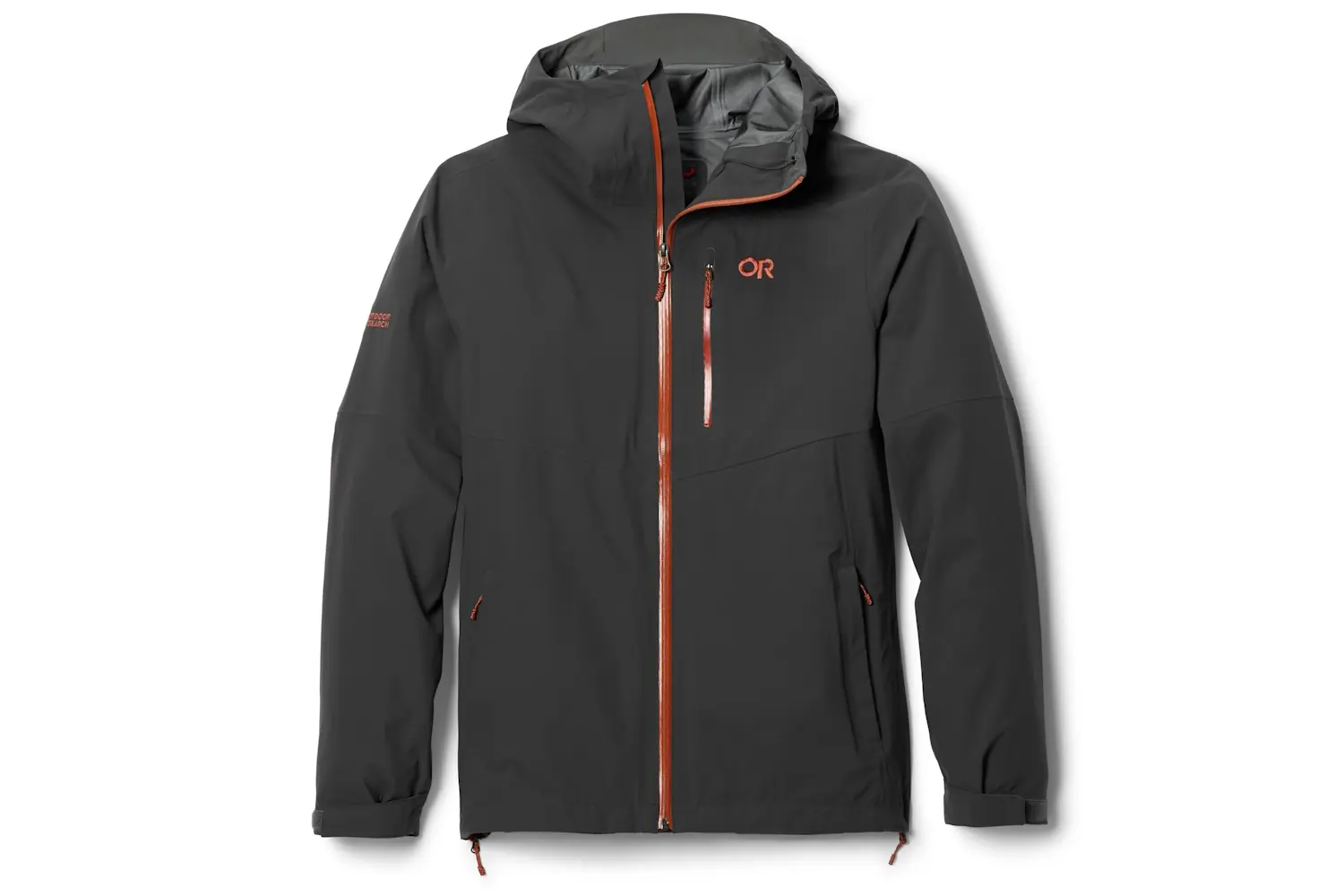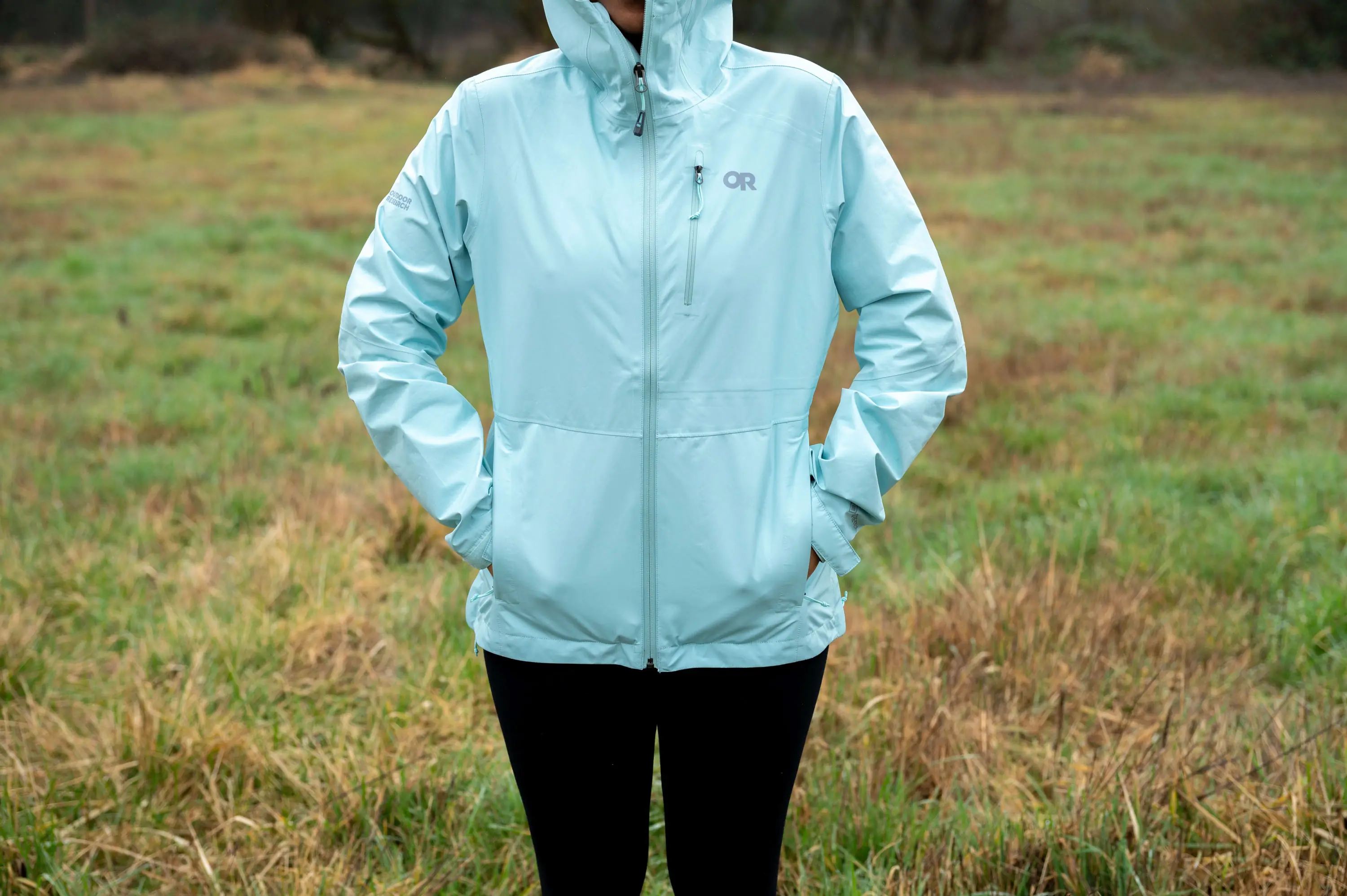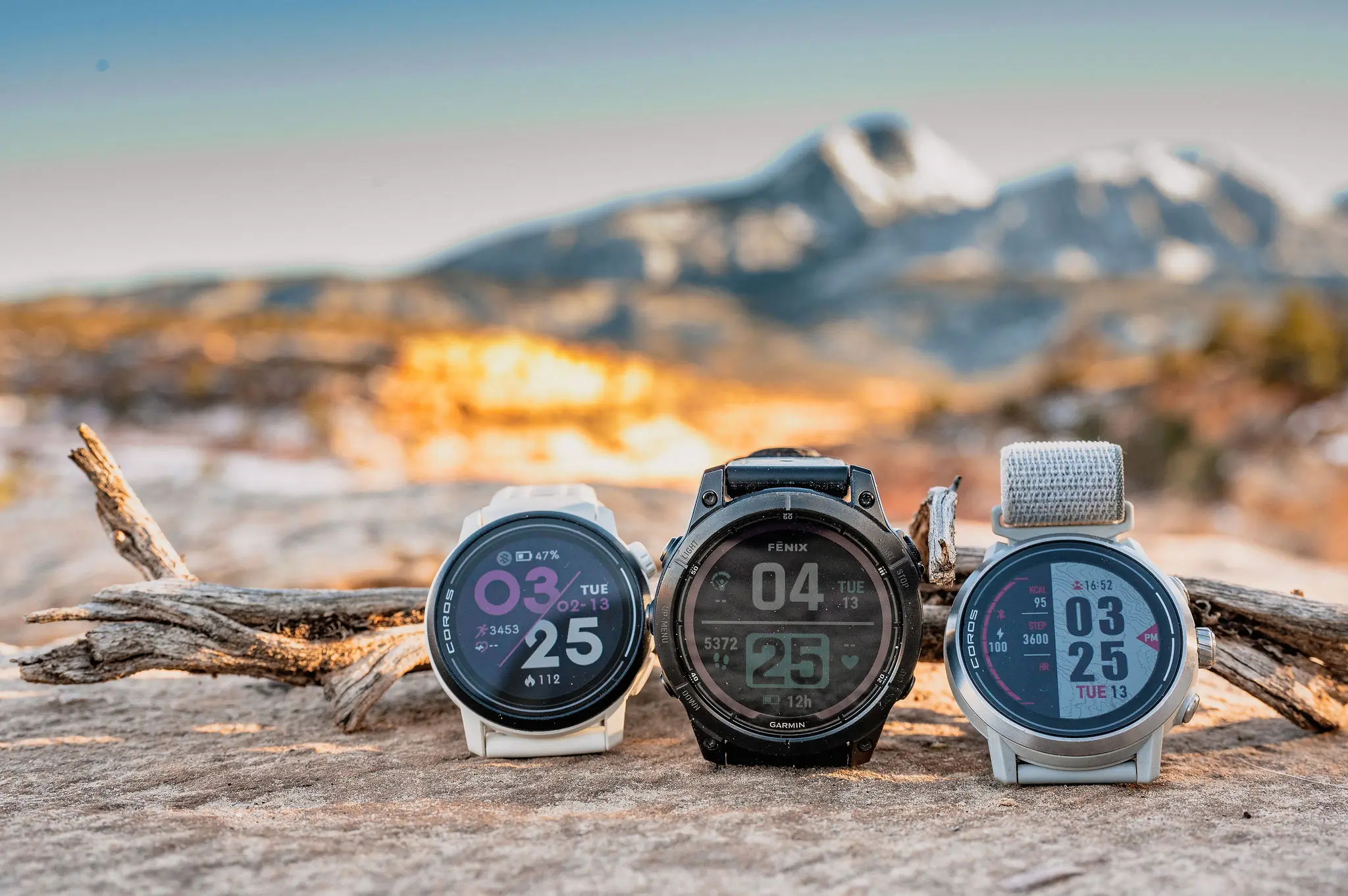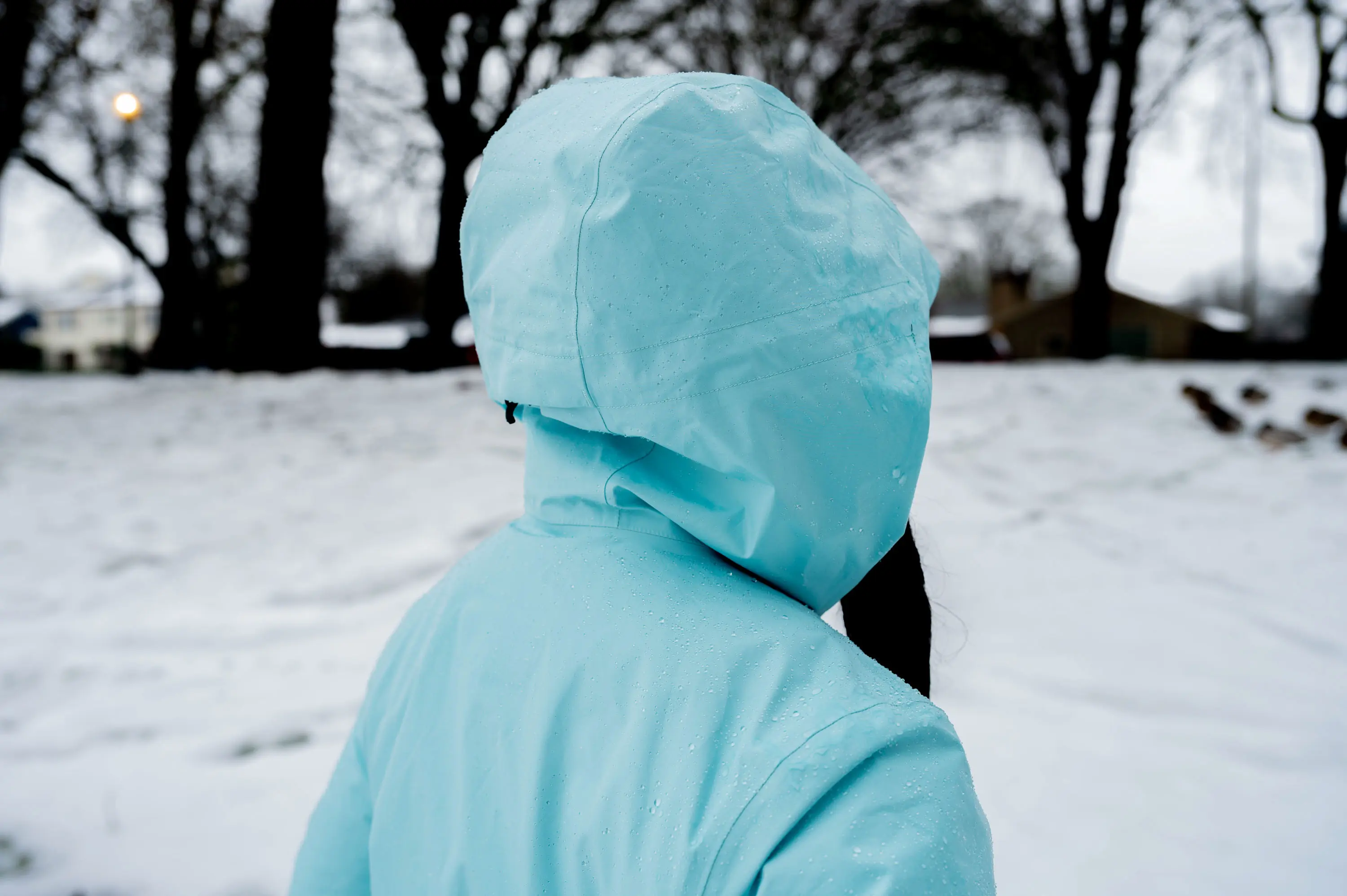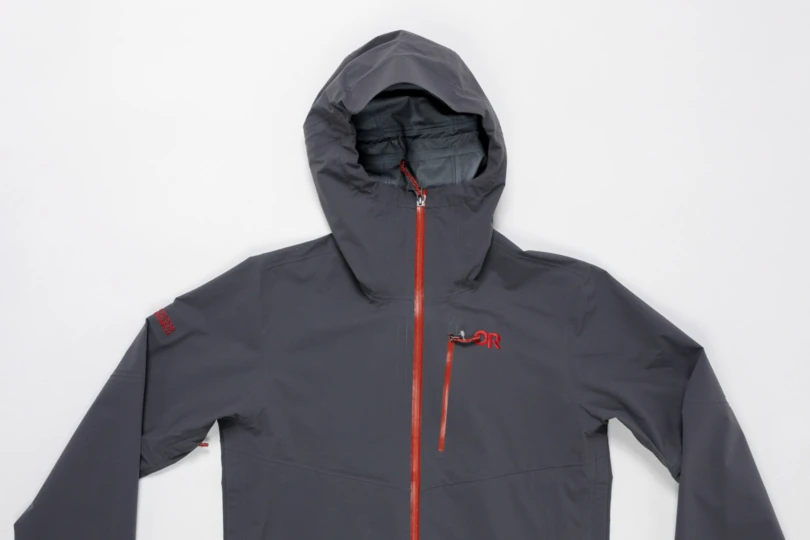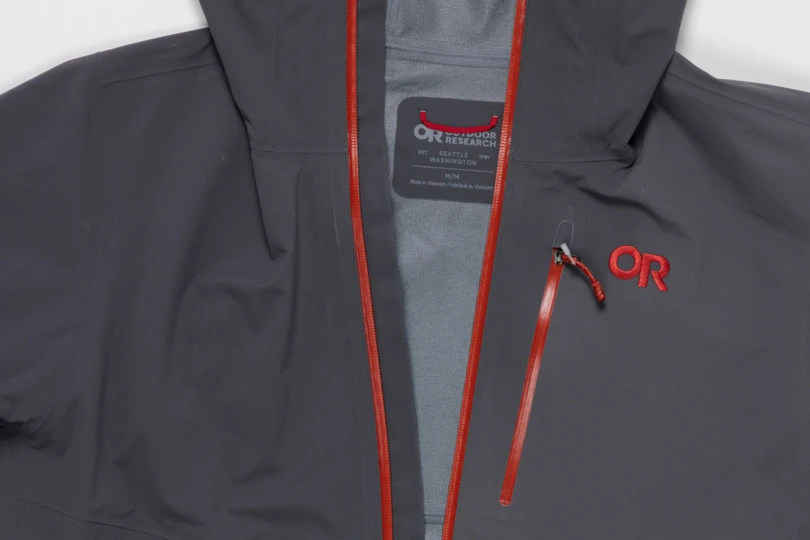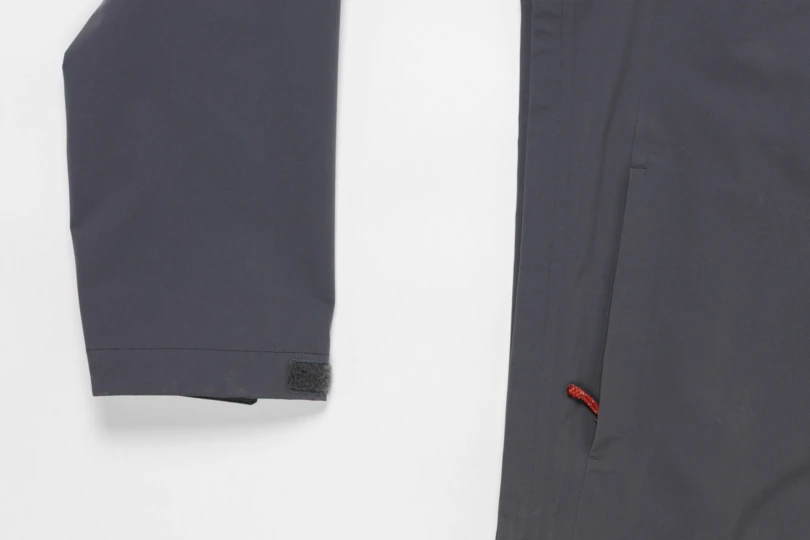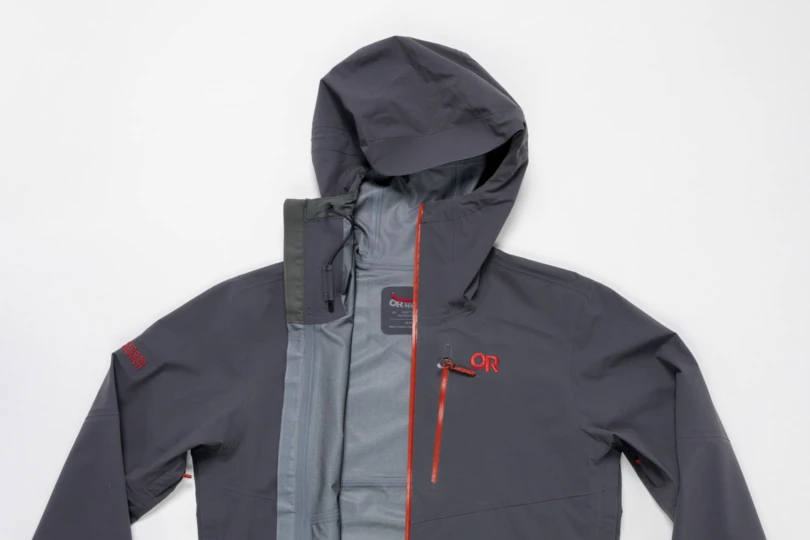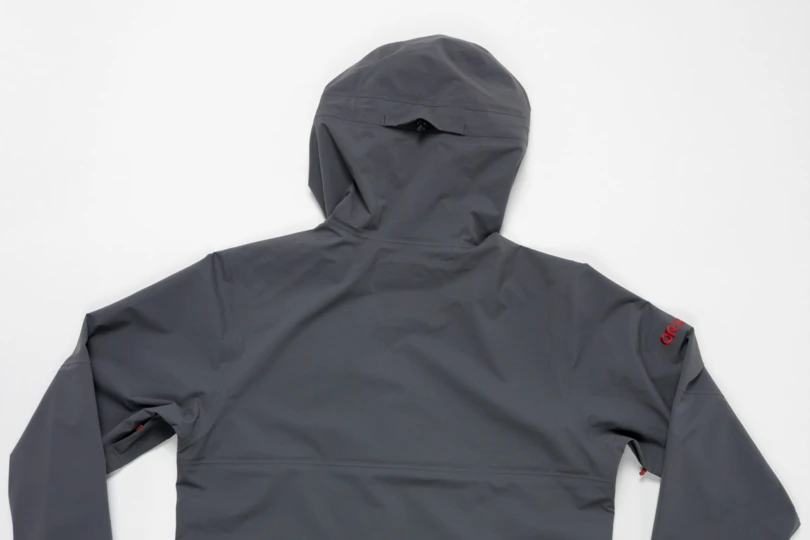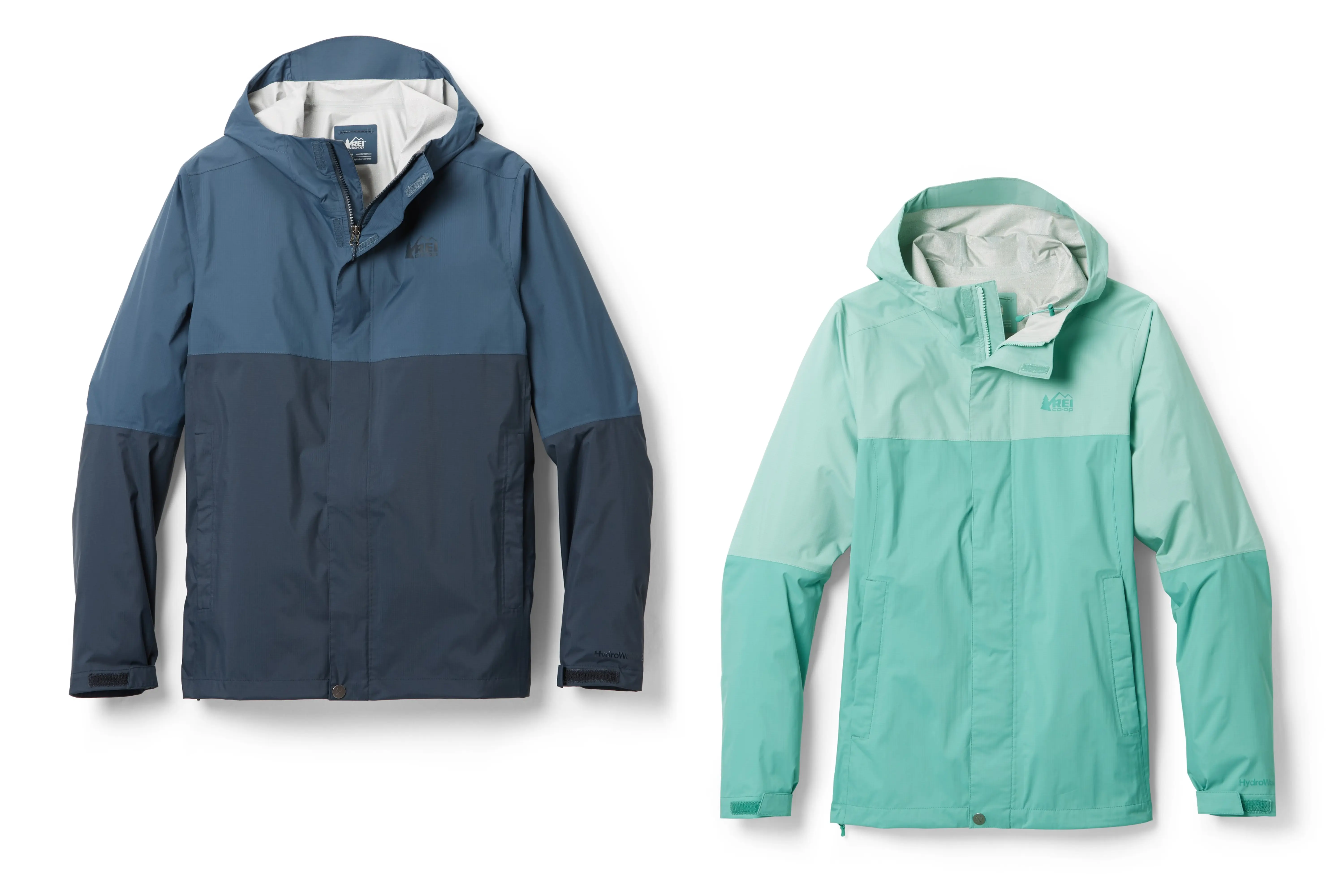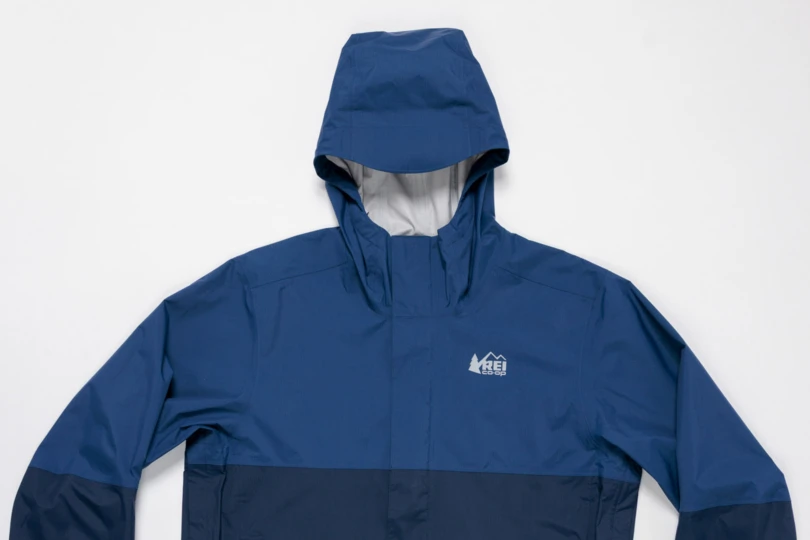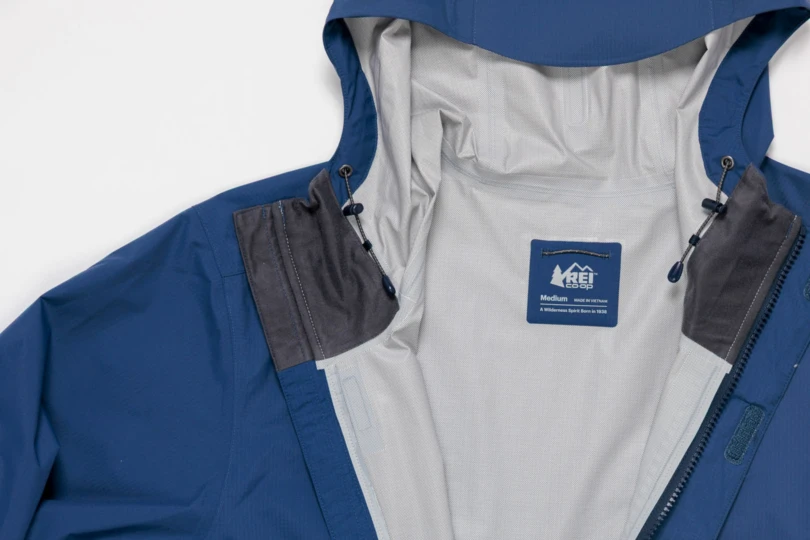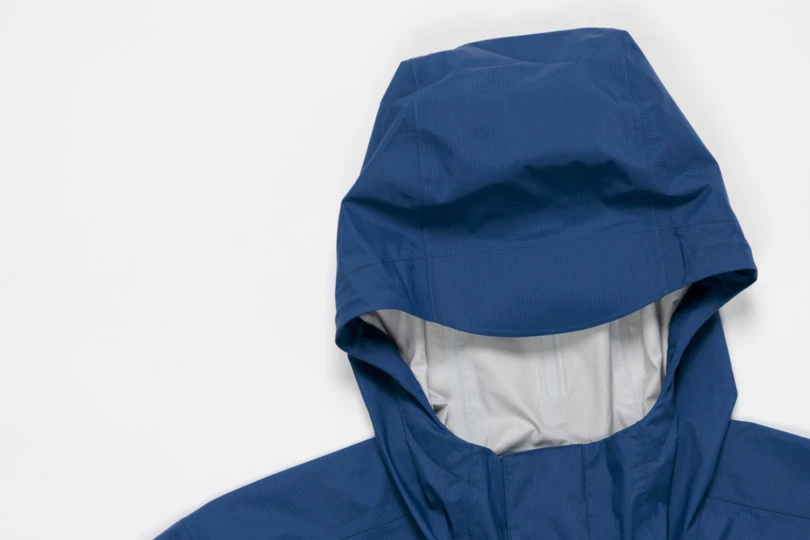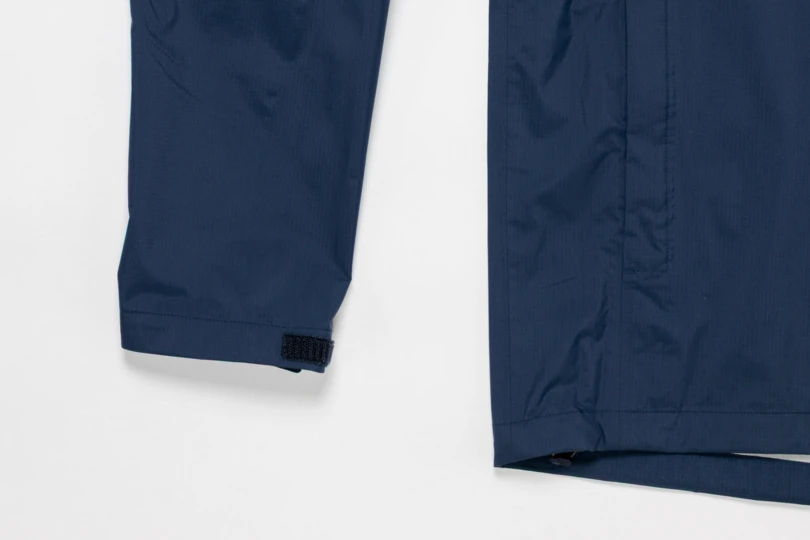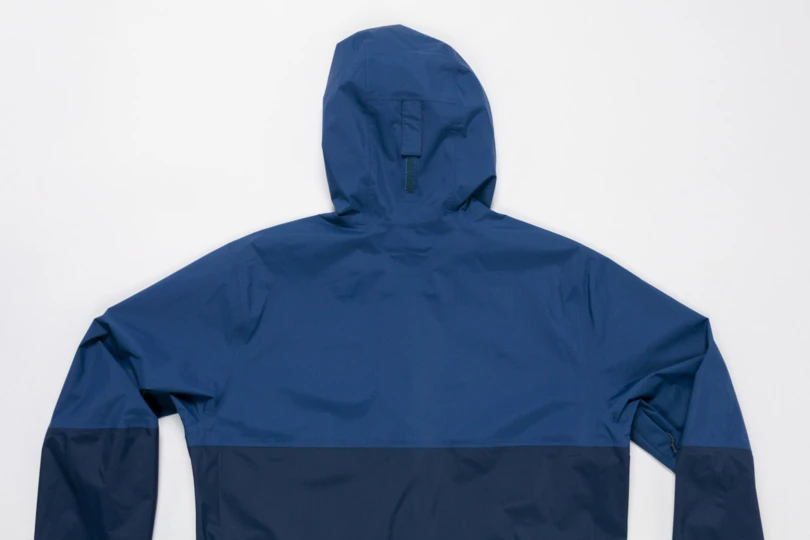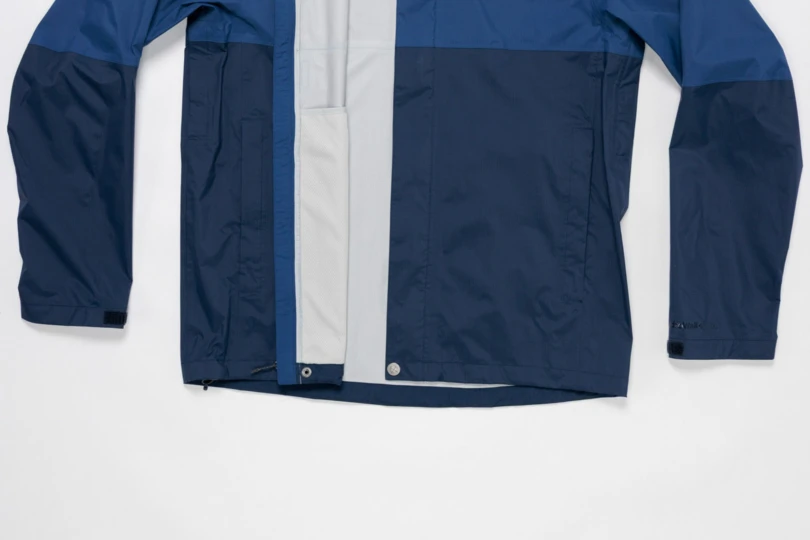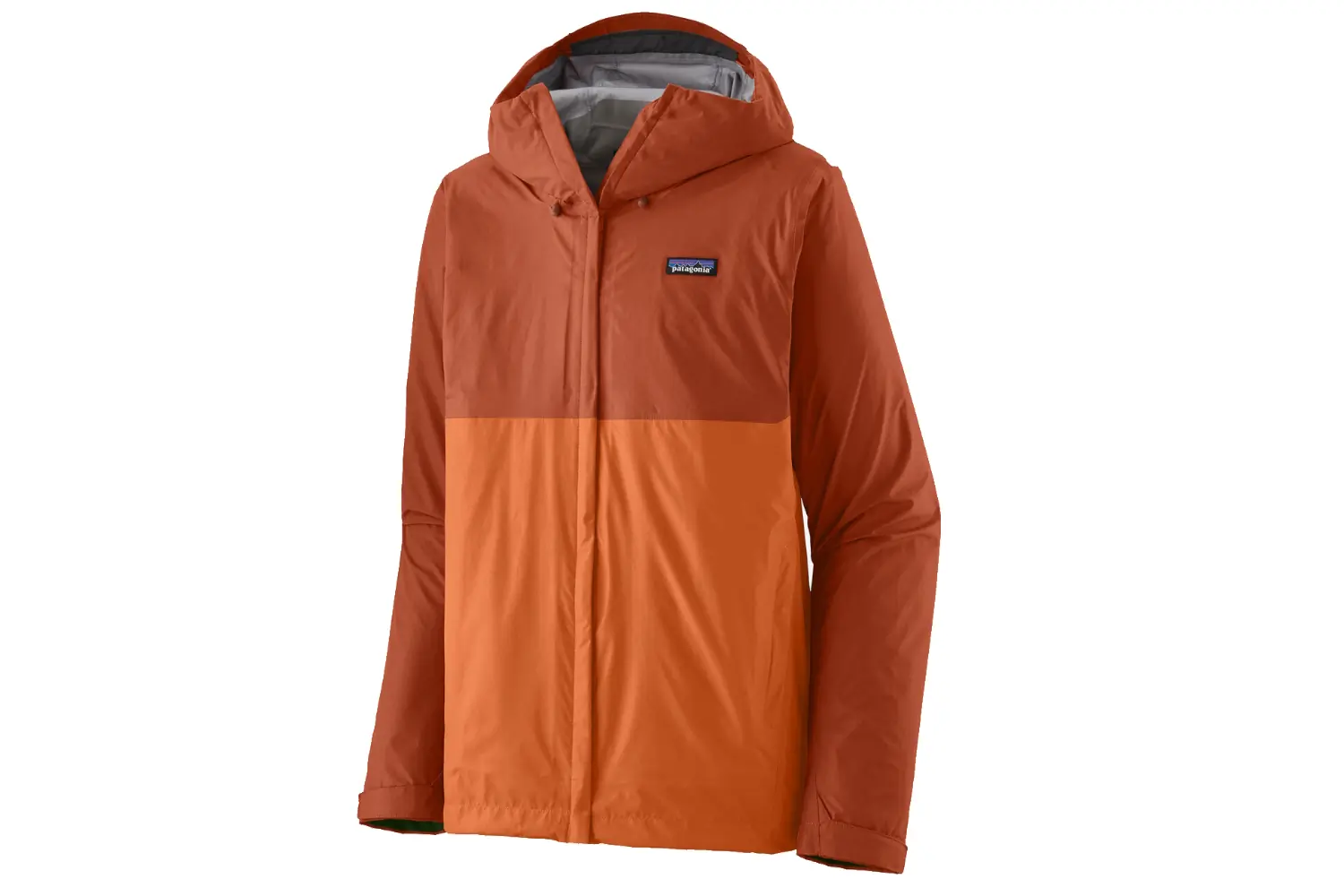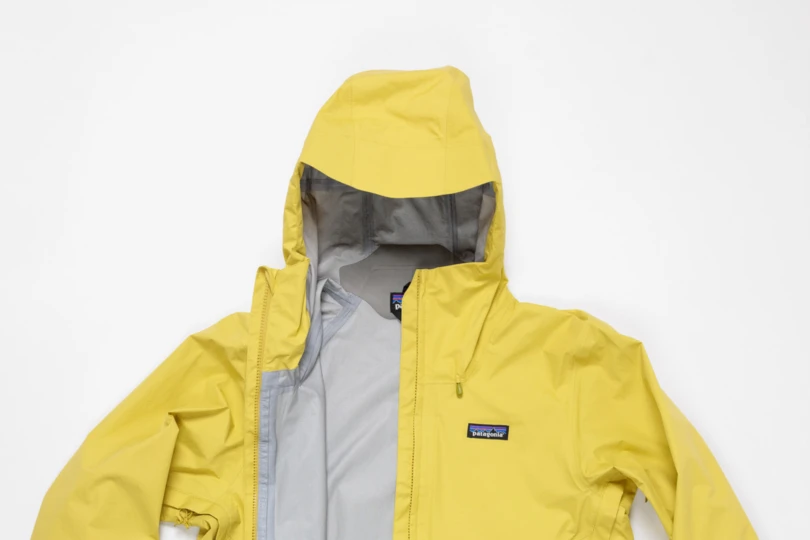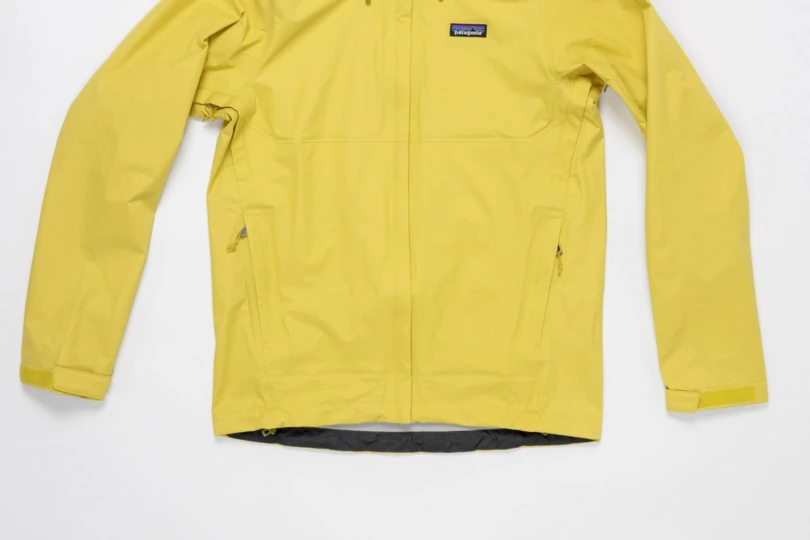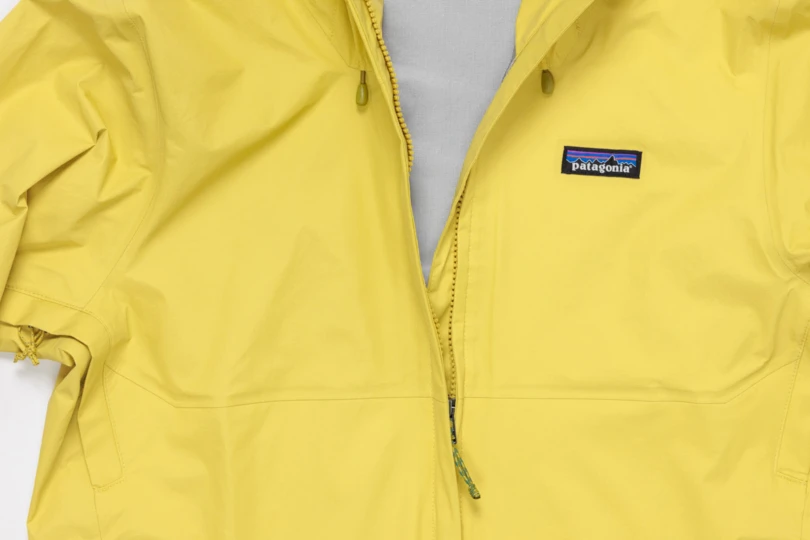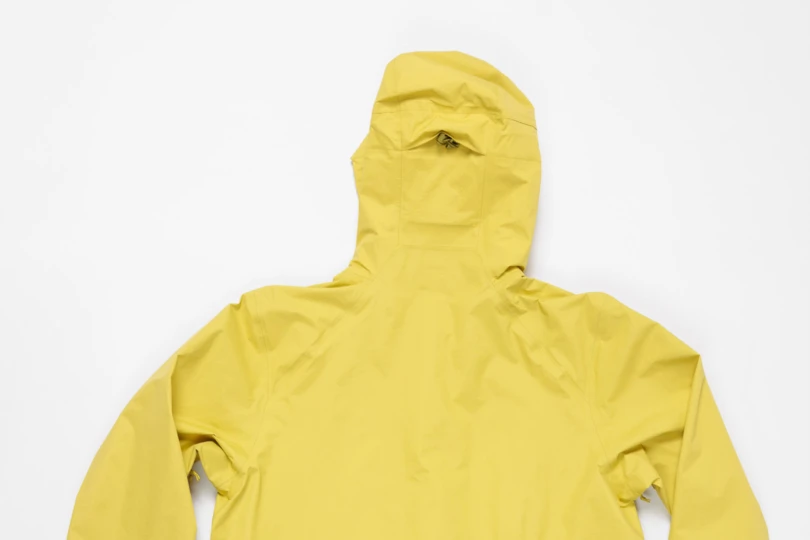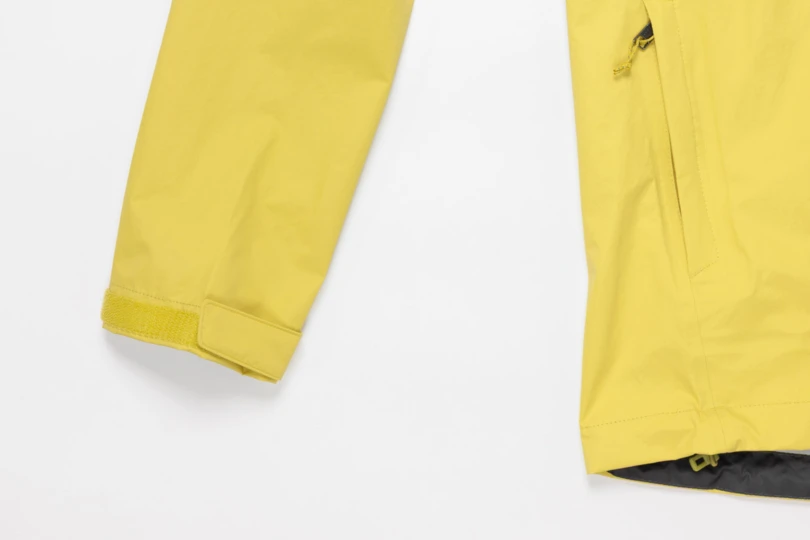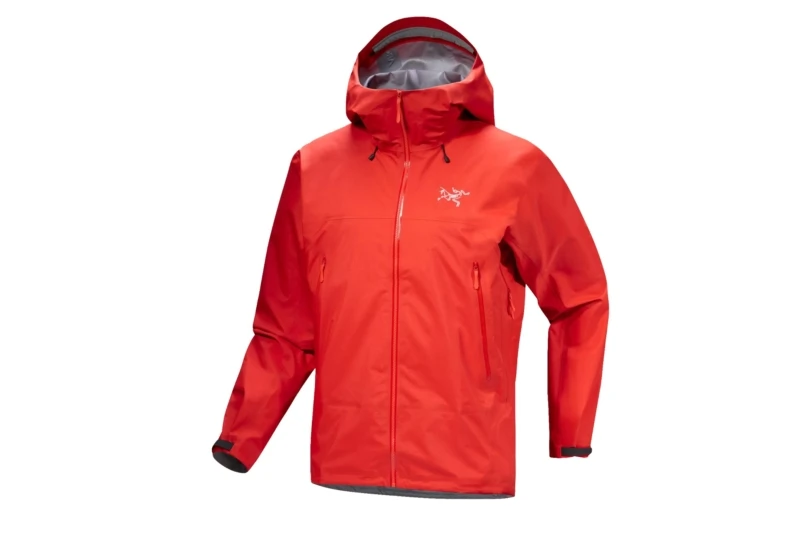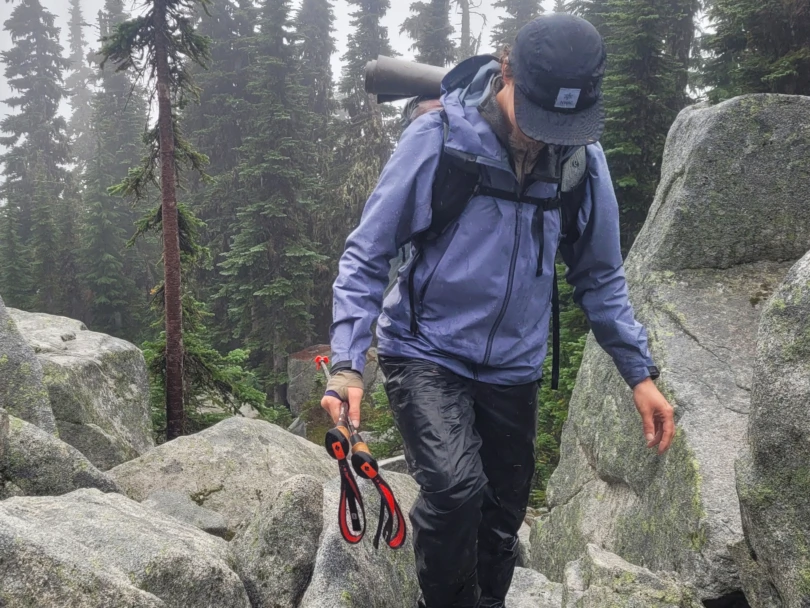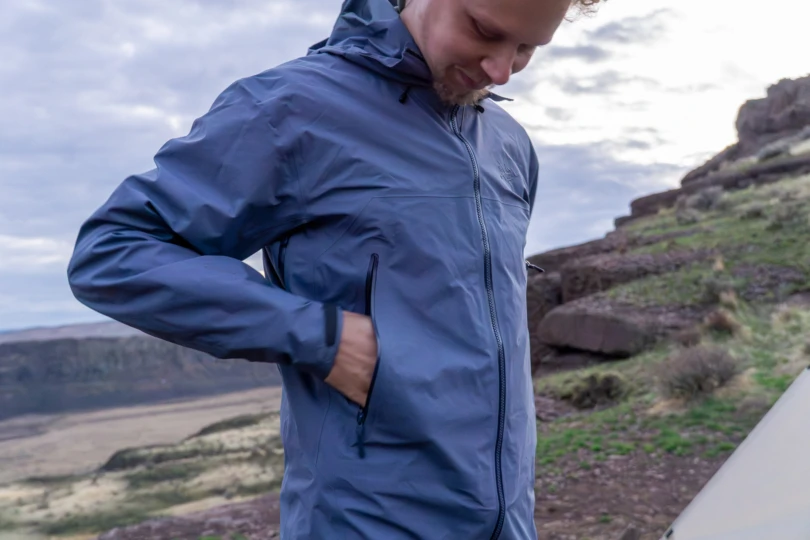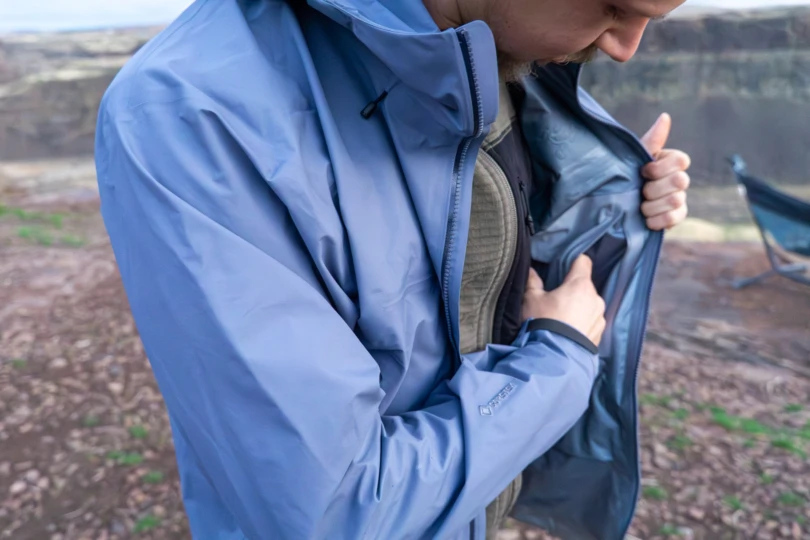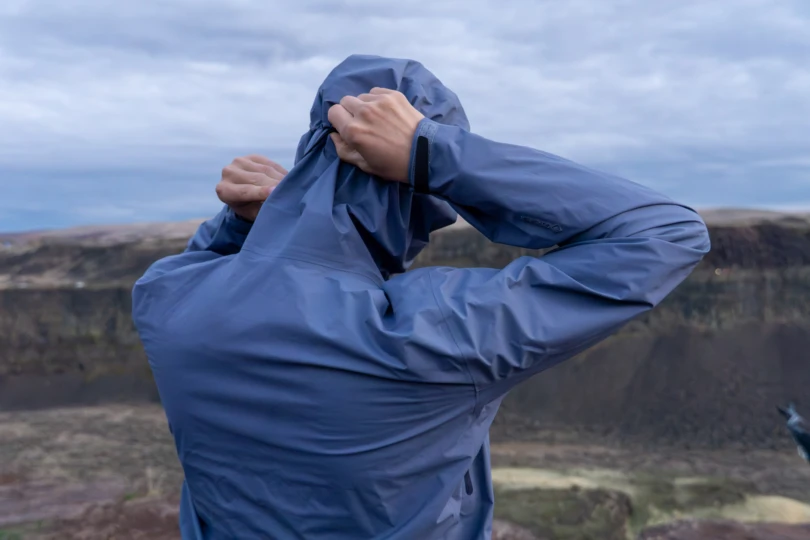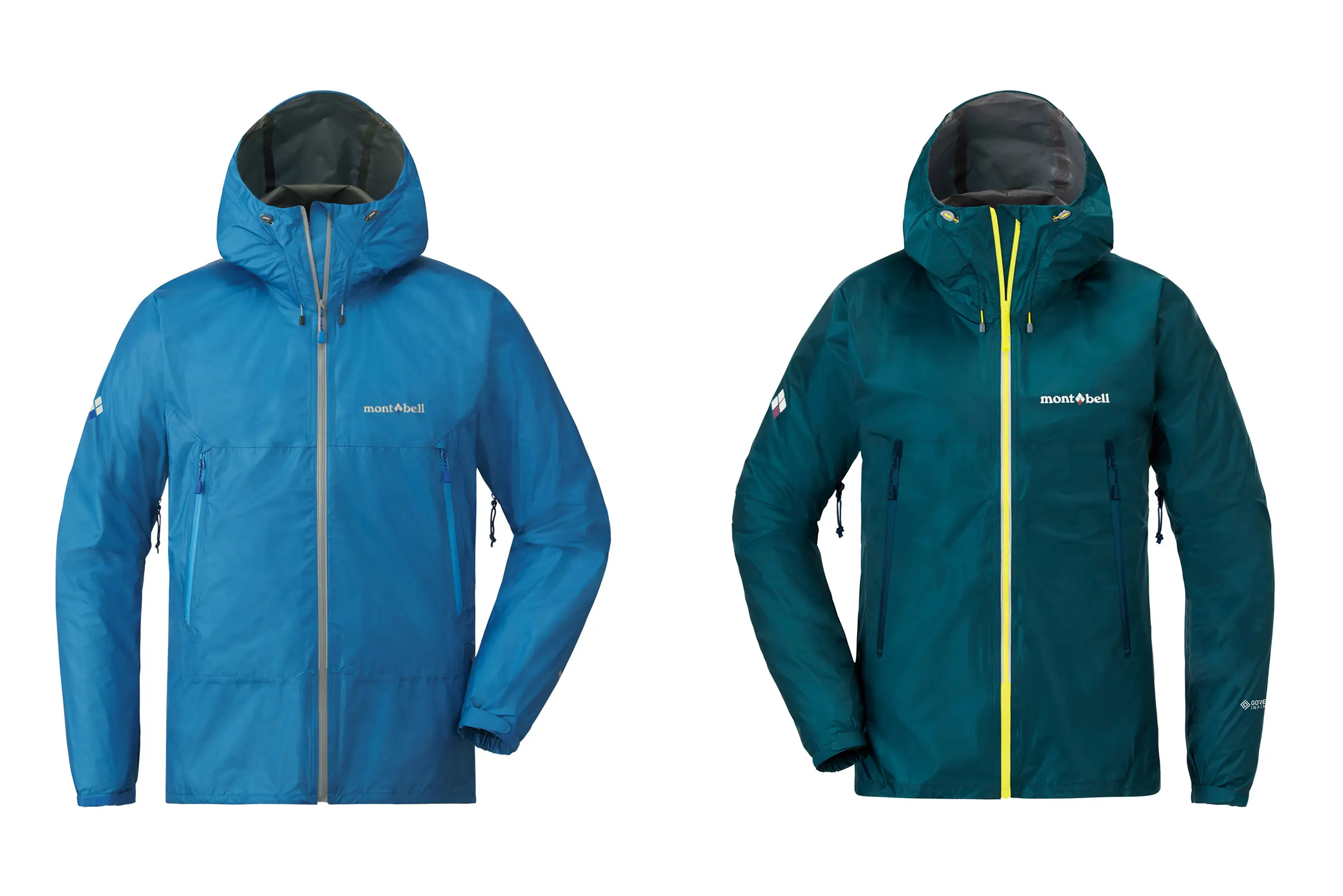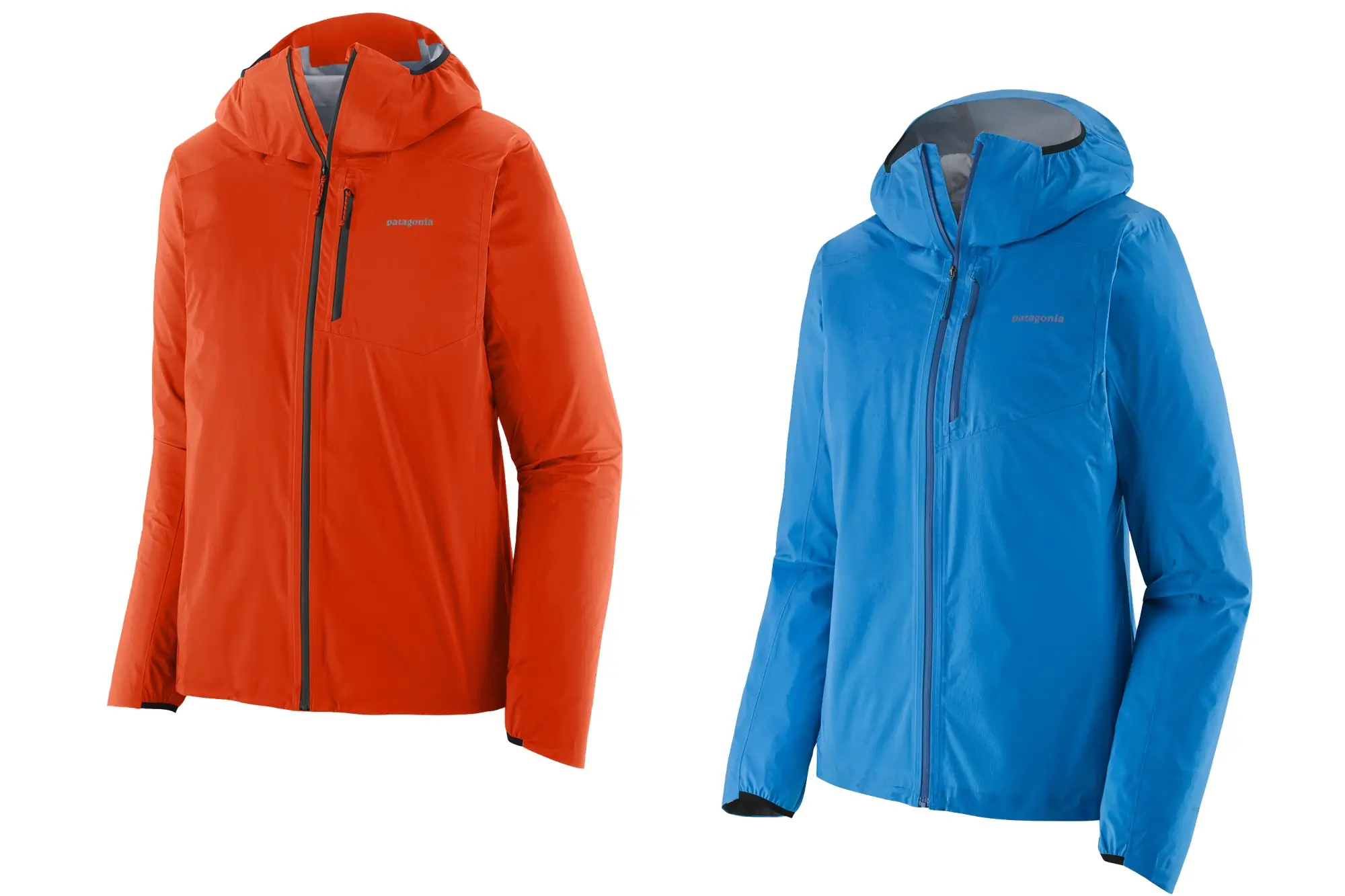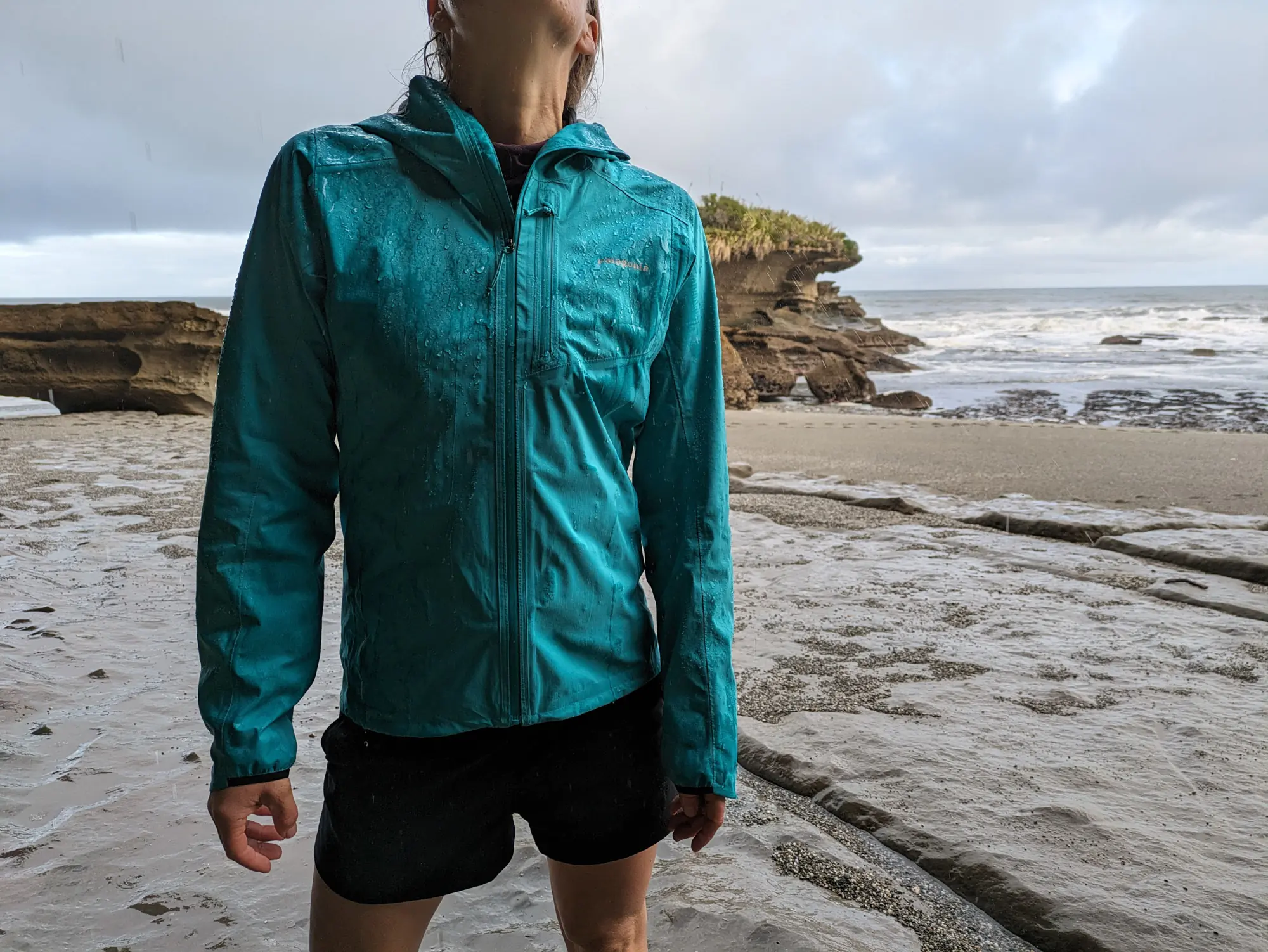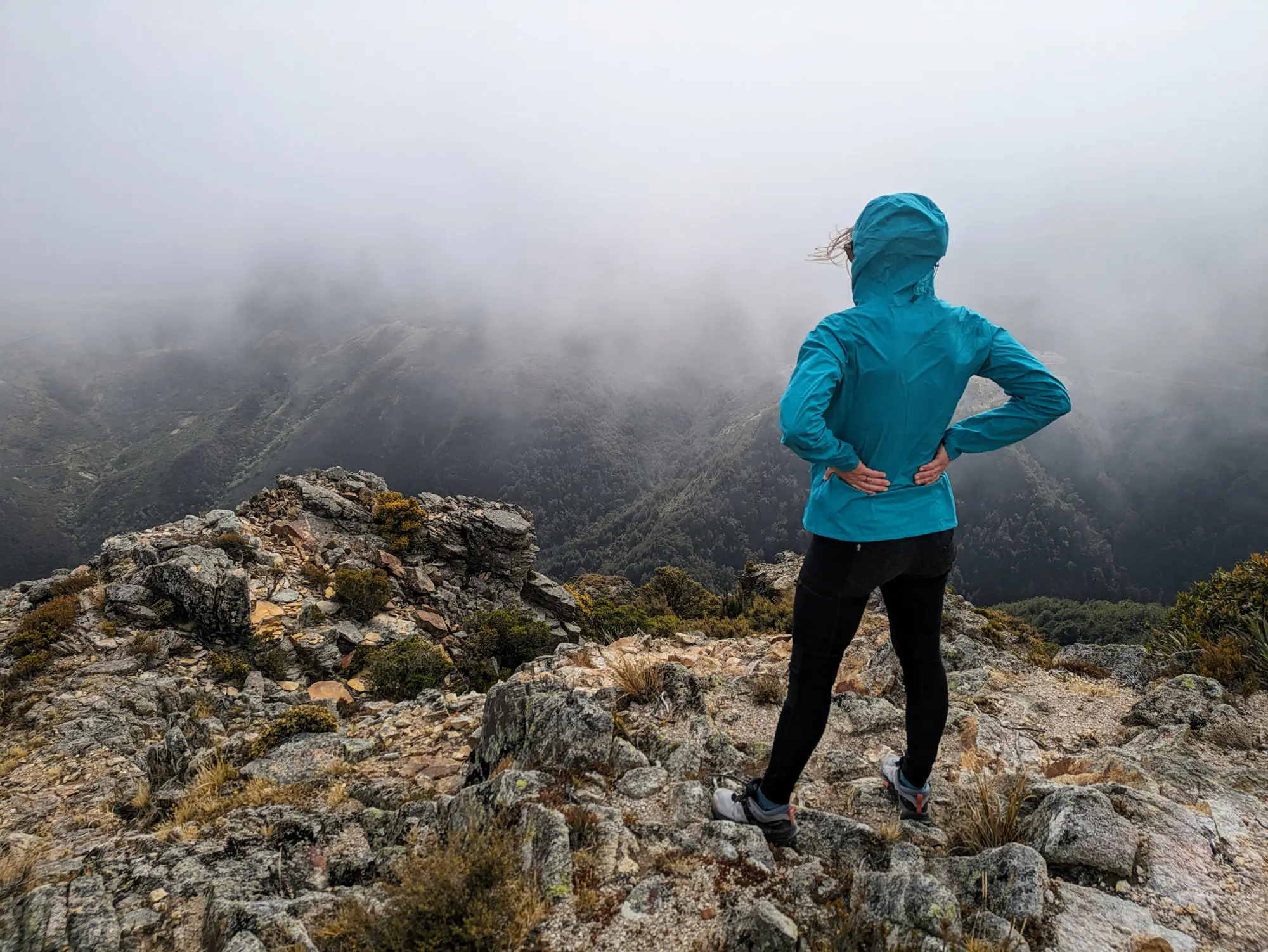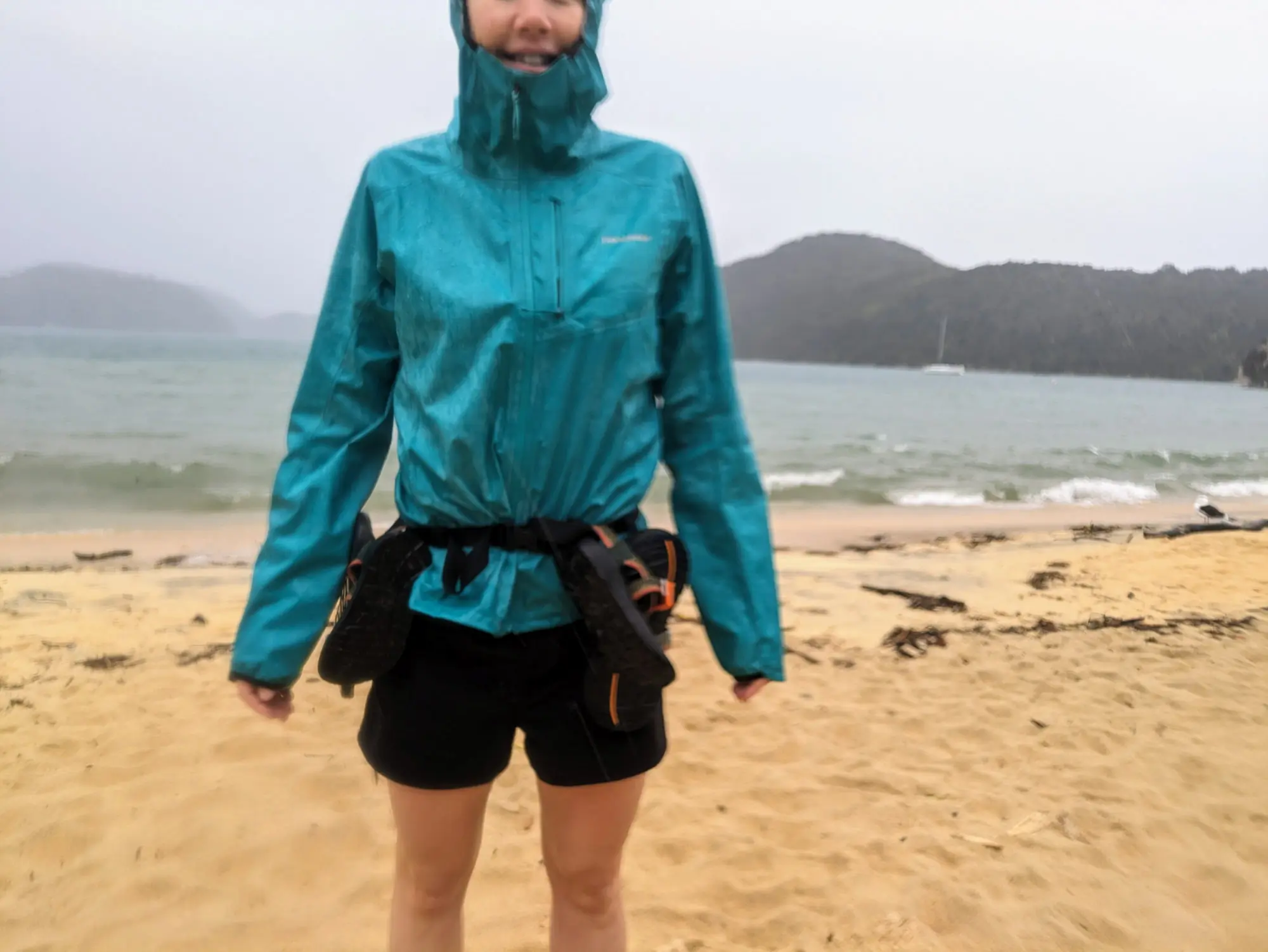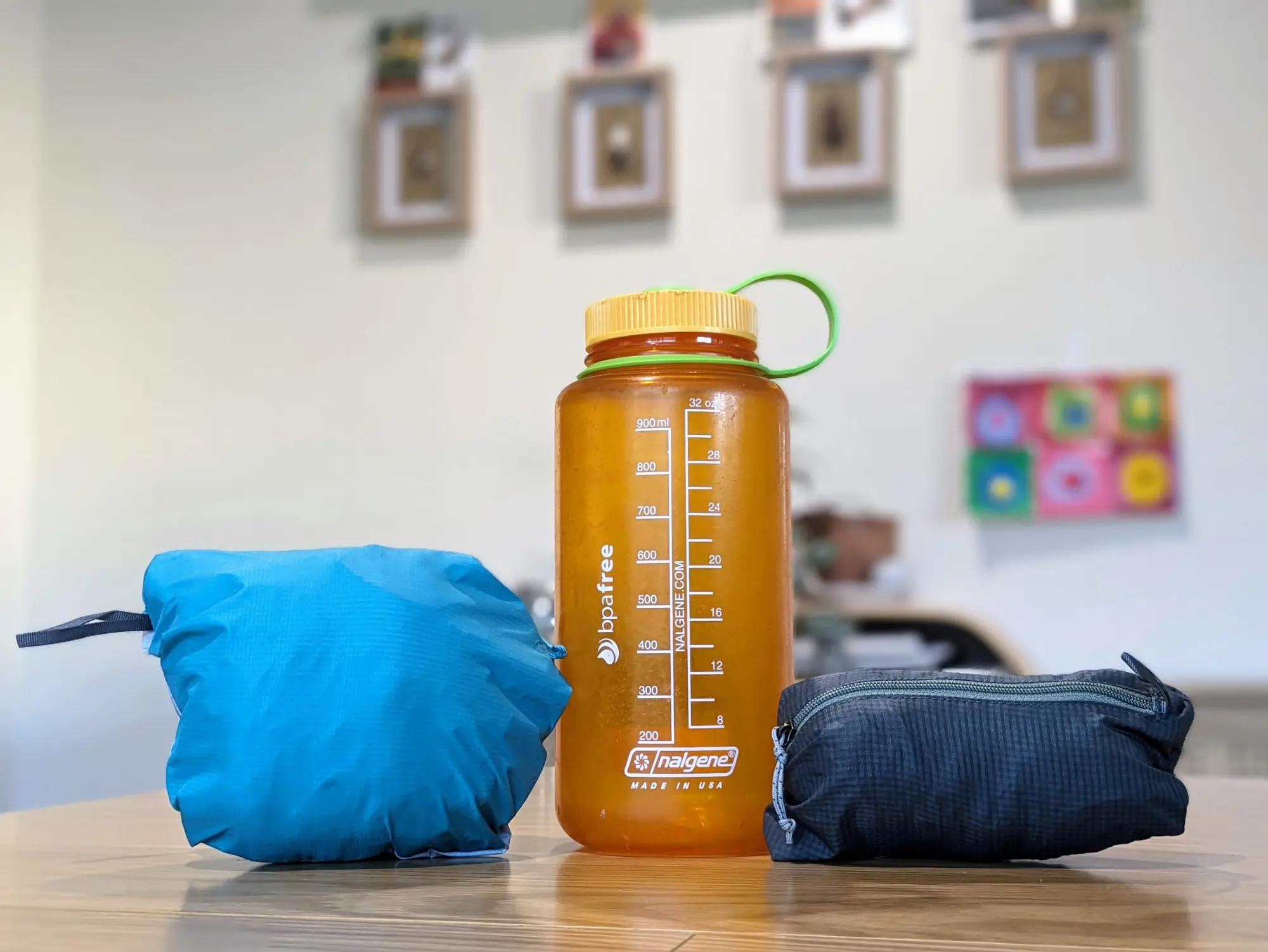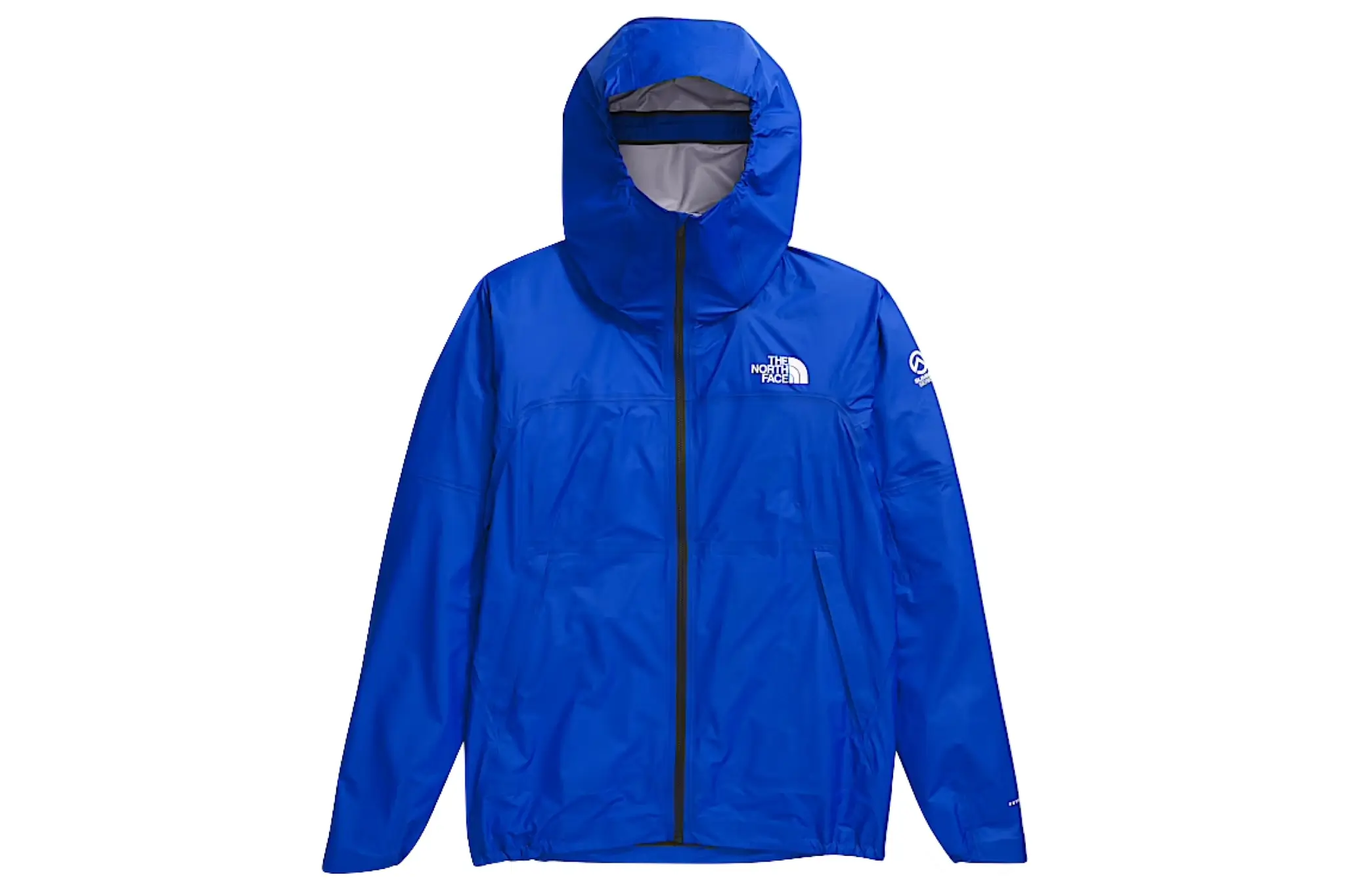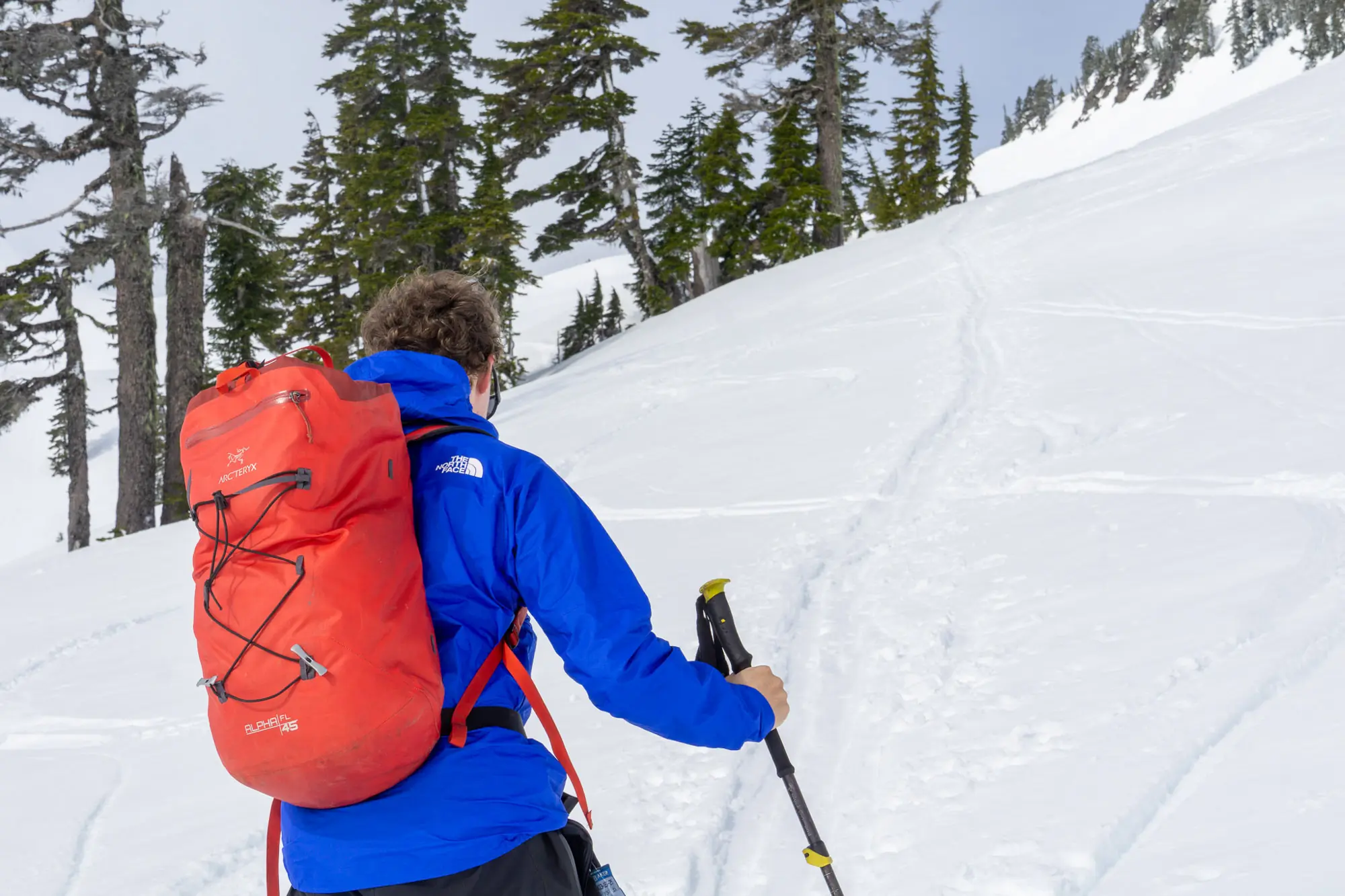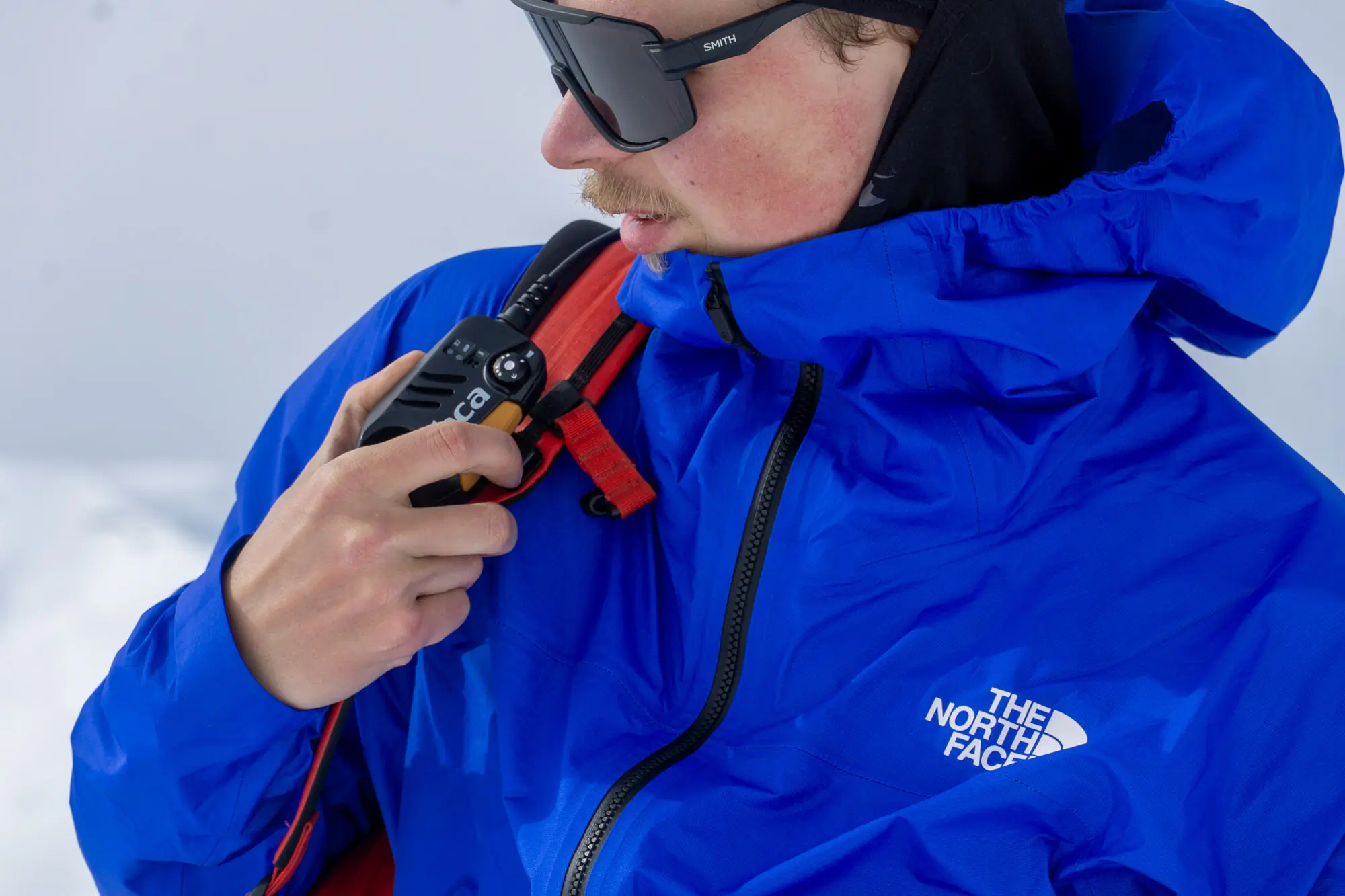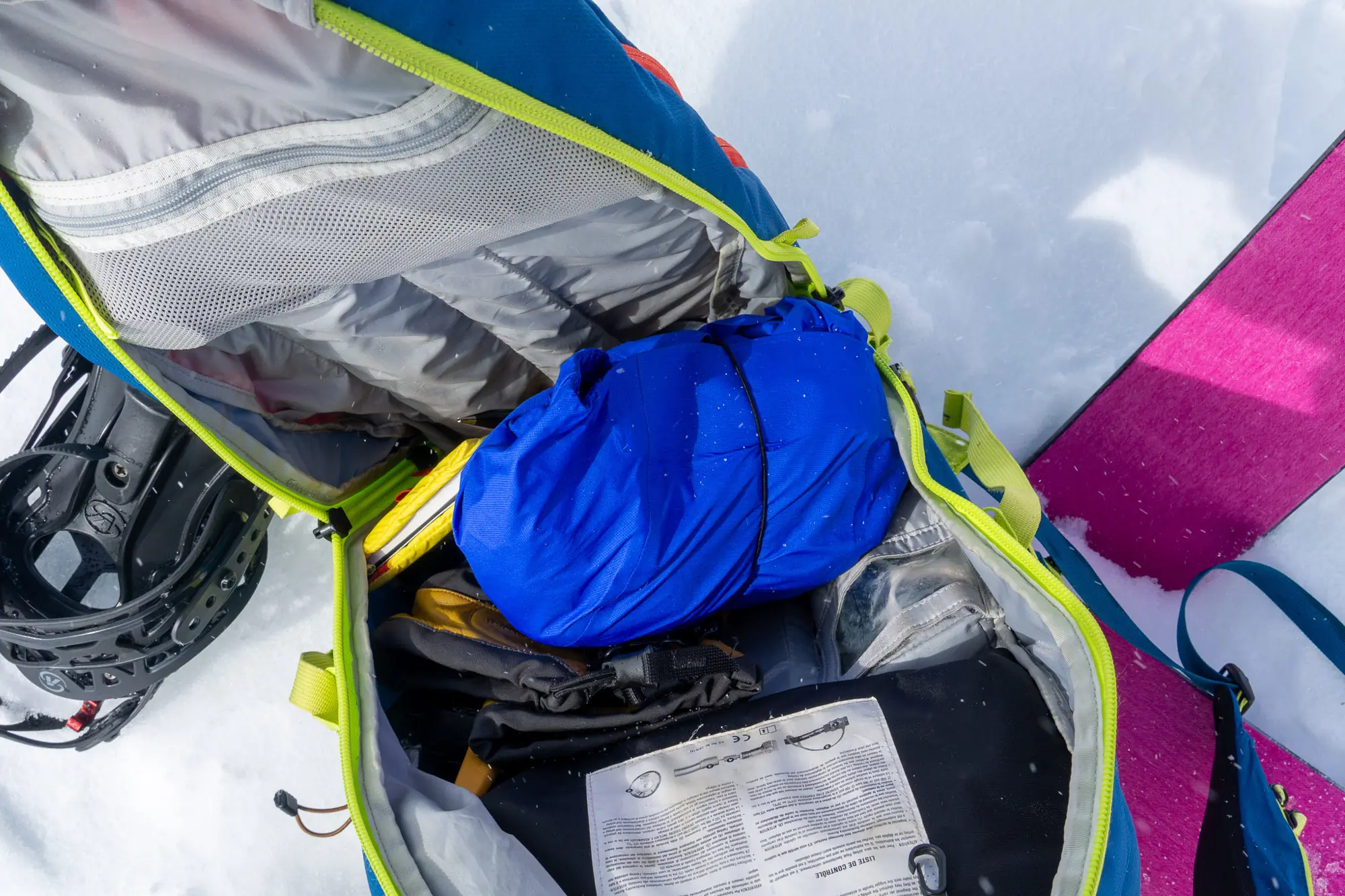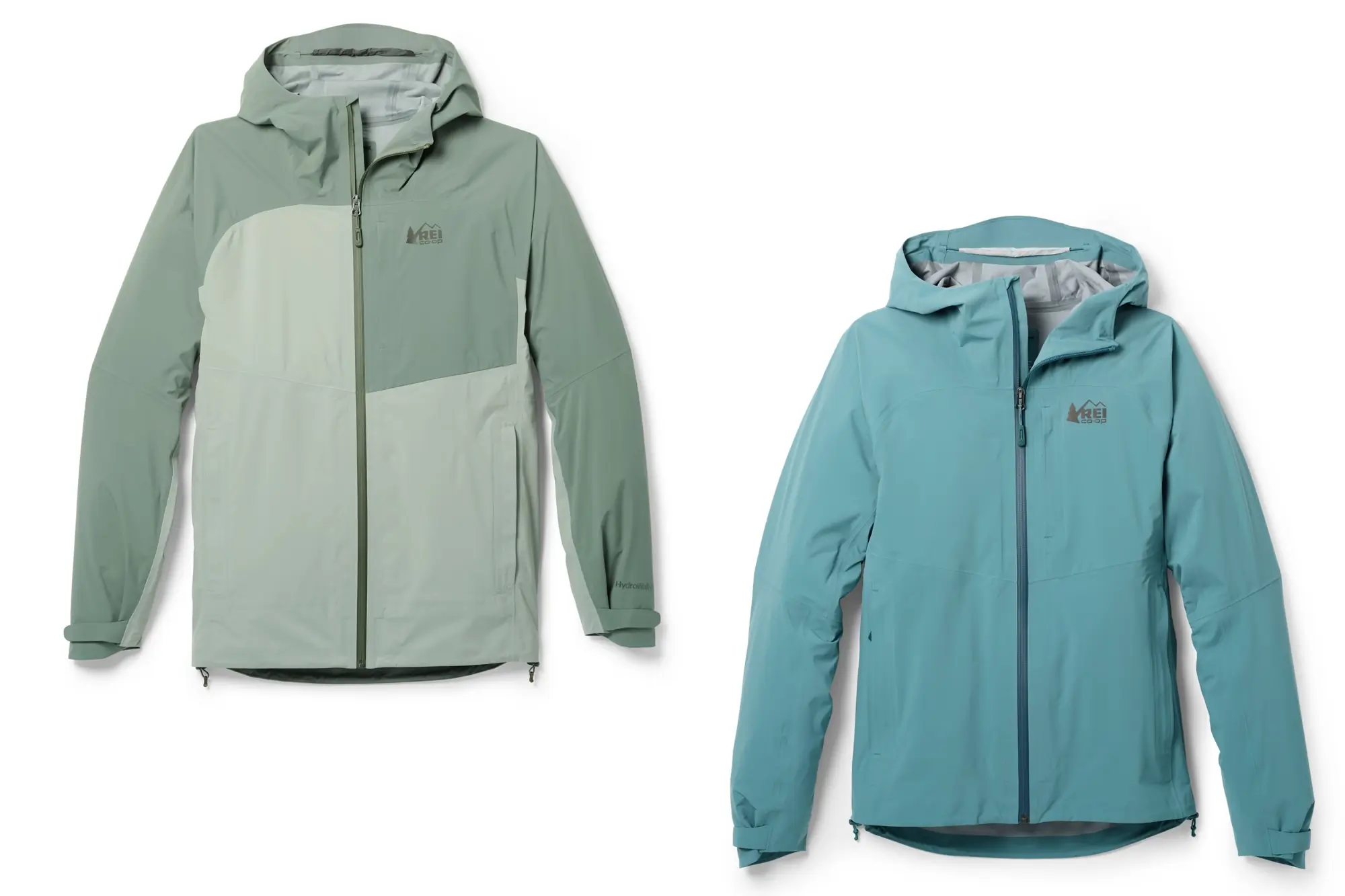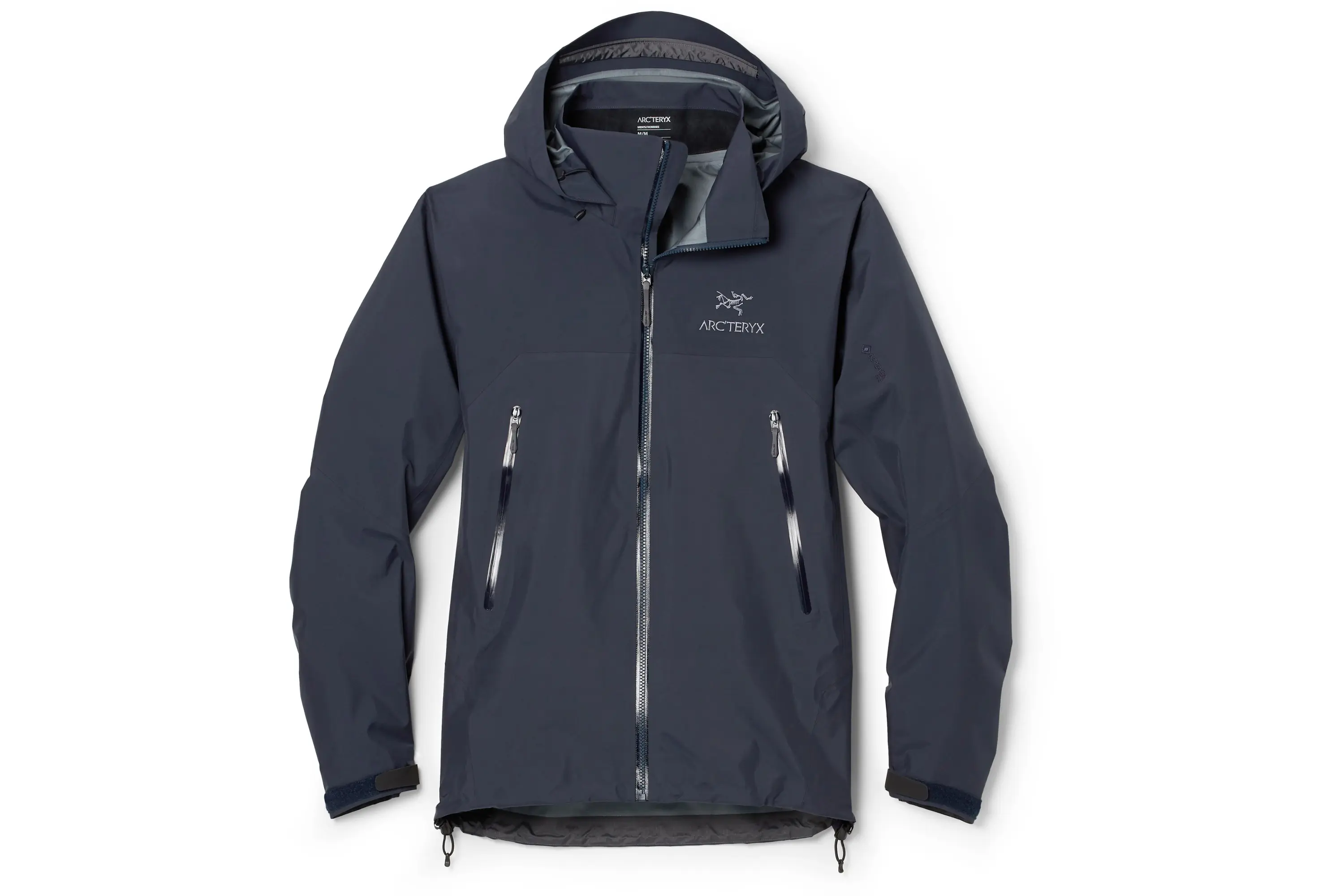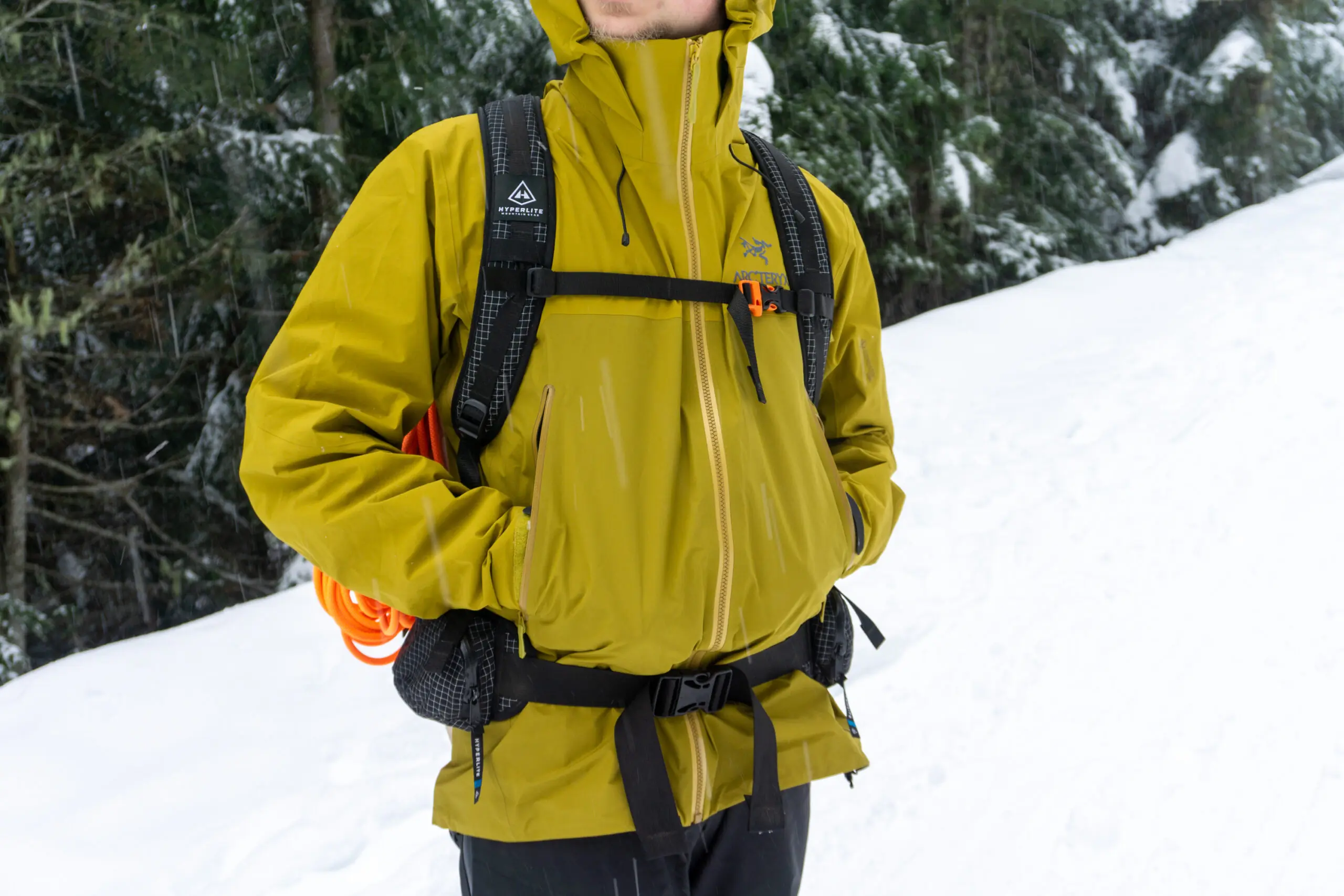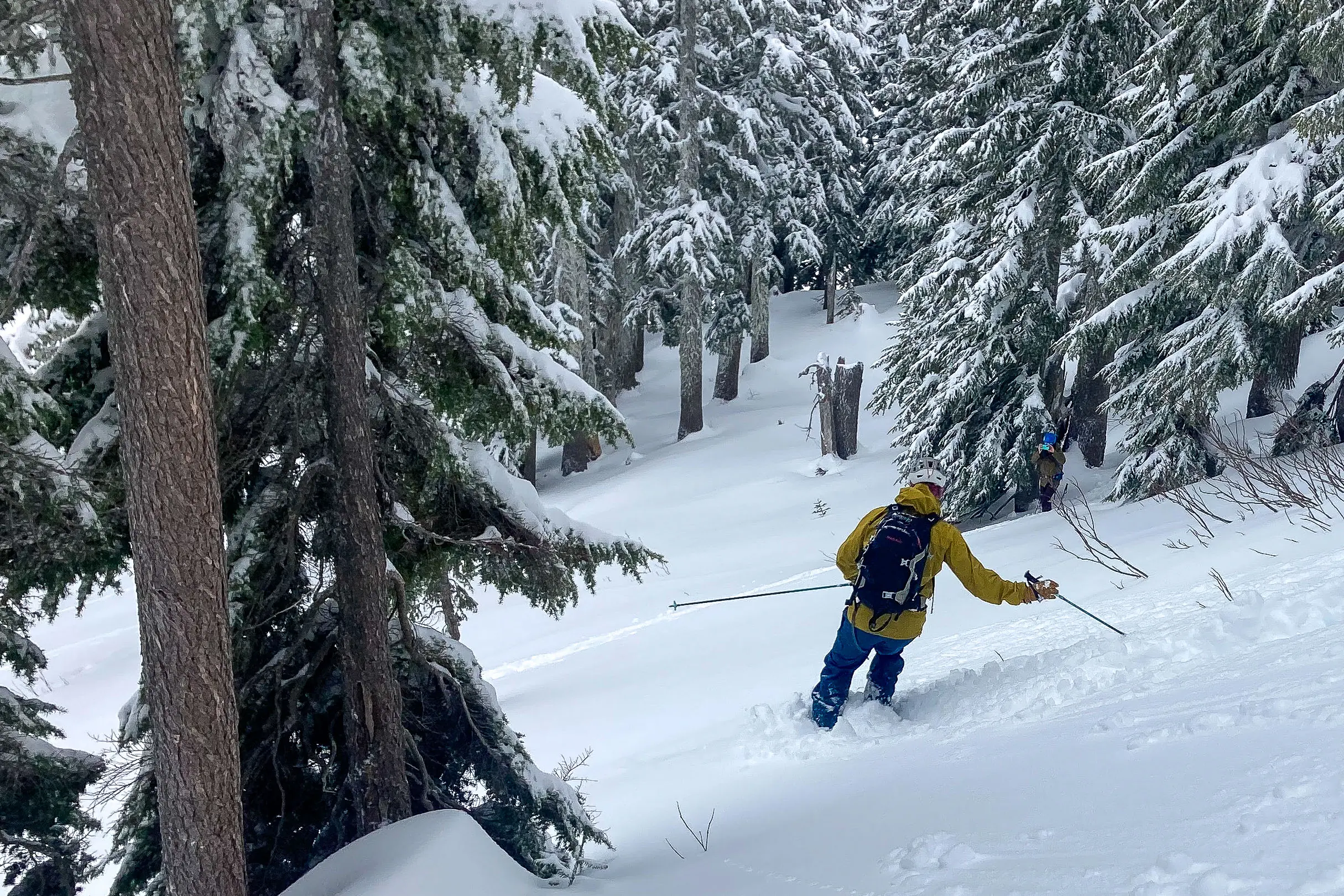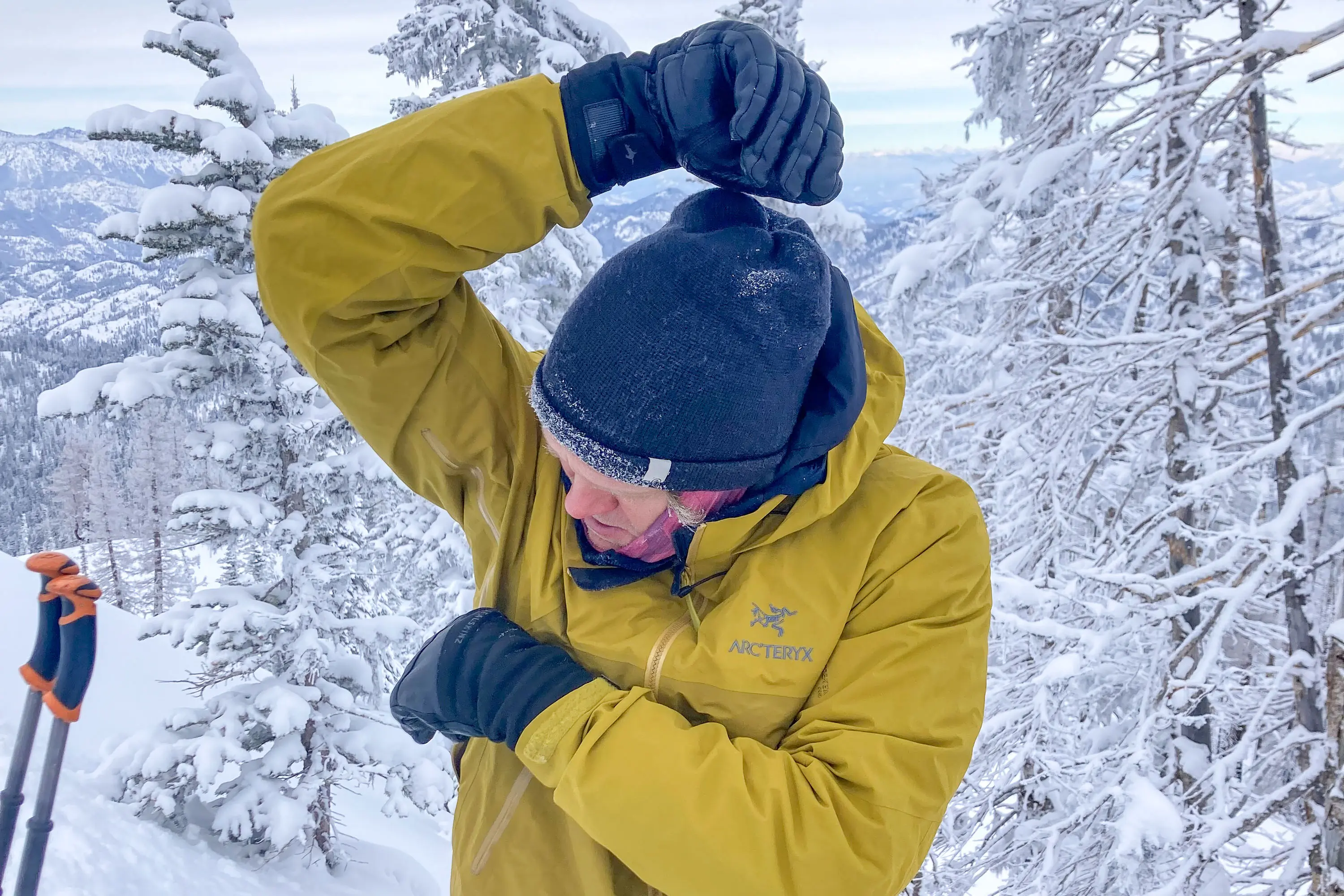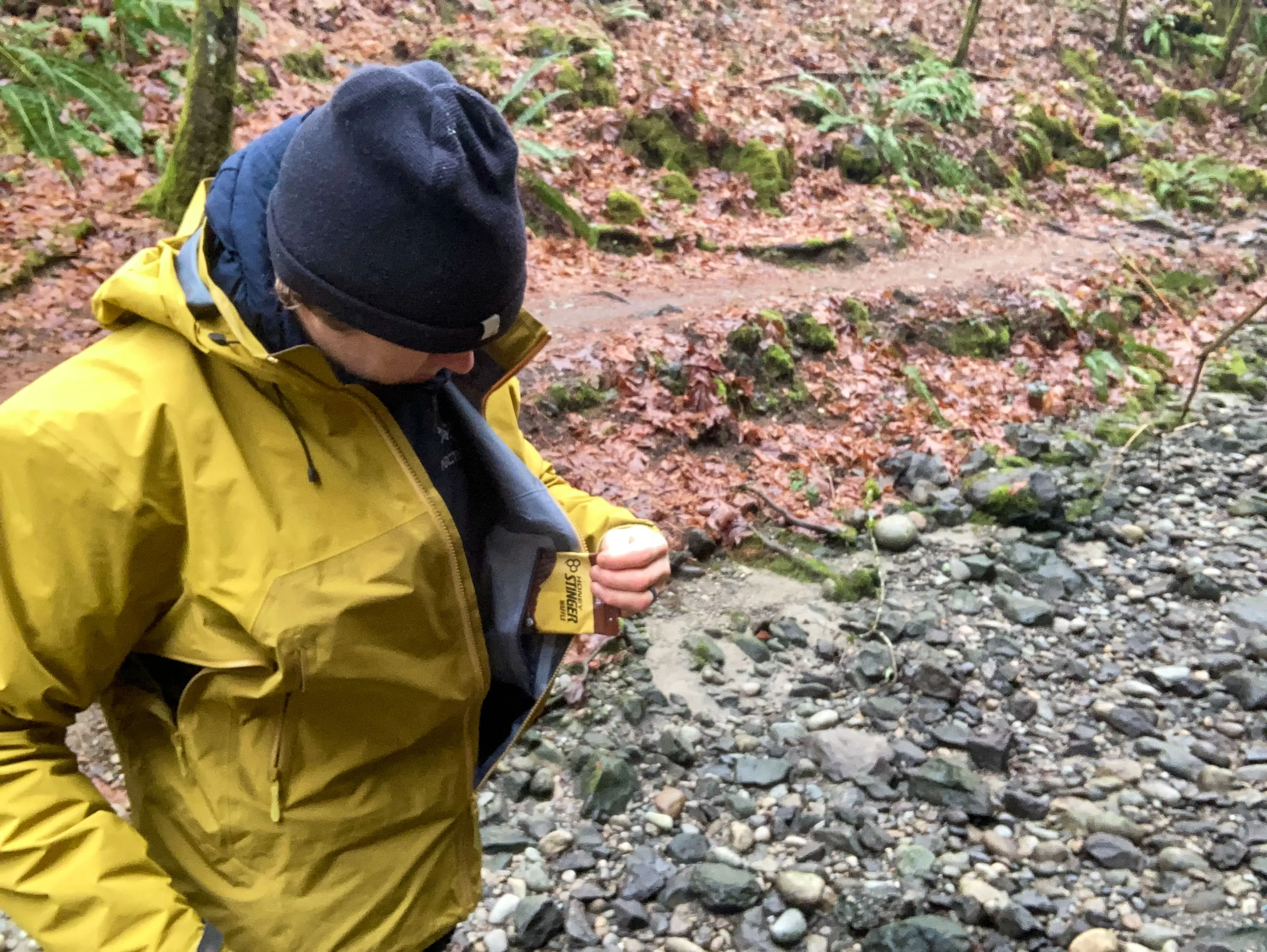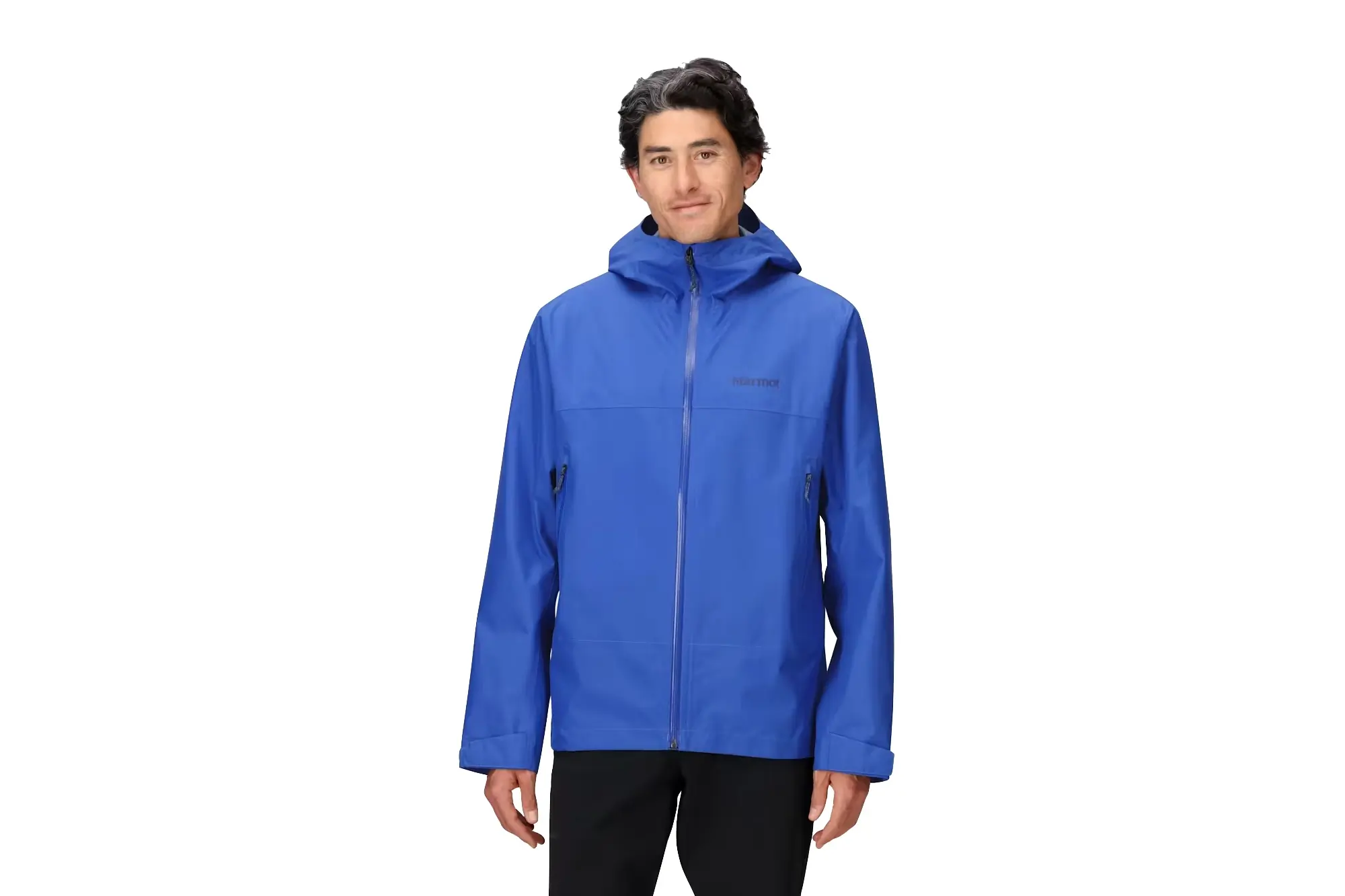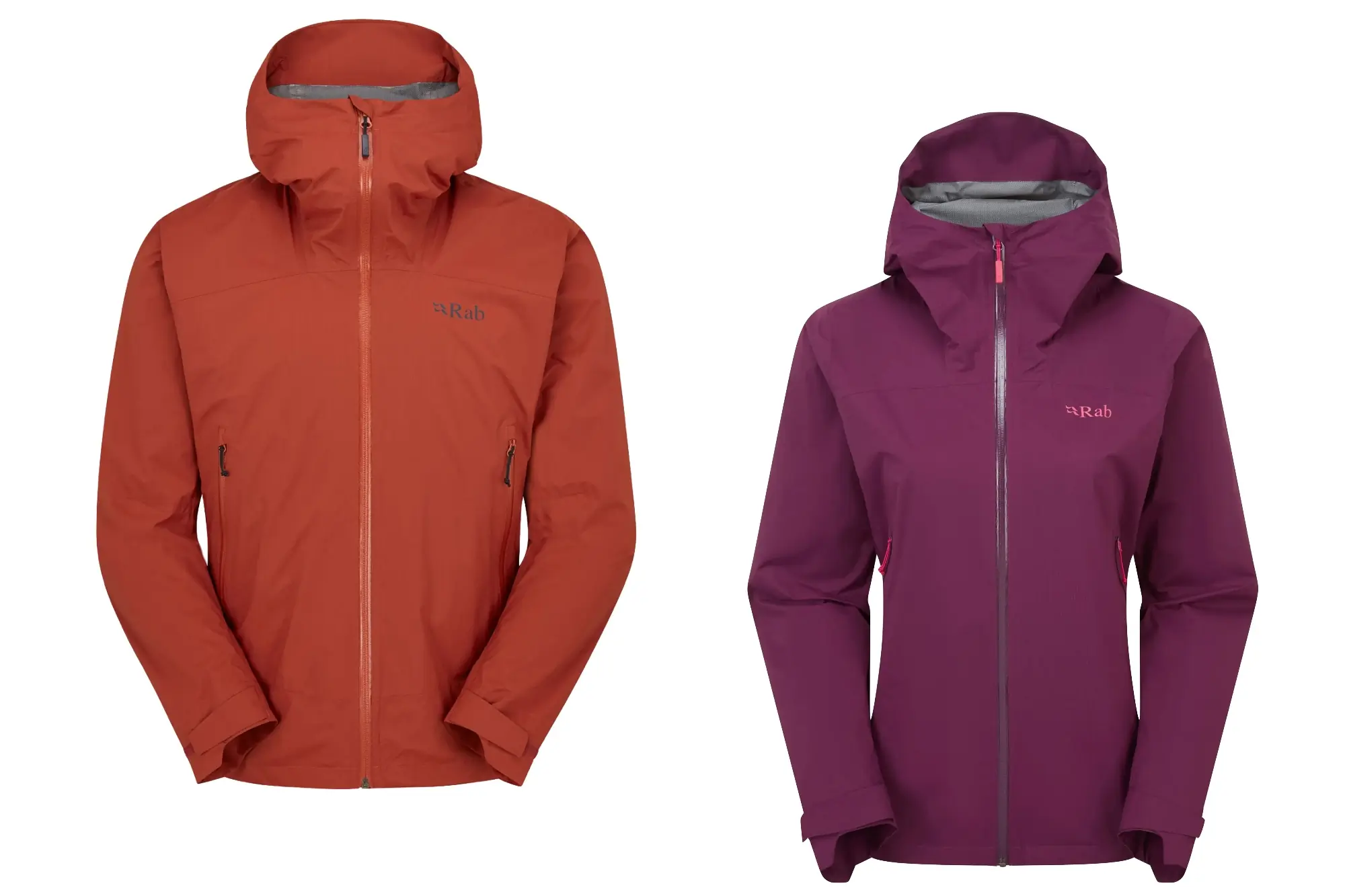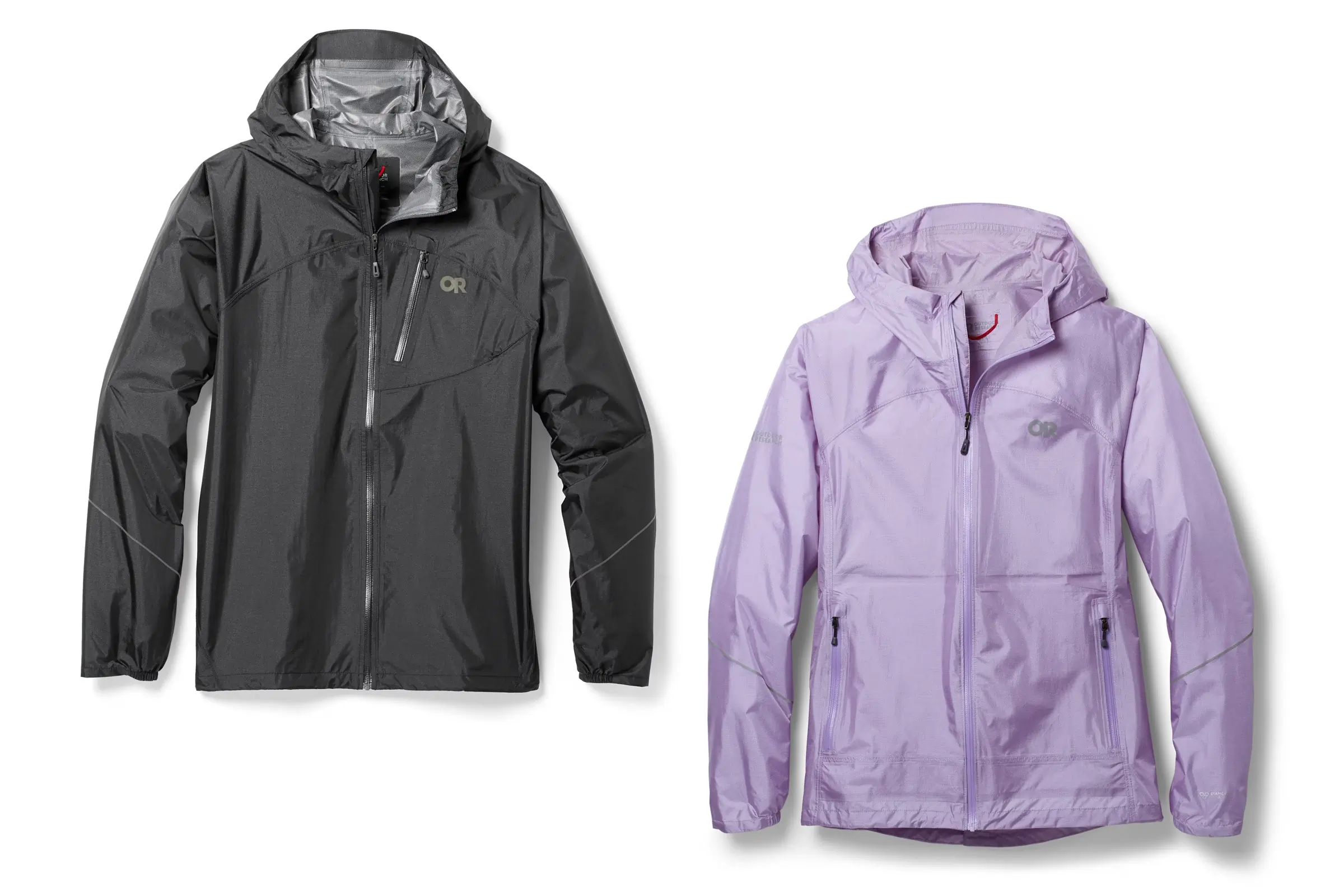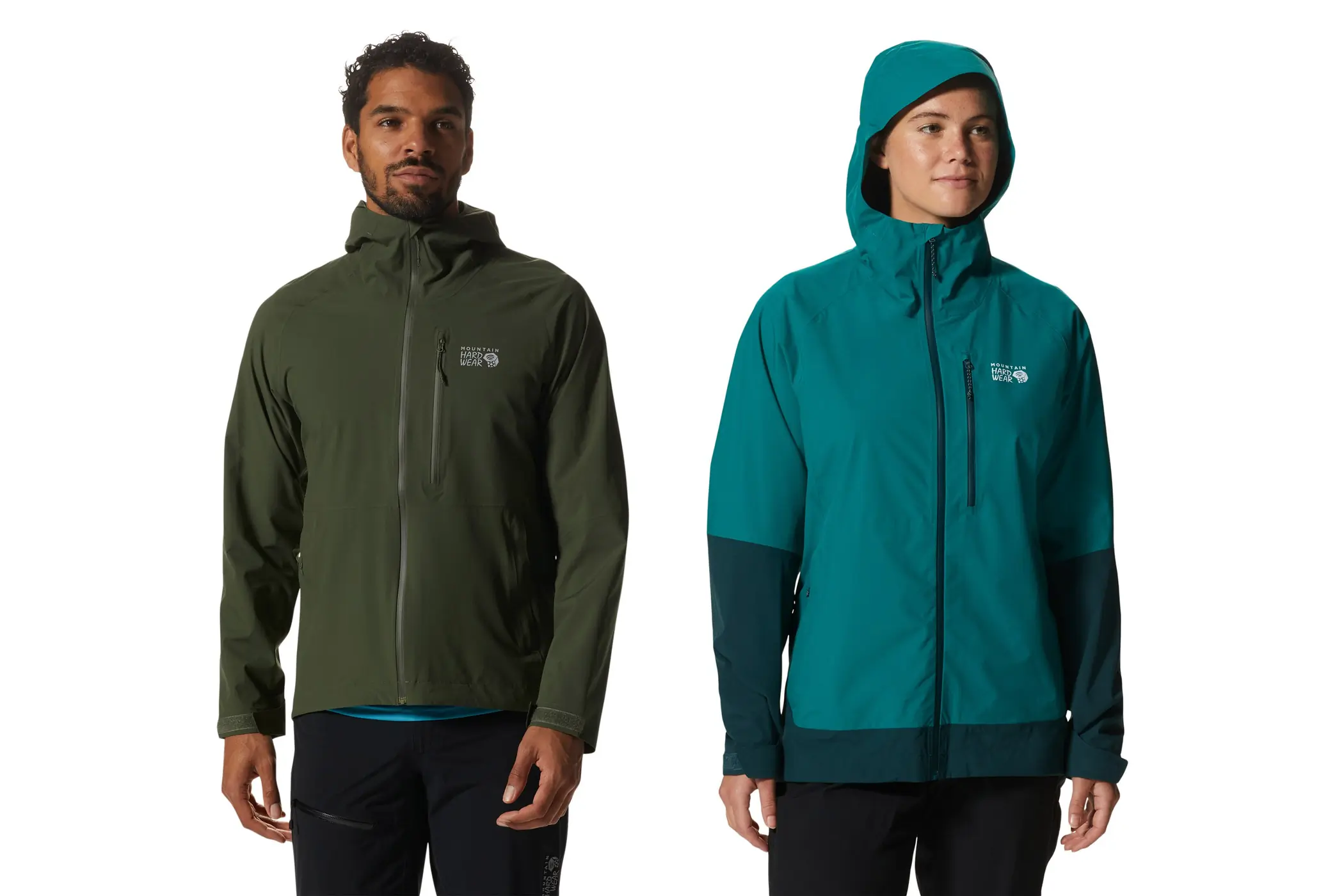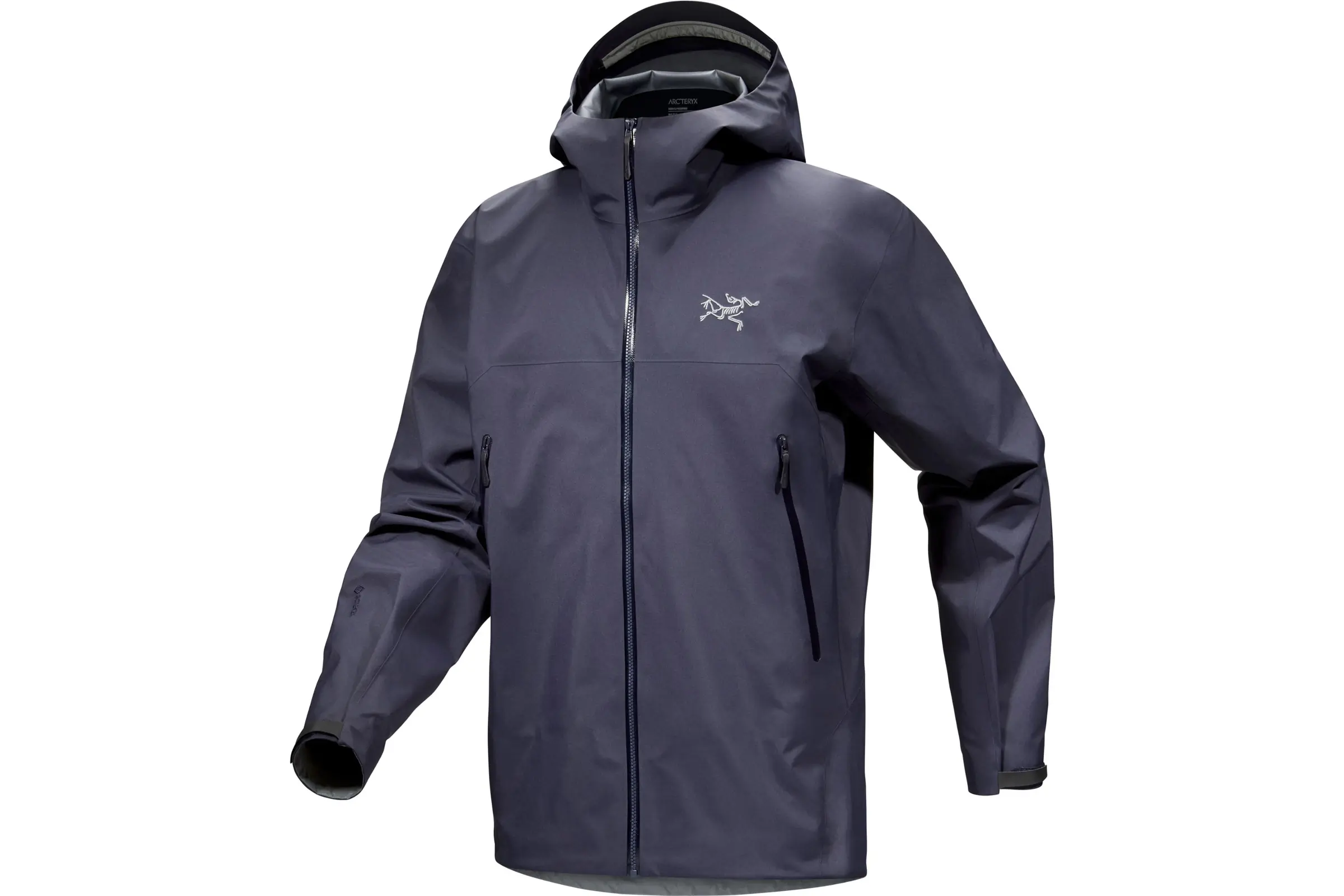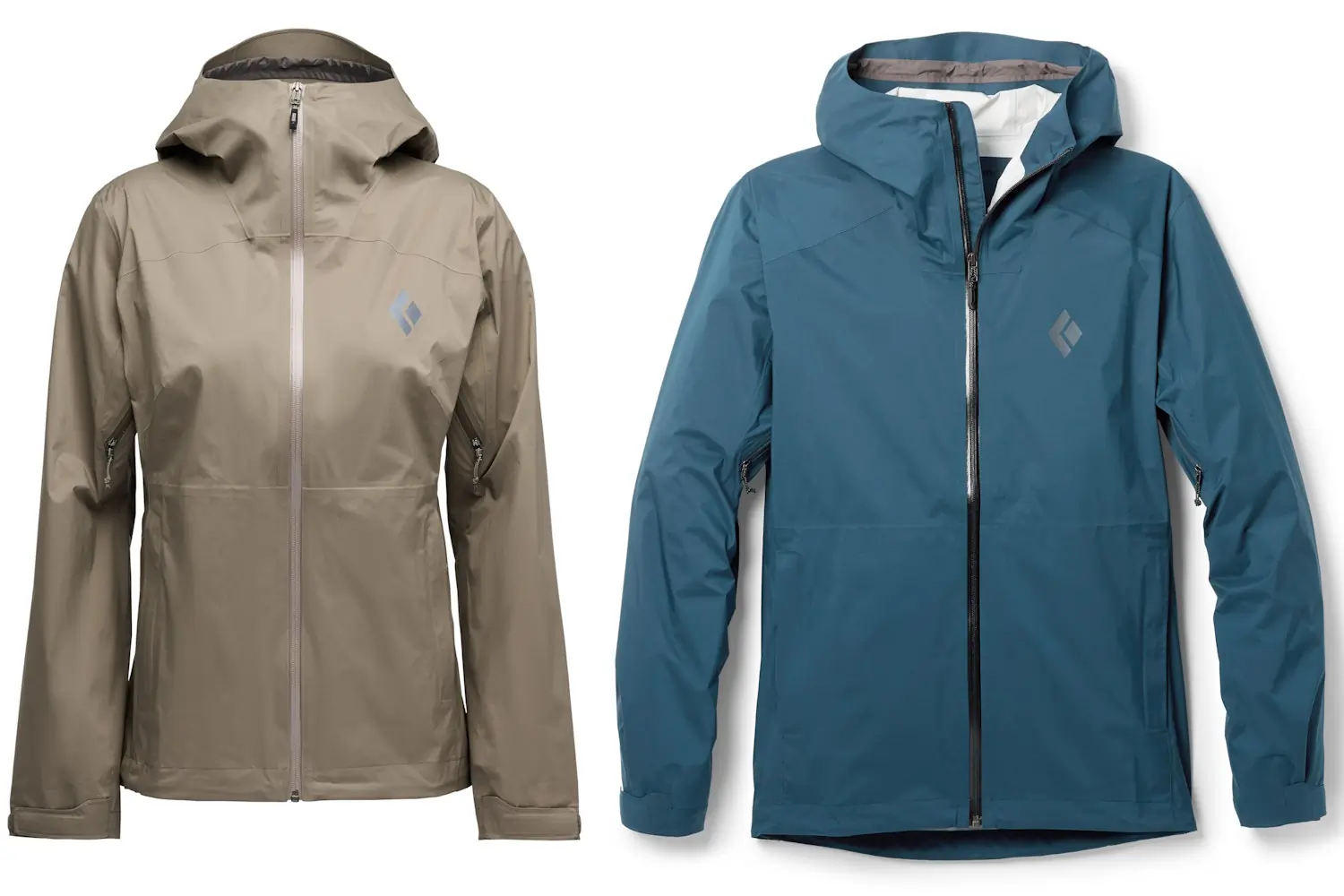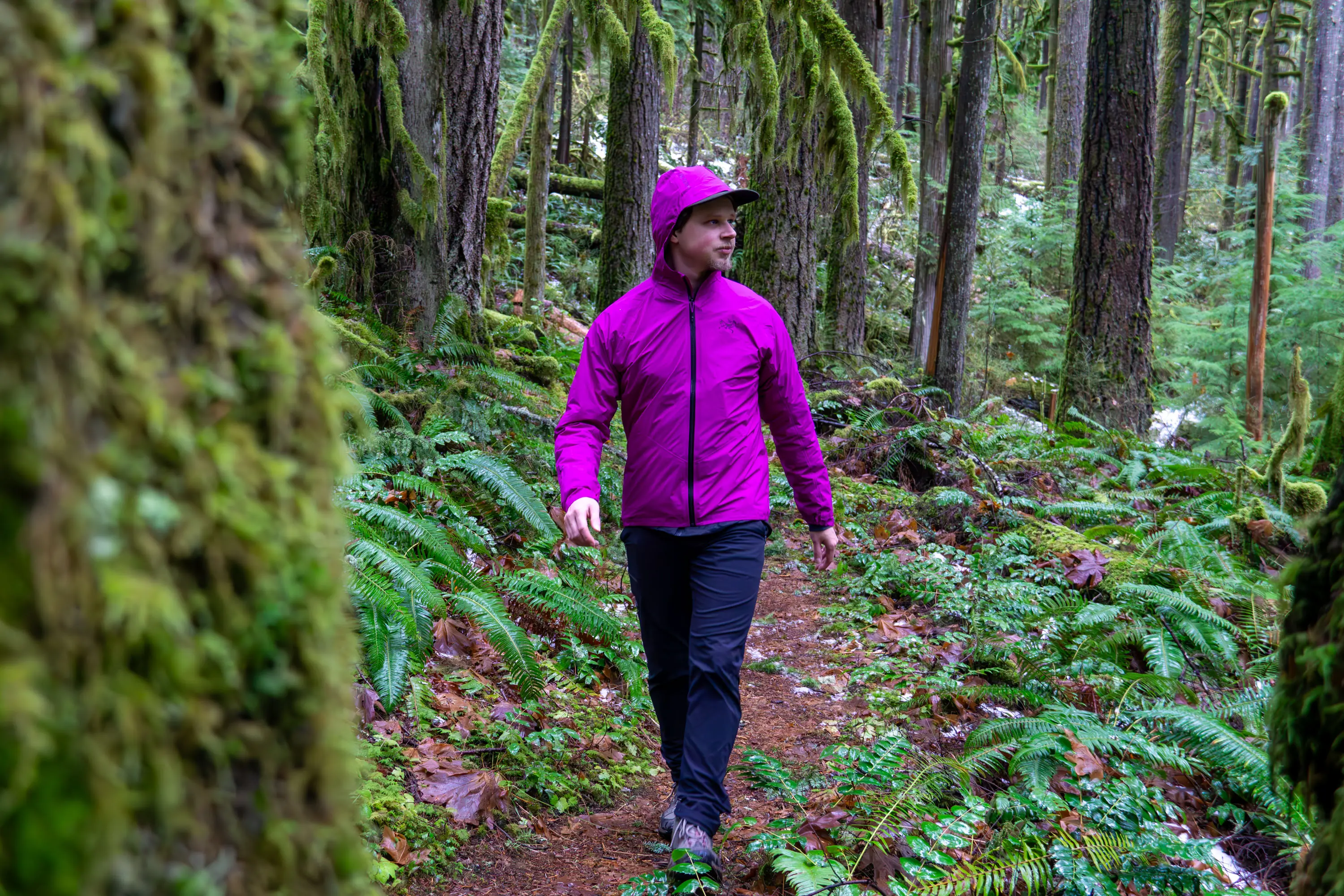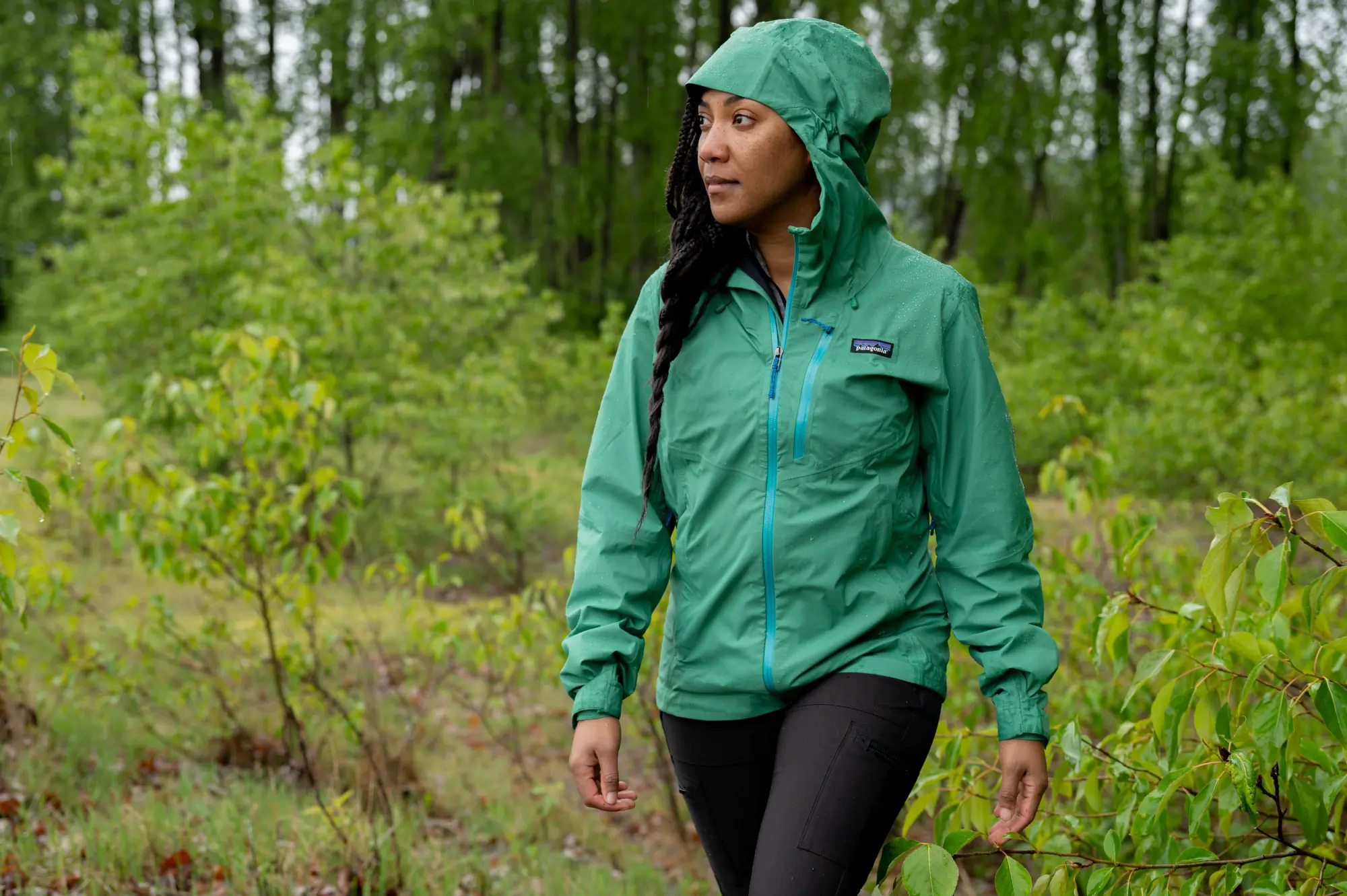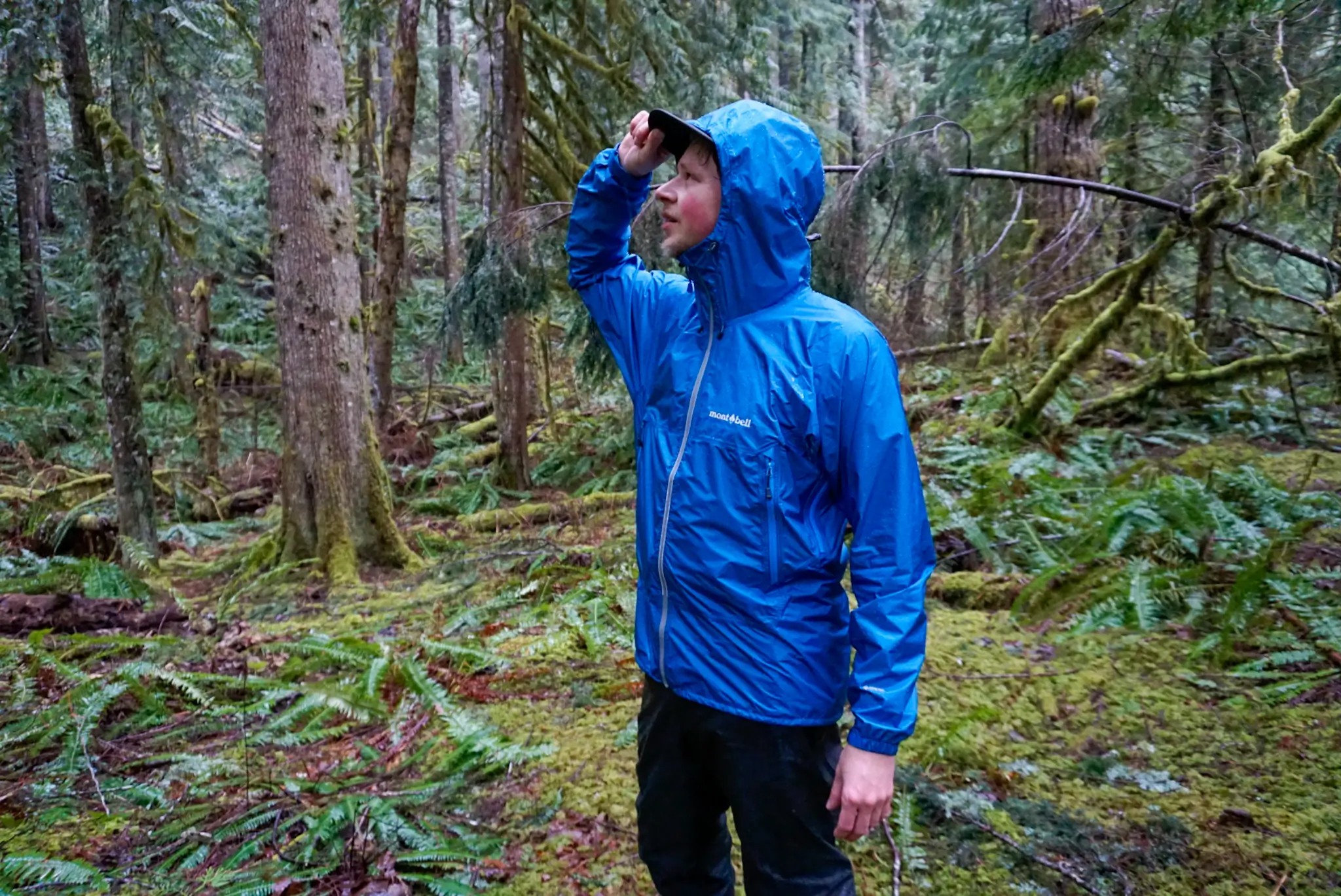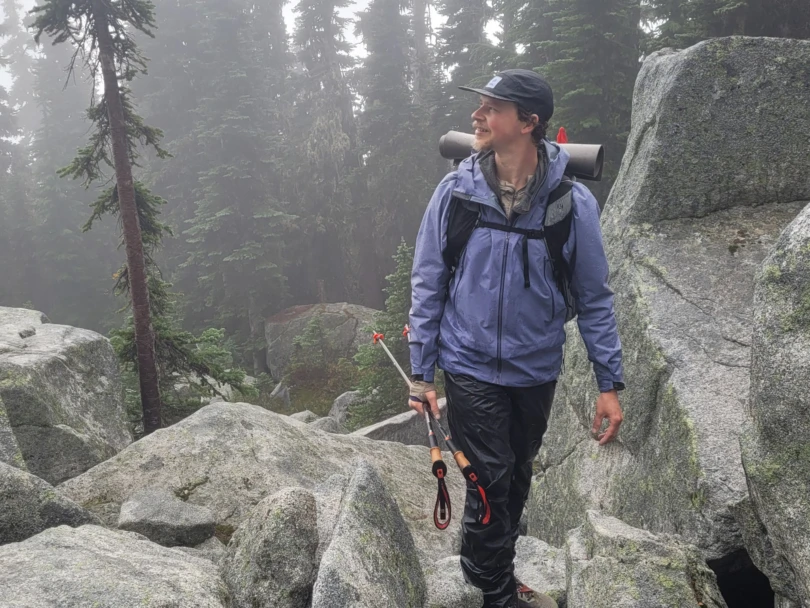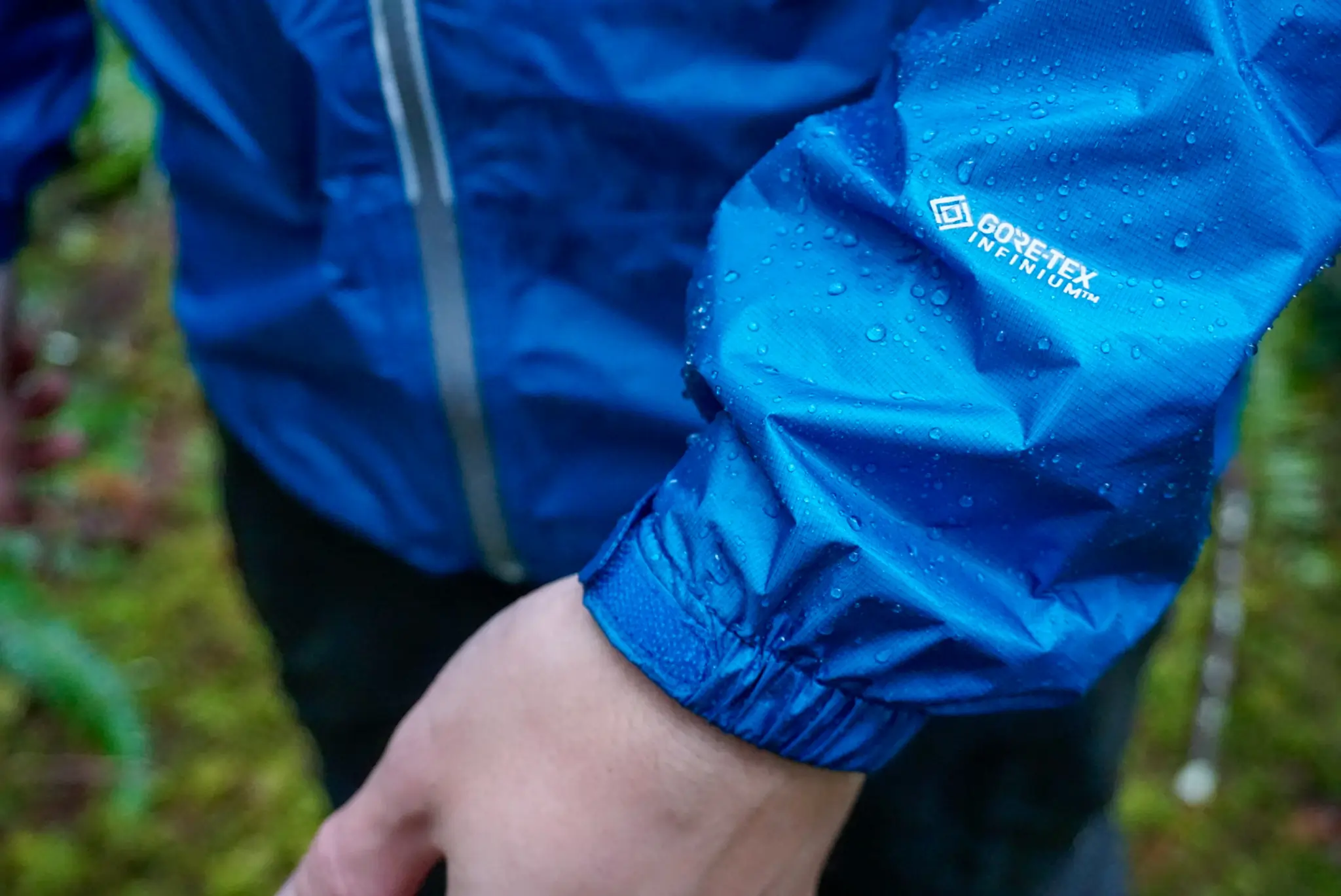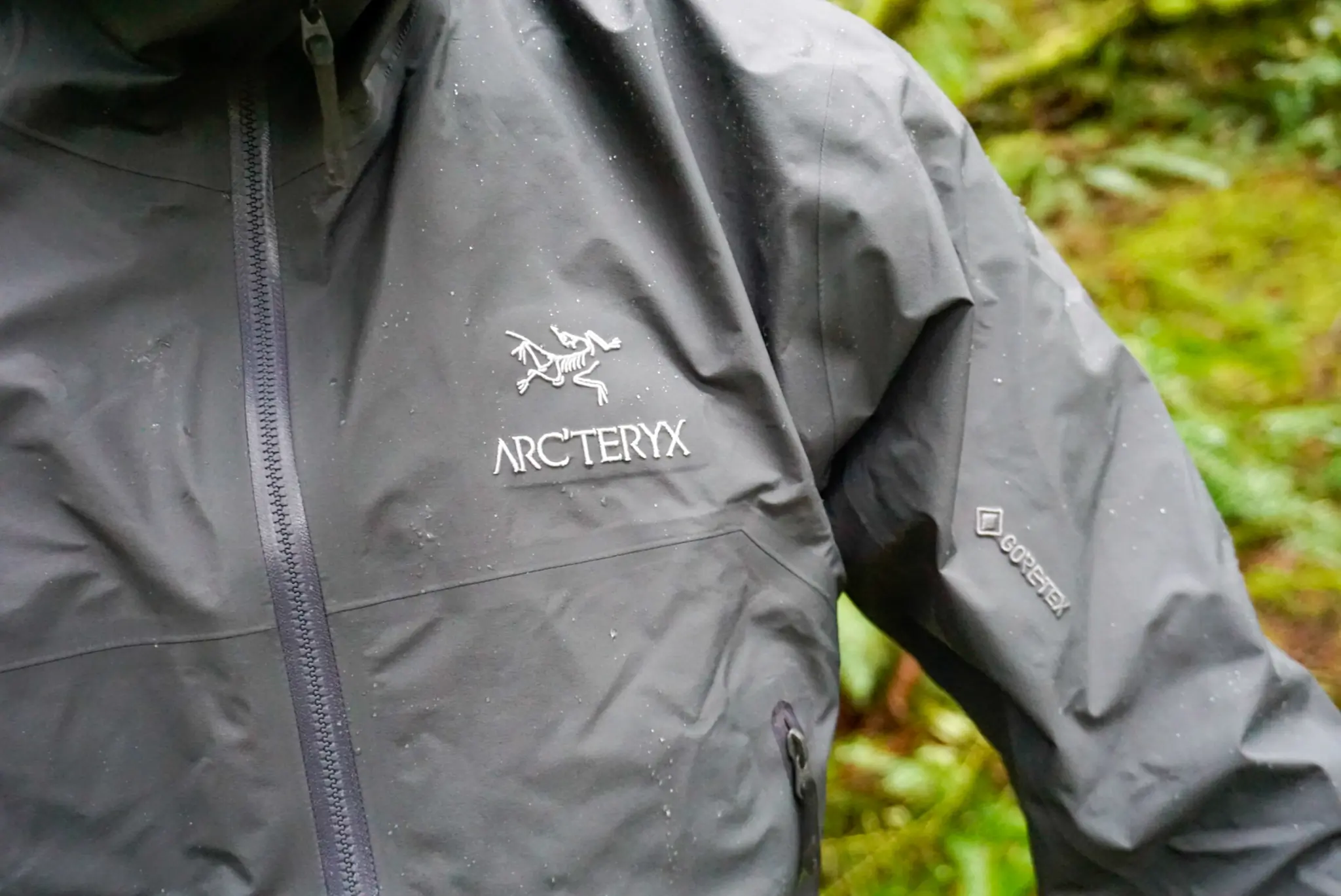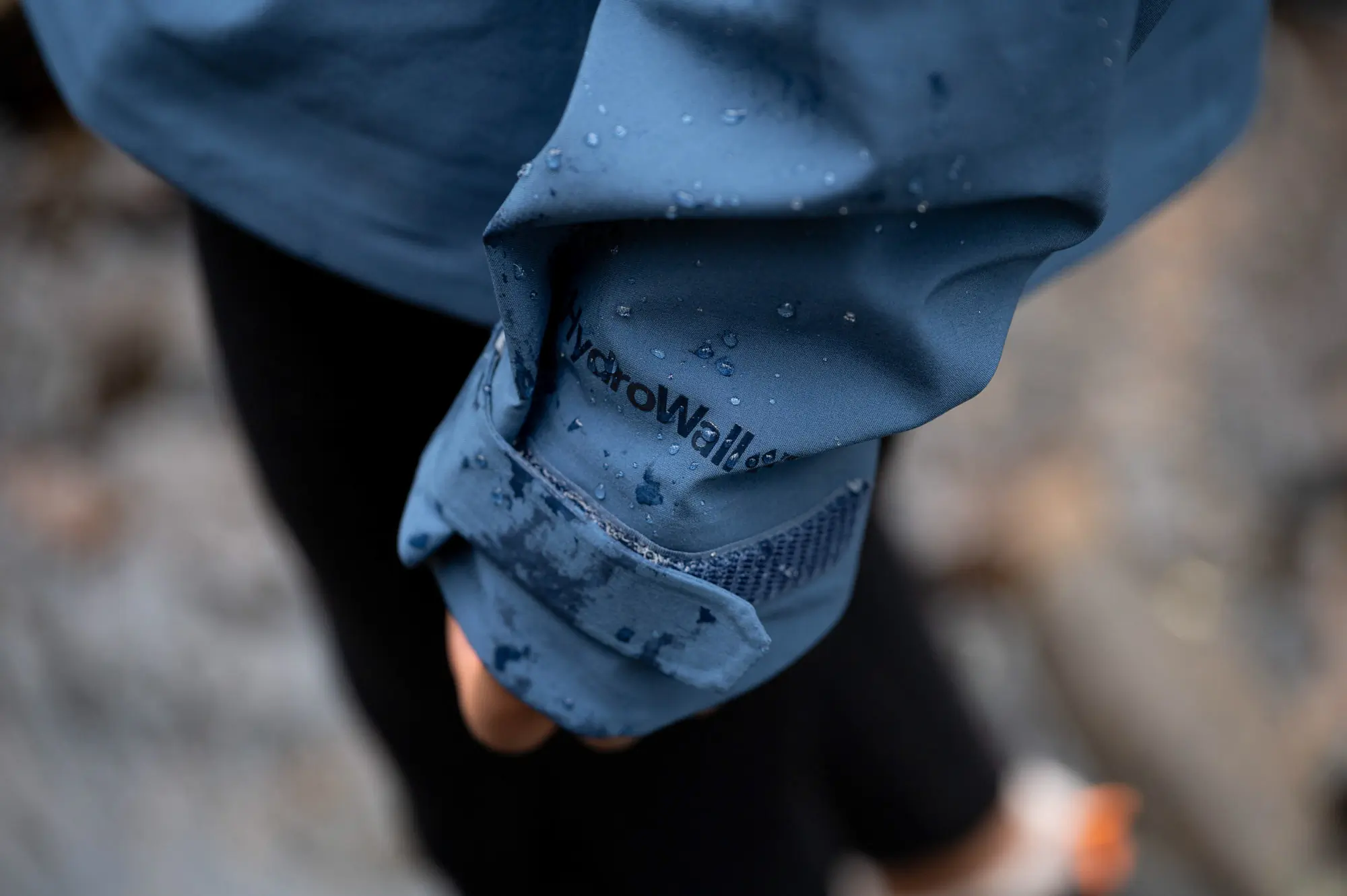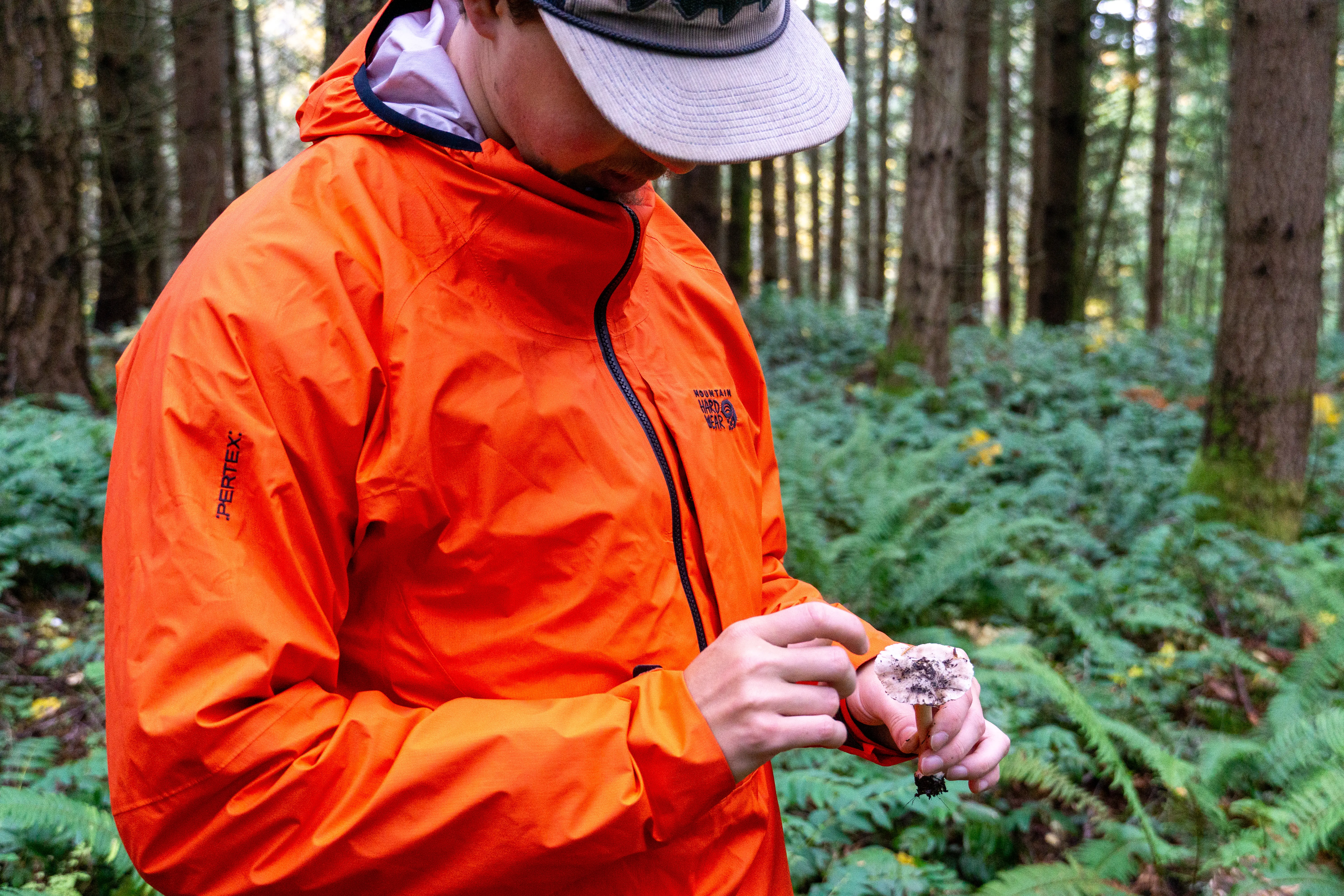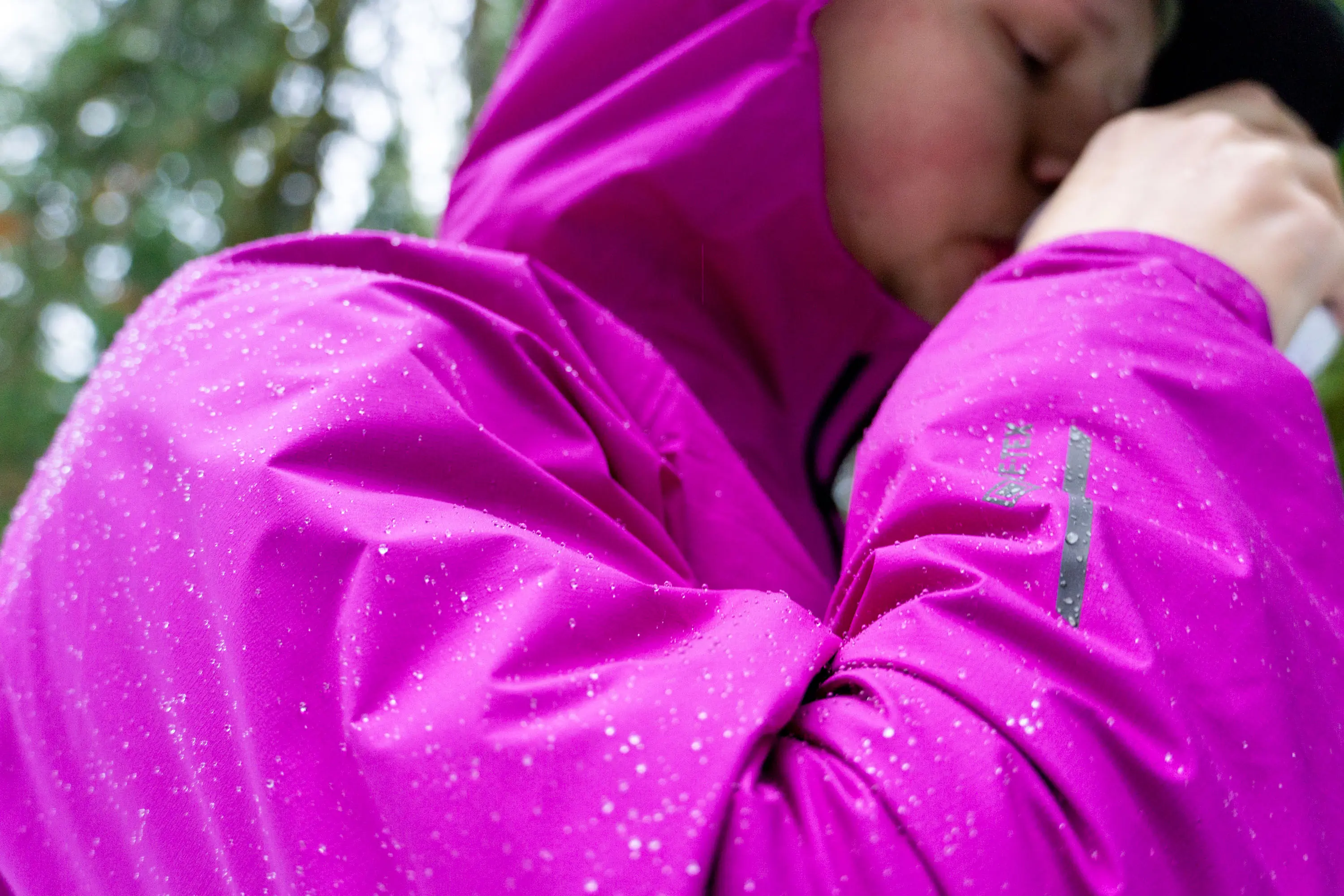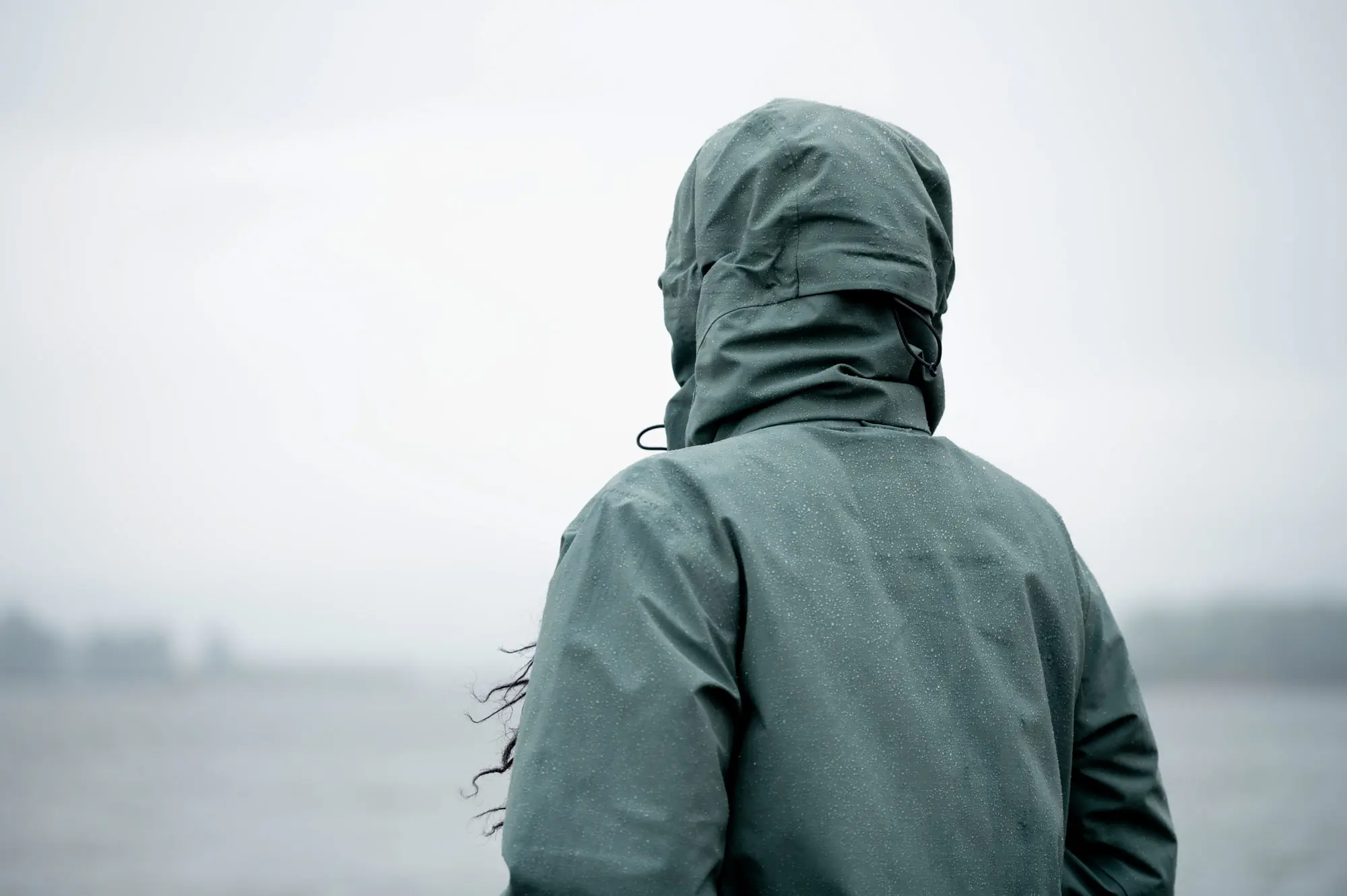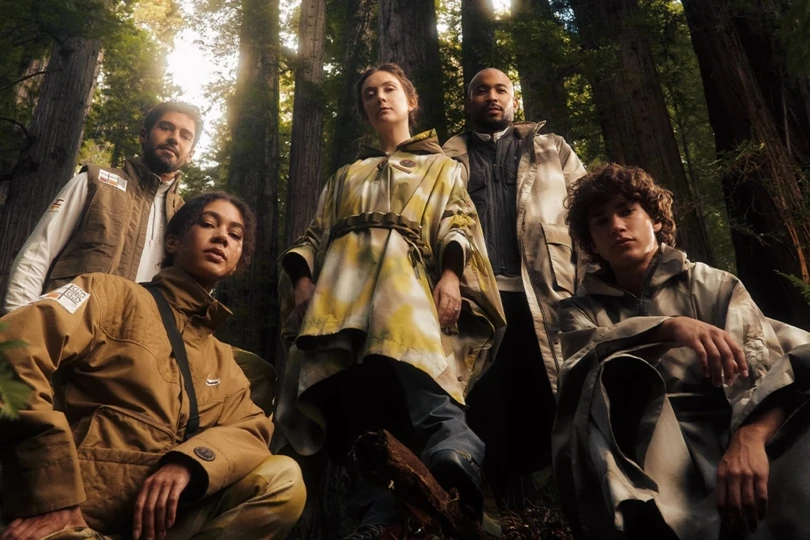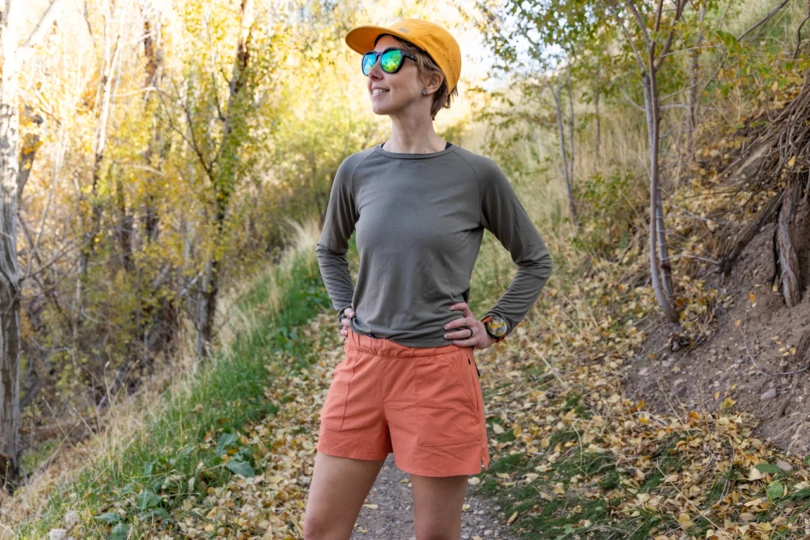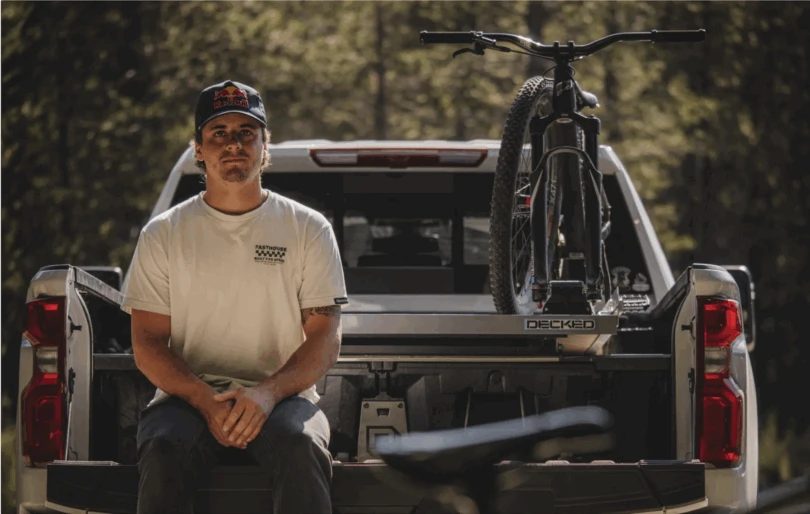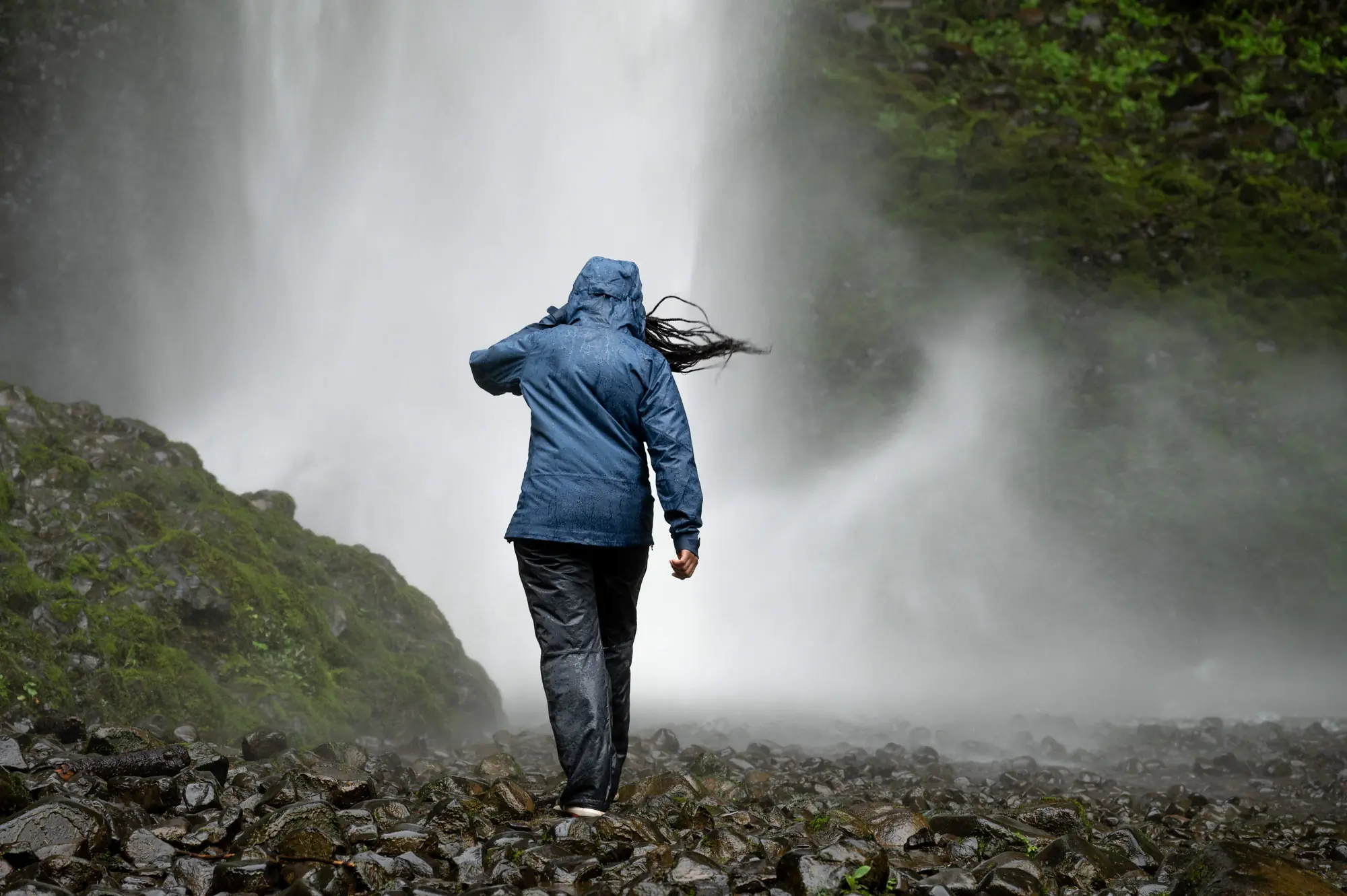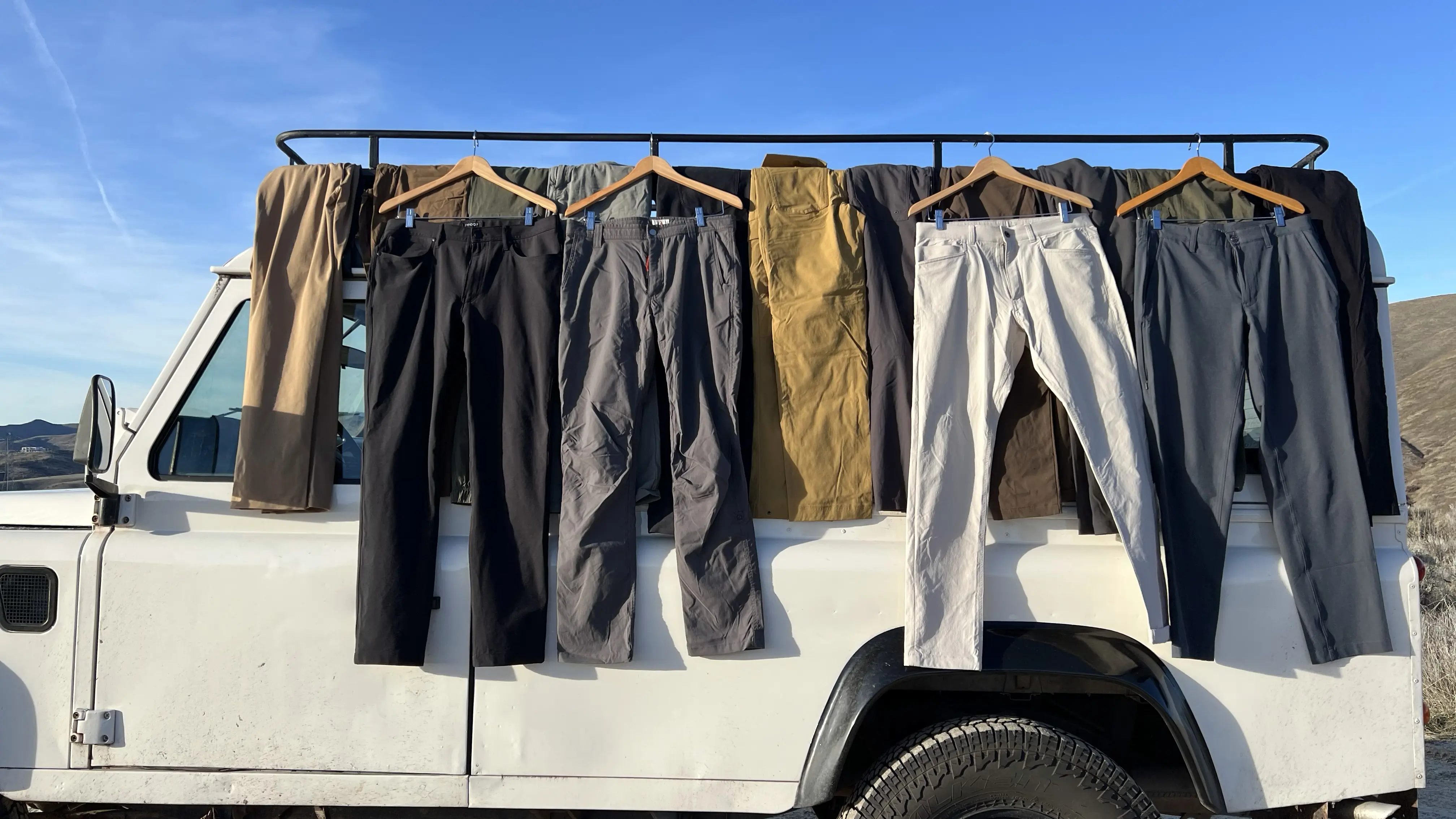For more than a decade, the GearJunkie team has worn close to 50 different rain jackets in just about every name for rain. We’ve pulled together everything from jackets for bumping around town to the most ultralight shells for thru-hiking and even techy rainwear for trail running, cycling, and climbing.
During testing, I and a team of wet-weather adventurers aimed for the worst weather windows to challenge the waterproofing, livability, and rough-and-tumble durability of these jackets. I paid close attention to performance over entire seasons, and if the weather failed to materialize, I wasn’t above busting out the garden hose. Every jacket was backpacked in, worn hard, and put away wet.
Whether you’re after an easy-to-use get-it-done option like the REI Co-op Rainier or want something that’ll really shoulder the rain with ease, like my best overall pick, the Outdoor Research Foray 3L, there are options here for most everyone. Read on to find a shell that’ll have your back.
Editor’s Note: We updated our Rain Jackets guide on November 21, 2025, to add the Arc’teryx Beta SL Jacket, a supremely well-cut rain jacket that fits us better than almost anything else on the market — and sports a full 3-layer GORE-TEX ePE membrane. This is our new go-to jacket for really harsh weather.
The Best Rain Jackets of 2025
Outdoor Research Foray 3L
-
Weather Protection
8.0
-
Breathability
8.0
-
Comfort & Fit
9.0
-
Weight
7.0
- Waterproof Membrane: AscentShell Dry 3L
- Waterproof Rating: 20,000 mm/24 hours
- Breathability Rating: 10,000 g/m²
- Pit Zips: Yes
- Fit: Regular
- Weight: 13.7 oz.
Pros
- New 3-layer membrane wets out much less
- Torso-Flo venting stretches from hem to the pits
- Large size range
- YKK Aquaguard zippers
- Fully adjustable hood
Cons
- 3-layer version is ~2 ounces heavier than previous
- Waterproofing isn't the highest out there
REI Co-op Rainier Rain Jacket
-
Weather Protection
7.0
-
Breathability
6.0
-
Comfort & Fit
7.0
-
Weight
6.0
- Waterproof Membrane: HydroWall 2.5L
- Waterproof Rating: Unpublished
- Breathability Rating: Unpublished
- Pit Zips: Yes
- Fit: Regular
- Weight: 11.3 oz.
Pros
- Budget price less than $100
- Admirable waterproofing
- Smartly designed torso pockets create drop-in pockets on the interior
- Exterior fabric is soft to the touch with slight stretch
- Stormflap is secured with Velcro tabs for extra security
Cons
- Slick 2.5 layer interior can become clammy with too much exertion
- Hood isn't the most adjustable, with only periphery shockcords
Patagonia Torrentshell 3L Jacket
-
Weather Protection
8.0
-
Breathability
7.0
-
Comfort & Fit
7.0
-
Weight
6.0
- Waterproof Membrane: Proprietary H₂No 3L
- Waterproof Rating: 20,000 mm/24 hours
- Breathability Rating: Unpublished
- Pit Zips: No
- Fit: Regular
- Weight: 13.9 oz.
Pros
- 3-layer waterproof membrane for the price of many 2-layer jackets
- Budget pricing
- Fit accommodates layering
- Good size range available
Cons
- Plastic-y feel
- Bulky packed size
- No pit zips
Arc’teryx Beta SL Jacket
-
Weather Protection
8.0
-
Breathability
7.0
-
Comfort & Fit
8.0
-
Weight
8.0
- Waterproof Membrane: 3L GORE-TEX ePE
- Waterproof Rating: 28,000 mm/24 hours
- Breathability Rating: <13 RET
- Pit Zips: Yes
- Fit: Fitted
- Weight: 12 oz.
Pros
- Excellent 3-layer GORE-TEX protection in a lightweight and packable jacket
- High-quality and water-resistant zippers
- Lighter and more packable material compared to Beta jacket
- Integrated RECCO reflector
Cons
- Fit might not accommodate many layers, so consider upsizing for bulky insulation
- Waterproofing will need more frequent refreshing compared to previous GORE-TEX versions
- Price
Montbell Versalite Jacket
-
Weather Protection
7.0
-
Breathability
8.0
-
Comfort & Fit
8.0
-
Weight
9.0
- Waterproof Membrane: GORE-TEX INFINIUM 2L
- Waterproof Rating: 30,000 mm/24 hours
- Breathability Rating: 43,000 g/m²
- Pit Zips: Yes
- Fit: Regular
- Weight: 6.4 oz.
Pros
- Full-featured at UL 6.5 oz. weight
- Impressive breathability
- Smart patterning reduces seam lines
- Three-way adjustable hood
- Reflective hits for night-time visibility
Cons
- Interior can feel slick
- Left hand zipper
- Not the widest size or color range available
Patagonia Storm Racer
-
Weather Protection
7.0
-
Breathability
8.0
-
Comfort & Fit
7.0
-
Weight
9.0
- Waterproof Membrane: Patagonia 3L H2No
- Waterproof Rating: 20,000 mm/24 hours
- Breathability Rating: Unpublished
- Pit Zips: No
- Fit: Active/Slim
- Weight: 7.2 oz.
Pros
- Great just-in-case layer for rain and wind
- Lightweight
- Breathable
- Stuffs down small
- Sustainable design
Cons
- Won’t stand up to intense rain
- Small chest pocket
The North Face Papsura
-
Weather Protection
7.0
-
Breathability
9.0
-
Comfort & Fit
8.0
-
Weight
9.0
- Waterproof Membrane: FUTURELIGHT 3L
- Waterproof Rating: Unavailable
- Breathability Rating: 75,000 g/m²
- Pit Zips: No
- Fit: Active/Slim
- Weight: 8 oz.
Pros
- Quite lightweight at 8 ounces
- Highly breathable air-permeable membrane
- Climbing-specific fit and features
- Non-PFC DWR finish
Cons
- Crinkly 7D material can be a bit noisy if you're paying attention
- Won't be as waterproof as other hardshell jackets
- Price
Other Rain Shells to Keep You Dry
The seven rain jackets above will cover you in just about any conditions you’ll face, but there are plenty of other options I think are well worth the space in your closet. Check out the seven shells below for excellent alternatives the team has tested and thinks deserve some consideration.
-
Weather Protection
7.0
-
Breathability
6.0
-
Comfort & Fit
7.0
-
Weight
7.0
- Waterproof Membrane: REI HydroWall 3L
- Waterproof Rating: Unavailable
- Breathability Rating: Unavailable
- Pit Zips: Yes
- Fit: Regular
- Weight: 13.4 oz. (tested men's medium)
Pros
- 3-layer membrane at a more budget-oriented price
- Good stretch in the fabric
- Packs into its own pocket
- Great value for the spend
- Large size and color range
Cons
- Not the best waterproofing out there, and will need DWR refreshes to stay dry
- No internal drop pockets like the REI Rainier
-
Weather Protection
9.0
-
Breathability
8.0
-
Comfort & Fit
9.0
-
Weight
7.0
- Material Construction: 80D/100D 3L GORE-TEX Pro ePE
- Waterproof Rating (mm): 28,000
- Breathability Rating (RET): <13
- Fit: Regular
- Pockets: Two handwarming pockets
- Weight: 1 lb., 0.2 oz.
- Best For: General mountaineering, ski-touring, alpine rock
Pros
- Versatile feature set
- Unique raised collar for weather protection
- Built with GORE-TEX Pro ePE membrane
- Lightweight at only 1 pound (tested men's medium)
- Rugged exterior shell fabric absorbs abrasion
Cons
- Price
- New version of GORE-TEX Pro ePE needs to be re-waterproofed more often
- No two-way front zipper
-
Weather Protection
7.0
-
Breathability
6.0
-
Comfort & Fit
7.0
-
Weight
7.0
- Waterproof Membrane: Pertex Shield 2.5L
- Waterproof Rating: 20,000 mm/24 hours
- Breathability Rating: 20,000 g/m²
- Pit Zips: Yes
- Fit: Regular
- Weight: 12 oz.
Pros
- Price
- Dependable Pertex membrane
- Nice and simple look
- Water-resistance zippers
Cons
- Can become overwhelmed with moisture inside
- Fairly limited feature set
-
Weather Protection
7.0
-
Breathability
7.0
-
Comfort & Fit
7.0
-
Weight
8.0
- Waterproof Membrane: Proflex 2.5L
- Waterproof Rating: 20,000 mm/24 hours
- Breathability Rating: 20,000 g/m²
- Pit Zips: No
- Fit: Acrtive/Slim
- Weight: 7.7 oz. (tested men's medium)
Pros
- Lightweight at under 8 ounces
- Flexible and stiffened hood brim
- Hand pockets tucked up high on torso
- YKK Aquaguard zippers
Cons
- No pitzips for ventilation
- Not immune from slick interior when really working up a sweat
-
Weather Protection
8.0
-
Breathability
7.0
-
Comfort & Fit
7.0
-
Weight
9.0
- Waterproof Membrane: Pertex Shield 2.5L
- Waterproof Rating: 20,000 mm/24 hours
- Breathability Rating: 20,000 g/m²
- Pit Zips: Yes
- Fit: Active/Slim
- Weight: 6.3 oz.
Pros
- Ultra-packable
- Lightweight
- Tough Diamond Fuse textile tech
Cons
- No hand pockets
- Can wet out
-
Weather Protection
7.0
-
Breathability
7.0
-
Comfort & Fit
8.0
-
Weight
7.0
- Waterproof Membrane: Dry.Q 2.5L
- Waterproof Rating: 10,000 mm/24 hours
- Breathability Rating: 10,000 g/m²
- Pit Zips: Yes
- Fit: Regular
- Weight: 10.5 oz.
Pros
- Whole body stretch doesn't limit mobility
- Soft exterior material feel
- Mesh-lined pockets aids in venting
- Microfleece chin guard
Cons
- Not the most waterproof or breathable
- Simple hood design
- Stretch fabrics require more frequent DWR treatments
-
Weather Protection
8.0
-
Breathability
7.0
-
Comfort & Fit
8.0
-
Weight
7.0
- Waterproof Membrane: GORE-TEX ePE 3L
- Waterproof Rating: 28,000 mm/24 hours
- Breathability Rating (RET): <13 RET
- Pit Zips: No
- Fit: Active/Slim
- Weight: 13.2 oz.
Pros
- Burly construction
- Lightweight design
- High-quality fit and finish
- Non-PFC GORE-TEX ePE membrane
Cons
- High price
- Fabric crinkle
-
Weather Protection
7.0
-
Breathability
7.0
-
Comfort & Fit
8.0
-
Weight
7.0
- Waterproof Membrane: Proprietary BD.dry 2.5L
- Waterproof Rating: 10,000 mm/24 hours
- Breathability Rating: 10,000 g/m²
- Pit Zips: Yes
- Fit: Regular
- Weight: 11.3 oz.
Pros
- Great value
- Impressive material stretch doesn't limit mobility
- Water-resistant front zipper
- Helmet-compatible hood
- Packs into its own pocket
Cons
- Not ideal over layers
- Not the most waterproof or breathable
Rain Jackets Comparison Chart
| Rain Jacket | Price | Waterproof Material | Waterproof Rating | Breathability Rating | Weight |
|---|---|---|---|---|---|
| Outdoor Research Foray 3L | $249 | AscentShell Dry 3L | 20,000 mm/24 hours | 10,000 g/m² hed | 13.7 oz. |
| REI Co-op Rainier Rain Jacket | $100 | REI HydroWall 2.5L | Unpublished | Unpublished | 11.3 oz. |
| Patagonia Torrentshell 3L | $179 | Patagonia H2No 3L | 20,000 mm/24 hours | Unpublished | 13.9 oz. |
| Arc’teryx Beta SL Jacket | $500 | 3L GORE-TEX ePE | 28,000 mm/24 hours | <13 RET | 12 oz. |
| Montbell Versalite | $260 | GORE-TEX INFINIUM 2L | 30,000 mm/24 hours | 43,000 g/m² | 6.4 oz. |
| Patagonia Storm Racer | $299 | Patagonia H2No 3L | 20,000 mm/24 hours | Unpublished | 7.2 oz. |
| The North Face Papsura | $350 | FUTURELIGHT 3L | Unpublished | 75,000 g/m² | 8.0 oz. |
| REI Co-op XeroCloud 3L | $190 | REI HydroWall 3L | Unpublished | Unpublished | 13.4 oz. |
| Arc’teryx Beta AR | $650 | GORE-TEX Pro ePE 3L | 28,000 mm/24 hours | <13 RET | 1 lb., 0.2 oz. |
| Marmot Minimalist Pertex | $185 | Pertex Shield 2.5L | 20,000 mm/24 hours | 20,000 g/m² | 12 oz. |
| Rab Downpour Light | $165 | Proflex 2.5L | 20,000 mm/24 hours | 20,000 g/m² | 7.7 oz. |
| Outdoor Research Helium | $170 | Pertex Shield 2.5L | 20,000 mm/24 hours | 20,000 g/m² | 6.3 oz. |
| Mountain Hardwear Stretch Ozonic | $230 | Dry.Q 2.5L | 10,000 mm/24 hours | 10,000 g/m² | 10.5 oz. |
| Arc’teryx Beta | $400 | GORE-TEX ePE 3L | 28,000 mm/24 hours | <13 RET | 10.6 oz. |
| Black Diamond Fineline Stretch | $189 | Black Diamond BD.dry 2.5L | 10,000 mm/24 hours | 10,000 g/m² | 11.3 oz. |
How We Tested the Best Rain Jackets
From time spent on long trails to running laps on ice climbs, rain shells are often put to the test in a wide variety of conditions, and I aimed to review all of them in a broad spectrum of environments.
- Field testing: Our rain jacket testing occurs year-round, but mostly during the wettest months of autumn in the Pacific Northwest. I, along with a crew of dedicated trail hounds, have been pulling on waterproofs and treading out into uncertain weather patterns for more than 5 years — collectively testing more than 50 different rain jackets now. This testing aims to challenge these jackets and looks at waterproofing over 24-hour periods, breathability during hill climbs, and durability against dense Cascadian bushwhacks.
- Shower waterproofing challenge: Every shell tested endures the classic shower soak — a 10-minute deluge with all hatches battened down and seams inspected for soaking through. I also completed this test a second time while wearing a weighted pack to challenge the waterproof rating even further. Zipper waterproofing is tested by tucking away paper towels inside and soaking the exterior.
- Fit and finish testing: Hoods are tested for visibility and mobility while looking in all directions. All jackets are weighed on our own scales to ensure accurate weight verification. I even compress each shell into the same stuff sack and measure volume for a real-deal understanding of packed size.
- Our rain jacket rating system:
- Weather Protection: 30% weighted. I look for solid protection from wind and rain over longer periods, typically a full 24 hours out in the elements. Long hem lines with drop tails, zippers that are either covered by fabric or water-resistant, and high-quality 3-layer membranes all secure high scores here.
- Breathability: 30% weighted. I look for the ability to mechanically vent through pit zips, a roomy fit, and a solid breathability testing score, typically greater than 15,000 g/m² or a RET of 12.
- Comfort & Fit: 20% weighted. I look for design features that provide some solid comfort and a good fit, such as a versatile cut for layering, a cinchable hem, sleeves that reach the wrists just right, and a hood that is adjustable in more than one dimension. We pass these jackets around to a handful of different in-house testers and compile notes from a variety of different body types to ensure our impression is accurate.
- Weight: 20% weighted. I look for all-around rain jackets to be less than a pound and ultralight jackets to be less than half a pound to award a decent score.
Our Expert Testers
My team of testers has braved storms from the rain-drenched foothills of the Pacific Northwest to the mountains of Colorado for half a decade now to review and publish rain jacket guides for men and women. The GearJunkie crew isn’t afraid of a poor forecast, and our gathered rain jacket knowledge is pulled together here to guide your rain jacket choice. While we might be a bit wet behind the ears, it’s not for a lack of experience.
I, Senior Editor Nick Belcaster, am no stranger to a little precip, and am the principal tester for this guide. Living and playing in the state of Washington requires either a lot of patience in waiting for the weather to change or a lot of grit to get outside anyway. I’ve also thru-hiked the Pacific Crest Trail, and have previously professionally equipped alpine climbers for whatever conditions they might encounter, including week-long deluges.
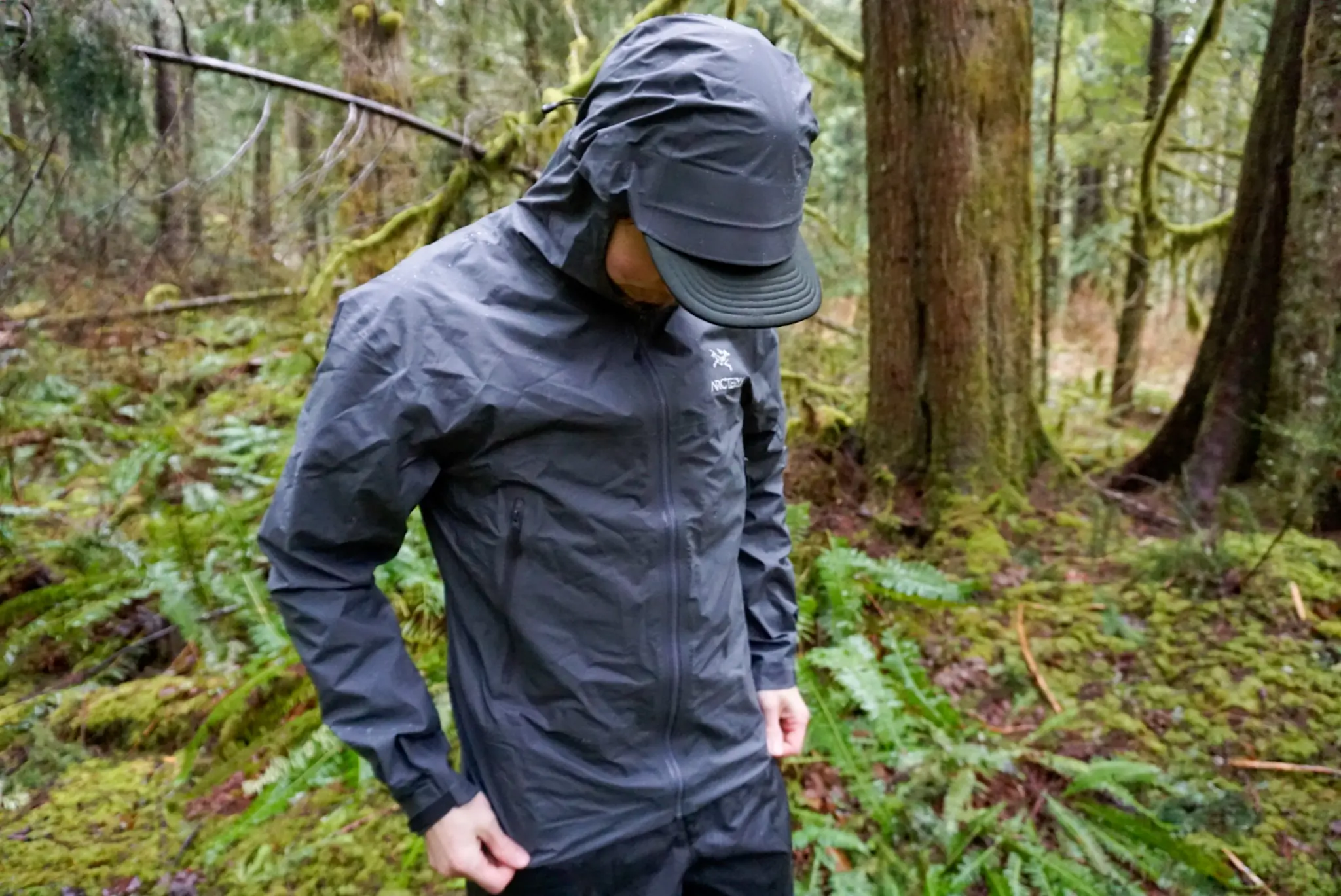



Buyer’s Guide: How to Choose a Rain Jacket
There are many rain jackets on the market, and while having options is great, it can be overwhelming to choose. In this buyer’s guide, I’ll explain the most important factors to keep in mind when deciding on the best rain jacket for your needs.
What Is ‘Waterproof’?
Given enough time and pressure, nothing is truly waterproof. Even the yellow rubber slickers that swaddle fisherfolk will eventually yield to enough H₂O, which means a little science is needed in order to understand what is ‘waterproof’, and what is ‘water-resistant’.
Waterproofness is measured by the amount of water that can pile up on fabric before it leaks over a period of 24 hours. The minimum standard to call something waterproof is 1,000 mm, which should generally be capable of handling everyday front country use, like walking your dog around town in a light drizzle. But for outdoor adventures with severe weather, you’ll want to find a jacket with a waterproof rating between 5,000 mm and 30,000 mm.
Pressure can also lower the waterproofness of your rain jacket, and it can be introduced from backpack straps or heavy snow. It is important to note that waterproofness and breathability are two metrics pulling in opposite directions, and superior water resistance will require some concessions in the breathability department.
Waterproof Breathable Membranes
The waterproof breathable membrane is the heart and soul of a rain jacket, and has the difficult task of balancing keeping rain from getting in, and passing moisture-heavy air out. GORE-TEX is widely known, and is an industry leading technology that performs at a high level, but there are other in-house options as well, such as Outdoor Research’s AscentShell and REI’s HydroWall.
There are a few different ways to make a waterproof membrane, but the most important differentiator to know is between old-school membranes like GORE-TEX, and new-school ‘air-permeable’ options. GORE-TEX will prioritize waterproofing (and not breathe as well), while air-permeable options breath much better — but won’t be as waterproof.
Jacket Layers & Breathability
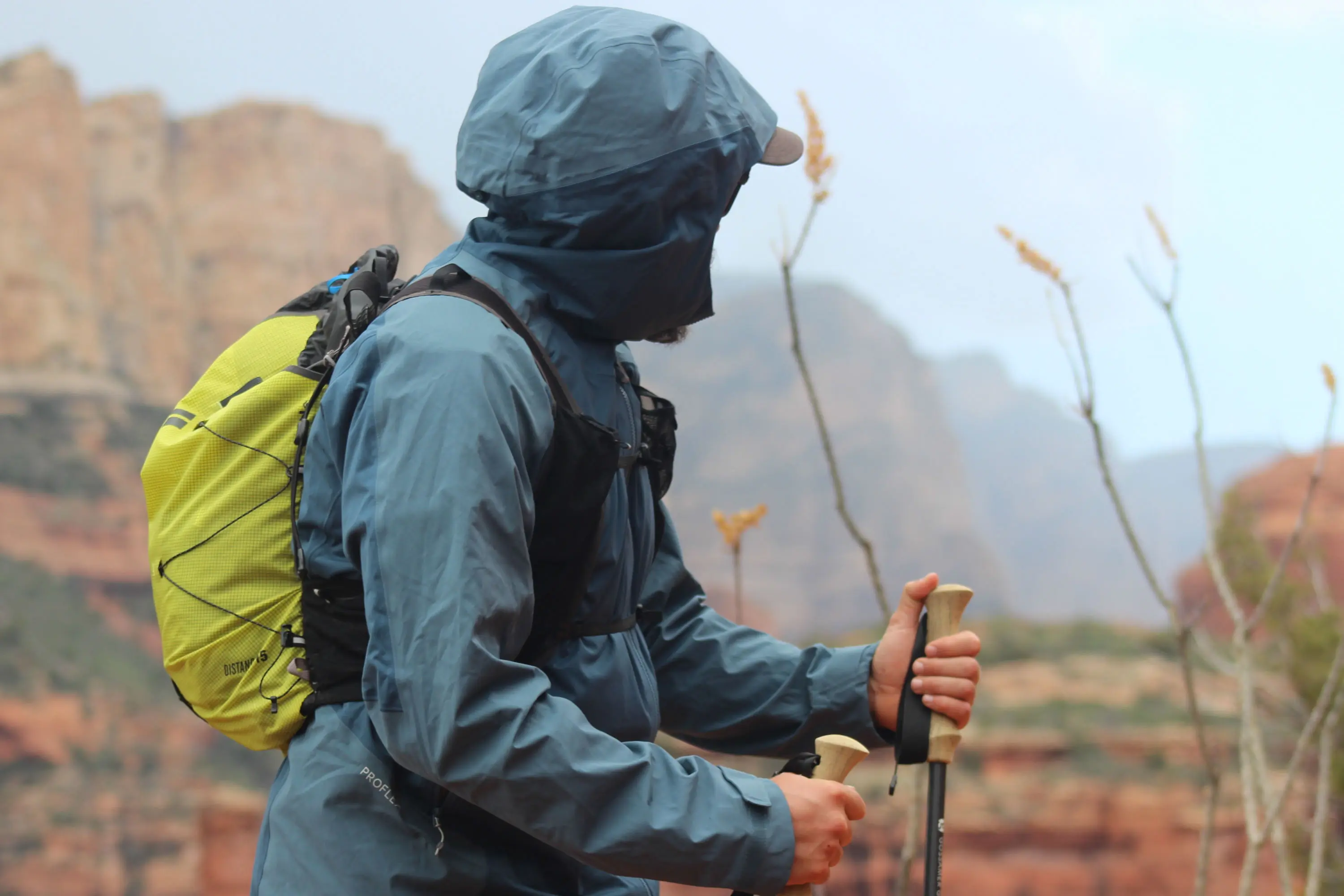



You’ll often see jackets sporting identifiers such as ‘2-layer’ or ‘3-layer’ construction, which relates to the liner and face fabric surrounding the waterproof membrane. These layers are necessary to both protect the membrane, as well as help it pass moisture out of the jacket (and stop it from getting to the membrane in the first place).
The style of liner is what decides the layer construction, with 2-layer jackets only using a membrane and a hanging liner — one that isn’t bonded to the jacket. These are typically budget-minded shells, and won’t be as durable as more robust designs.
2.5-layer shells bond a very thin lining to the interior of the jacket, which protects the sensitive membrane from your body oils. These jackets tend to be quite lightweight and packable (such as the Outdoor Research Helium), but are a bit more fragile in the long run.
3-layer jackets such as the Outdoor Research Foray use a more robust textile backer to line the shell, which aids in moisture wicking, and provides a soft touch against the skin. Most of all, this layer protects the membrane from premature wear, and make these the highest-performing jackets. You’ll typically pay the most for these designs, but there is value to be found in shells like the $179 Patagonia Torrentshell 3L.
Breathability is measured in a few different ways, and you’ll most often see this in grams per square meter, or ‘g/m²’. Aiming for a breathability above 15,000 g/m² will ensure that you don’t sweat out your jacket while building up some steam on trail. You may also see a RET score referenced, with <6 being extremely breathable, between 6 and 12 being highly breathable, and greater than 12 only being moderately breathable.
Durable Water Repellant & Seam Taping
The first line of defense for a rain jacket, a durable water-repellent finish (DWR) is a hydrophobic coating that gives it that “duck’s back” look of rain beading away harmlessly. This keeps water from overwhelming the waterproof membrane and prolongs its ability to stay waterproof.
DWR coatings also affect the ability of the jacket to breathe, as a wetted-out face fabric will inhibit the jacket’s ability to expel moisture. Abrasion, oils, and trail funk can all degrade the coating, so keeping your rainwear clean and re-waterproofed is the best way to ensure that your jacket continues to function at peak performance, as I discuss below.
Seam tape is used on the interior of the jacket to join fabric panels together, and ensures that water can’t entry through the stitch holes.
Zipper Ventilation
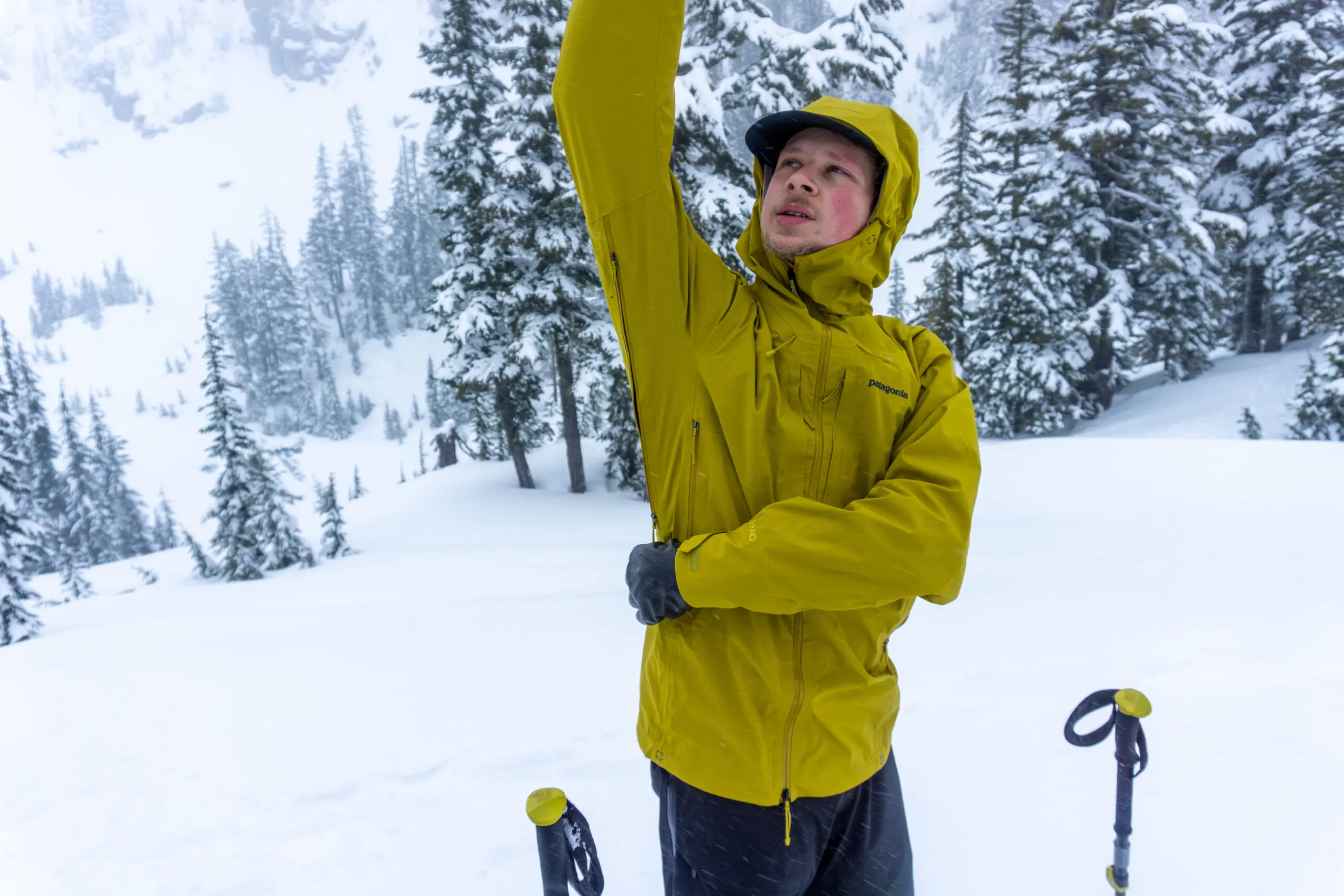



Rain jackets meant for vigorous outdoor use will require some type of added ventilation to move out excess body heat, and the most common are pit zips. These underarm zippers typically run from the center of the torso to near the elbow. Most rain jackets today will sport these zippers, with only the lightest options — like the The North Face Papsura — going without them.
Some novel ventilation zippers also exist. The hem-to-pits zippers on the Outdoor Research Foray 3L split the jacket up the sides, allowing for much more ventilation and the ability to differentially open the vents. These venting options all aid in moving perspiration and heat out quickly.
Comfort & Stretch
It’s important that your rain jacket moves comfortably with you and does not overly restrict your movement. A comfortable rain jacket will keep you dry without feeling annoying or cumbersome.
A growing trend has been incorporating built-in stretch into rain jackets, which greatly increases their abilities where high mobility is needed. Jackets reviewed like the Black Diamond Fineline Stretch and Mountain Hardwear Stretch Ozonic Jacket incorporate stretch and will move with you outdoors.
Small features usually define the overall comfort of a rain jacket. For example, a hood that fully blocks peripheral vision will not be comfortable to use. Ideally, your rain jacket will minimally limit your range of motion, and the interior lining will feel good against your skin.
Weight & Packed Size


Most people agree weight is an important consideration for any piece of outdoor gear. If you’re going to be carrying your rain jacket in a pack when it isn’t in use, you want it to be as light and compact as possible — without sacrificing usability. Many lightweight rain jackets, like the Montbell Versalite or The North Face Papsura, weigh less than a pound without sacrificing durability and functionality.
Many rain shells stuff easily into their own pockets and become barely larger than a baseball. Once packed down, it’s nice to have an external clip-in loop on the stuff sack — especially for multi-pitch rock climbing or backpacking. If your rain jacket packs down conveniently, you’re more likely to bring it along and have it when it’s needed most.
Pockets
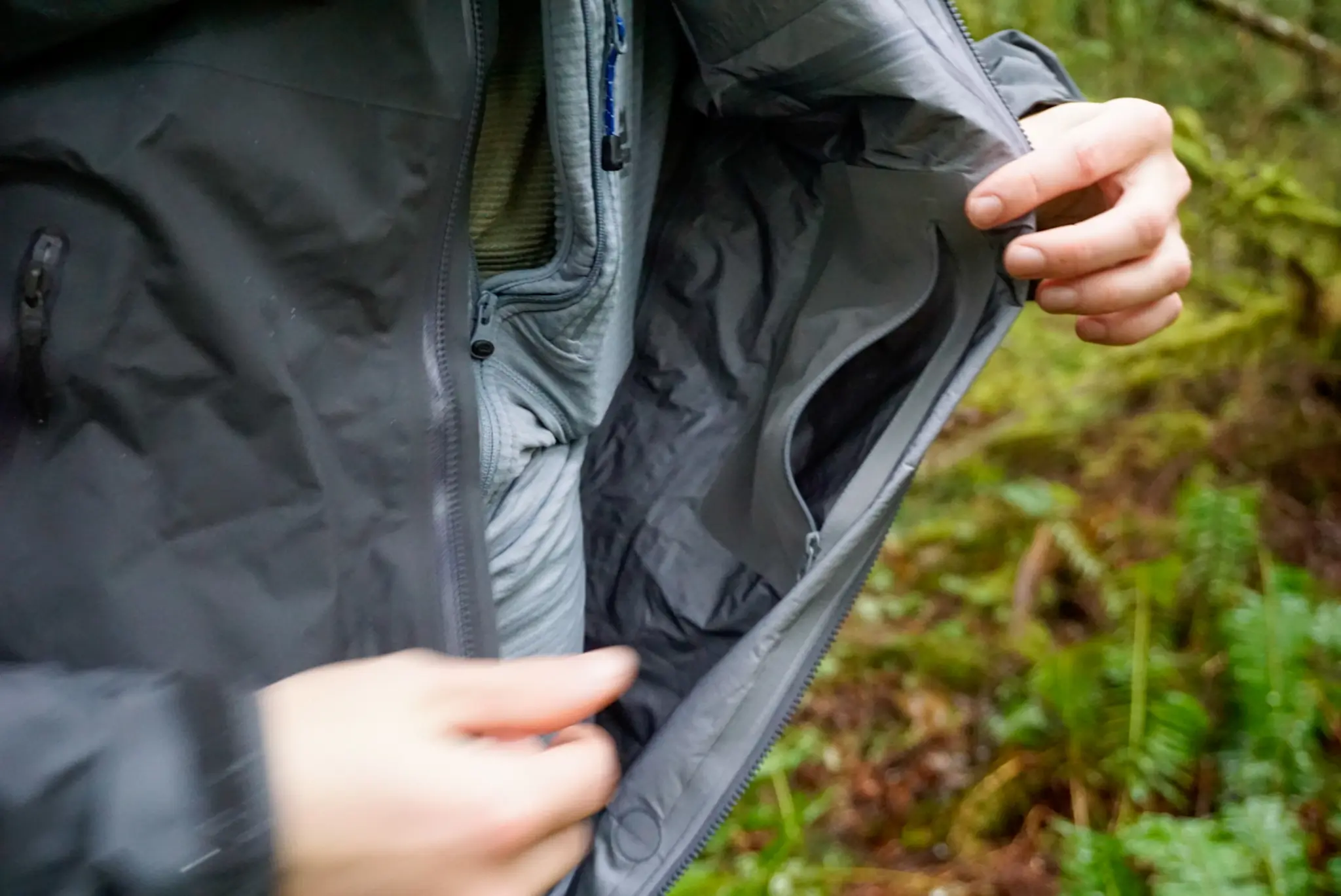



It’s nice to have a well-placed pocket or two in your rain jacket. However, more pockets mean more material, and more material means increased weight and decreased packability.
Pockets also create seams that may decrease the waterproof capability of the jacket. Still, it’s nice to at least have two hand pockets to keep your hands warm and dry in a storm. Waterproof zippers on pockets and front zippers can add increased water resistance and protect your valuables inside. Also, rain jackets will often incorporate underarm zippers to increase ventilation.
Hoods
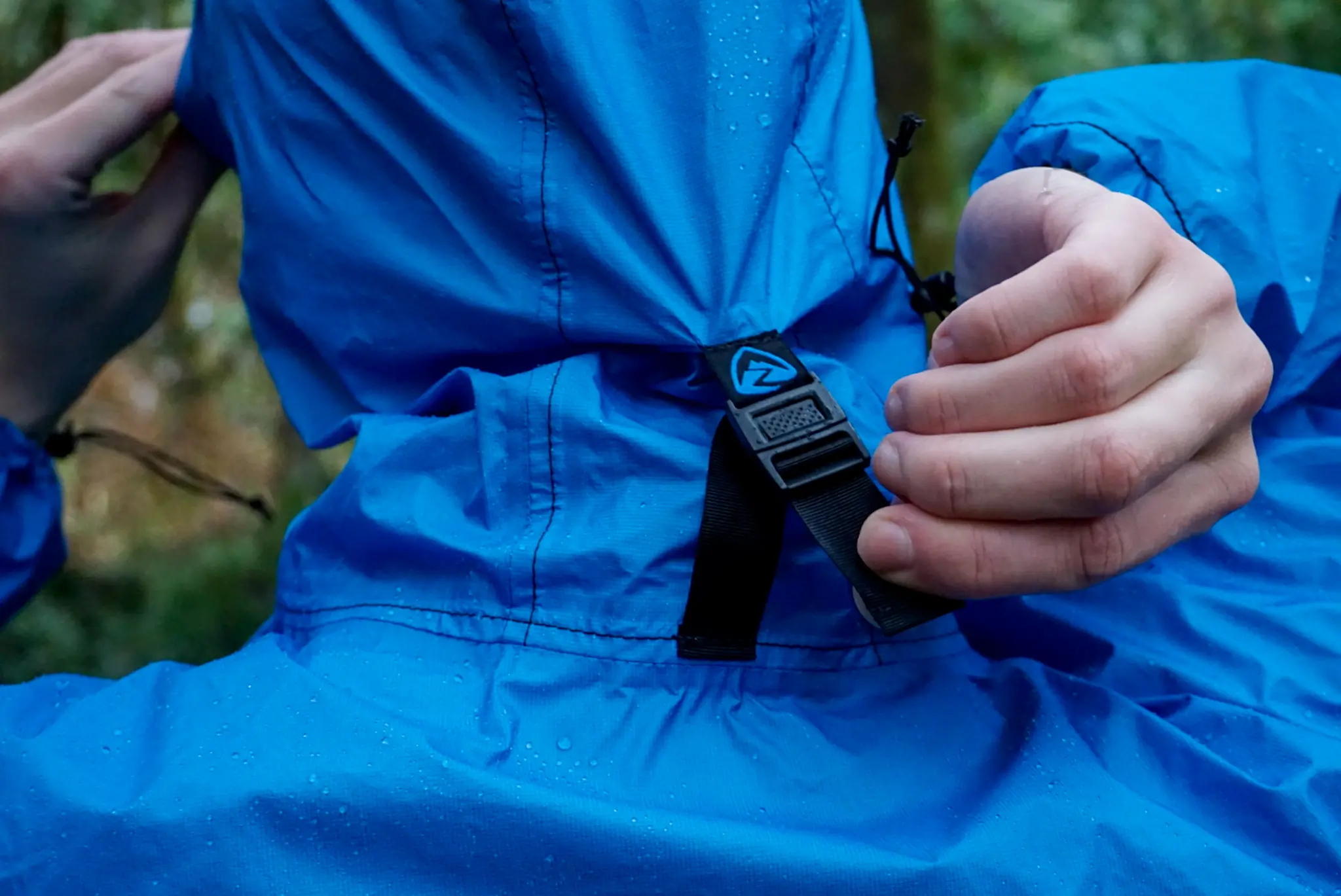



Some rain jackets have hoods that double as a convenient stuff sack. Generally, if it’s raining hard enough to warrant a rain jacket, you’ll probably also have the hood up.
A well-designed hood should be strategically designed to offer full protection without limiting peripheral vision. Adjustments can include a simple drawstring at the rear of the hood to pull the crown out of your eyes, as well as side profile adjustments for peripheral coverage, and wire-stiffened brims to keep rain from draining into the hood.
Finally, it’s also important to ensure that your hood will fit over any helmet you may be wearing. Typically seen in more sport-specific or hardshell jackets, helmet-compatible hoods provide a bit of extra internal space to accommodate your protective headwear.
Sustainability
In striving to create the most waterproof membrane, the outdoor industry created a number of unsustainable practices which are slowly beginning to be rectified: using recycled materials, PFC-free DWR finishes, and ensuring sustainable practices are used during production.
Being Bluesign certified means that the fabric used in the jacket has passed an independent approval process to ensure that they are safe for the environment and consumers. A similar process is used in being Fair Trade Certified, where producers must ensure sustainable livelihoods for textile workers.
The most sustainable rain jacket in our review was the Patagonia Torrentshell 3L Jacket, which utilizes a 100% recycled face fabric, is Fair Trade Certified sewn, and is Bluesign-approved.
Durability and Caring for Your Rain Jacket
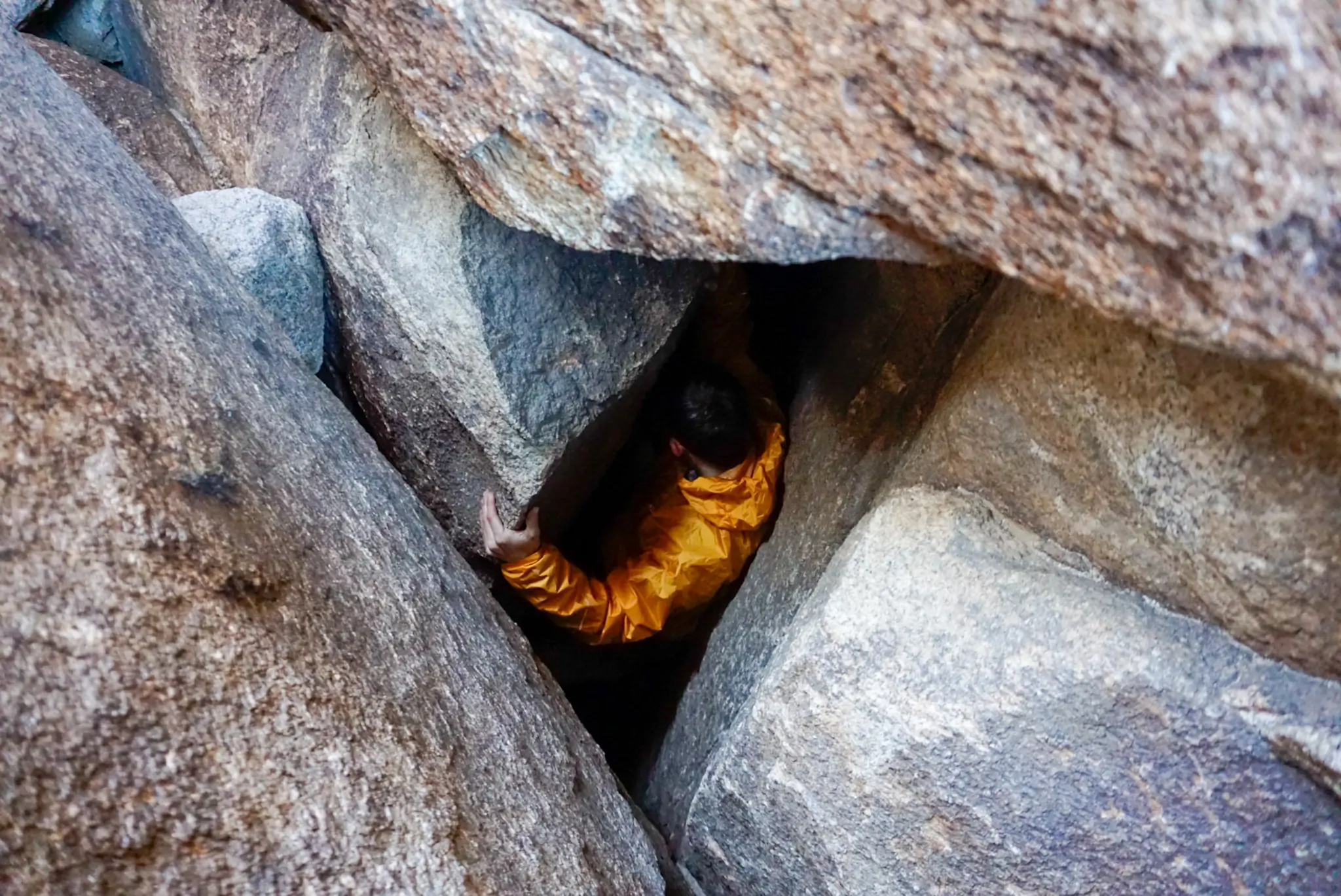



A rain jacket is designed to be exposed to the elements, and a good one will do its job without falling apart. As rain jackets become lighter, users should expect a dip in durability, too.
However, on this list, I’ve included rain jackets that are both lightweight and reliable. A jacket that is abrasion-resistant will have much greater overall longevity. Purchasing a shell that utilizes a higher denier face fabric, such as the Arc’teryx Beta Jacket, will greatly increase its durability over time.
Often overlooked, regular upkeep of your rain jacket is essential to keeping the waterproof membrane happy and working as it was designed. When body oils and grime clog the interior pores, the breathability suffers, and a worn-away DWR finish does little to keep a jacket from wetting out. A quick and easy way to breathe some life into your DWR is a brief cycle in the dryer on medium heat.
When a more thorough cleaning is in order, begin by washing your rain jacket with a detergent that is made for waterproof fabrics, such as Nikwax Tech Wash. I’ve found that this will cleanse the waterproof membrane and allow it to function as designed.
Price & Value
Rainwear can be pricey, and often rightfully so — little else has as much depending on it. Staying dry certainly has a price, but it isn’t always clear what exactly you’re getting for the money. When it comes to rain jackets, the breakdown is as such:
Budget
Sometimes you just need a shell to get the job done — or you’ve already splurged on your big three camping kit. Either way, there are thankfully a number of great rain jackets on the market today that won’t rob your pockets too harshly and tend to slide in between $100 and $200. These shells are more often 2- or 2.5-layer jackets with in-house membranes, which are cheaper to produce, but also won’t hit as high performance metrics.
When it comes to the best bang for your buck out there, I always circle back to the REI Co-op Rainier Rain Jacket ($100), which uses an REI proprietary membrane to keep its price low but still comes in flush with all of the features I’m after in a rain jacket. The Patagonia Torrentshell 3L ($179) is another notable value, and bumps up the protection for a bit more out of pocket.
Mid-Tier
The meat and potatoes of rain jackets typically gain more protection over their budget counterparts, and this is where you’ll see third-party membranes such as Pertex or GORE-TEX being used. Three-layer jackets are the standard here, and you also begin to see more special use-case jackets, such as ultralight shells or burly mountain-ready jackets. Expect to pay north of $200 and up to $400 for these rain jackets.
Our go-to do-it-all jacket has been the Outdoor Research Foray 3L ($249), and I’m sticking with it. The new 3-layer membrane breathes better than the previous version, and the huge pits-to-hem zips make it highly versatile.
Ultralight shells like the Montbell Versalite ($260) and Patagonia Storm Racer ($299) trade some protection for weight savings, and climbing shells like The North Face Papsura ($350) are ready to be clipped to a harness.
Premium
Nearing the protection offered up by hardshell jackets, premium rain shells are more often than not going to be a 3-layer GORE-TEX offering, and will hold out the longest when it comes to rain protection. Look to these shells to command from $400 and on up, with additional features and extra burly materials commanding more dollar signs.
The Arc’teryx Beta AR is undoubtedly the most protective rain jacket on our list and is made from GORE-TEX Pro material, but it also asks $650 for the privilege. It’s not the only jacket from the brand to occupy this level of rainwear, either, with the more all-around Arc’teryx Beta SL Jacket going for $500. It’s easy to label these as overpriced, but after many seasons of use, the durability and protection of these jackets are undeniable.
You can go a step further by reapplying a fresh coat of DWR such as GEARAID Revivex Durable Water Repellent Spray, and then turning the jacket inside out and drying it on high heat to set. This is a common fix and with frequent reapplication, it will keep water beading off your jacket when it counts.
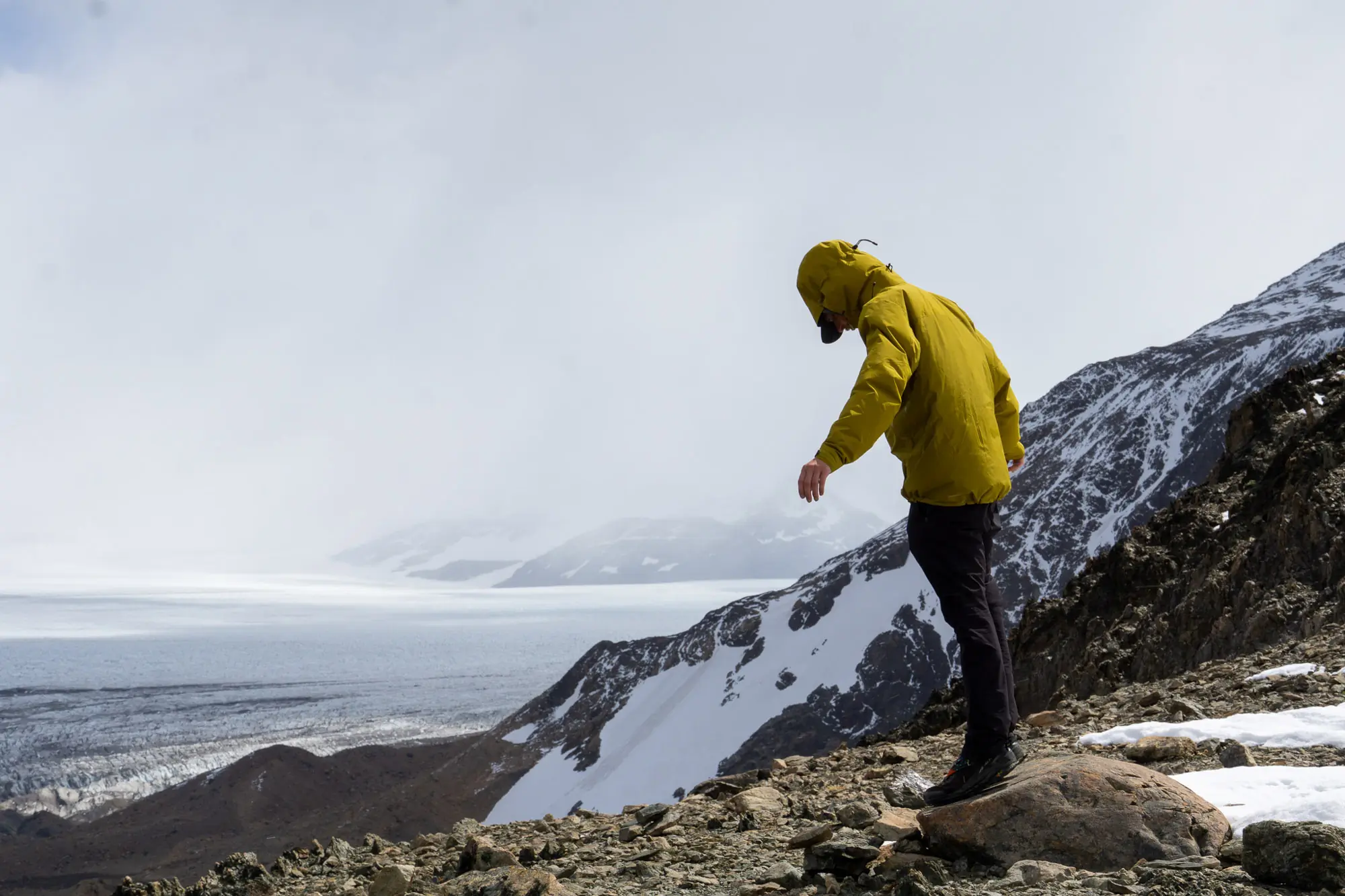



Frequently Asked Questions
The best waterproof jacket is one that fits well, meets your needs, and provides reliable waterproofing. On this list, I have included several high-quality rain jackets.
When deciding which one to purchase, consider factors including the jacket’s waterproof rating, weight, durability, and extra features.
GORE-TEX is the gold standard for waterproof fabric. When undamaged and in good shape, GORE-TEX-treated fabrics will keep out any liquid water that lands on the surface.
However, over time, the quality of the waterproofing of GORE-TEX will degrade, and it will no longer perform like new. Most GORE-TEX materials have a waterproof rating of 28,000 mm.
It’s wise to always go into the outdoors prepared with a rain jacket. Many rain jackets are light and packable, so you’ll hardly notice them in your pack during the hike. In wet and cold conditions, a good rain jacket can keep you comfortable and safe.
Waterproof membranes in rain jackets degrade slowly, but are sensitive to becoming dirty and clogged with sweat and dirt. Often, a jacket still retains much of its original waterproof ability, and only needs to be cleaned with a waterproof fabric-safe detergent and re-waterproofed with a new DWR finish.
Wetting out occurs when the face fabric of a rain jacket becomes overwhelmed by water from the outside, saturating the outer face and limiting the ability of the waterproof membrane to do its job.
This can occur when a DWR finish has worn out, or external pressure from a heavy pack presses the moisture into the fabric. Frequent washing and re-waterproofing is the best bet to avoid wetting out.
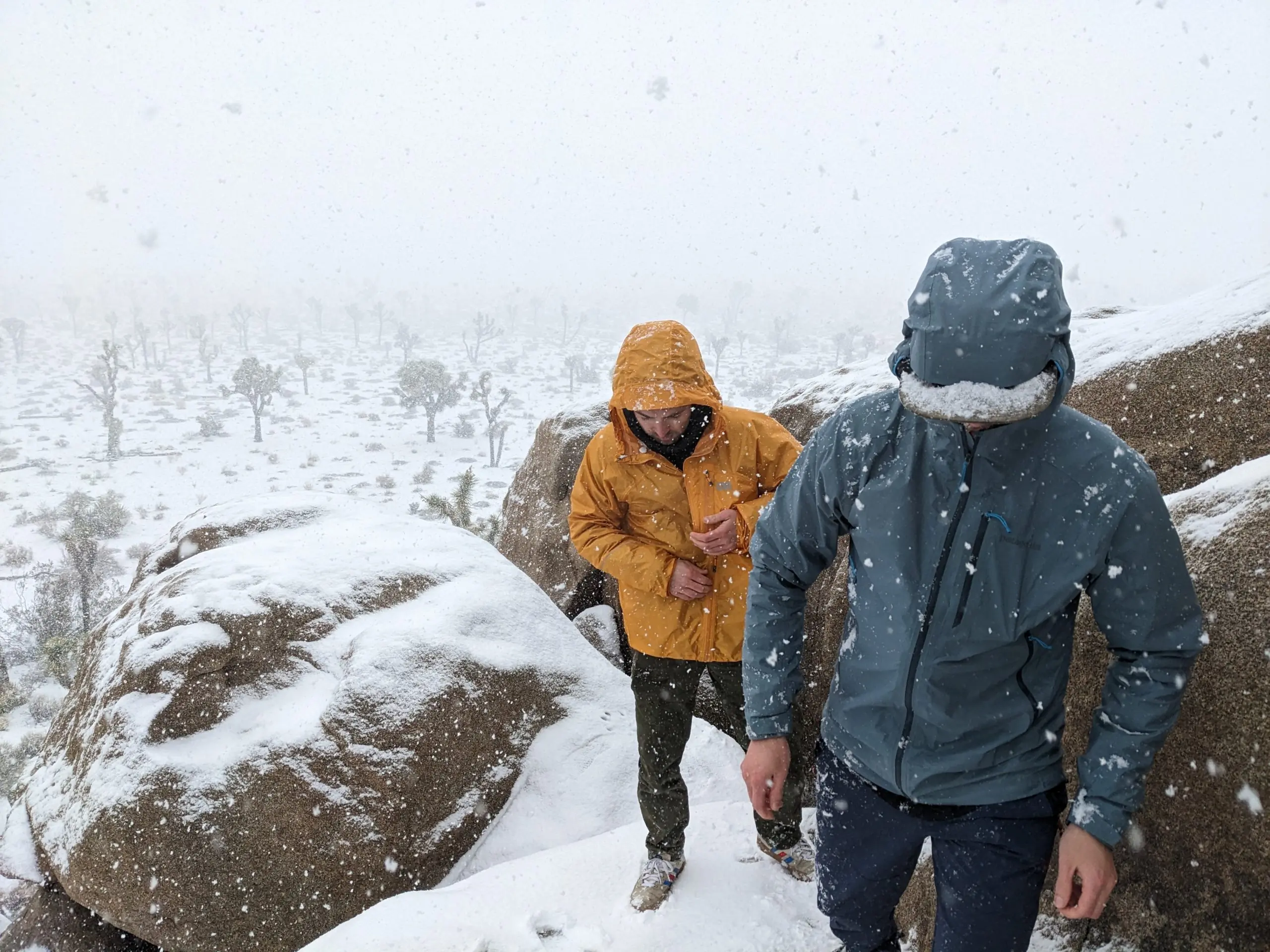



Rain jackets are designed to keep water out while still allowing your body’s moisture to escape as vapor. Unlike a trash bag or plastic poncho, rain jackets are semipermeable and designed to keep you both cool and dry at the same time.
Still, a rain jacket is certainly less breathable than other kinds of layers, and you can expect some heat and moisture to get trapped underneath.
Strictly speaking, rain jackets are not usually designed with insulation. Most of the jackets I’ve recommended on this list are not insulated. The main job of a rain jacket is to protect you from rain, snow, wind, and other adverse weather. While rain jackets will add a little warmth, other layers such as fleece jackets and puffies provide much more and can easily be worn underneath a rain jacket.
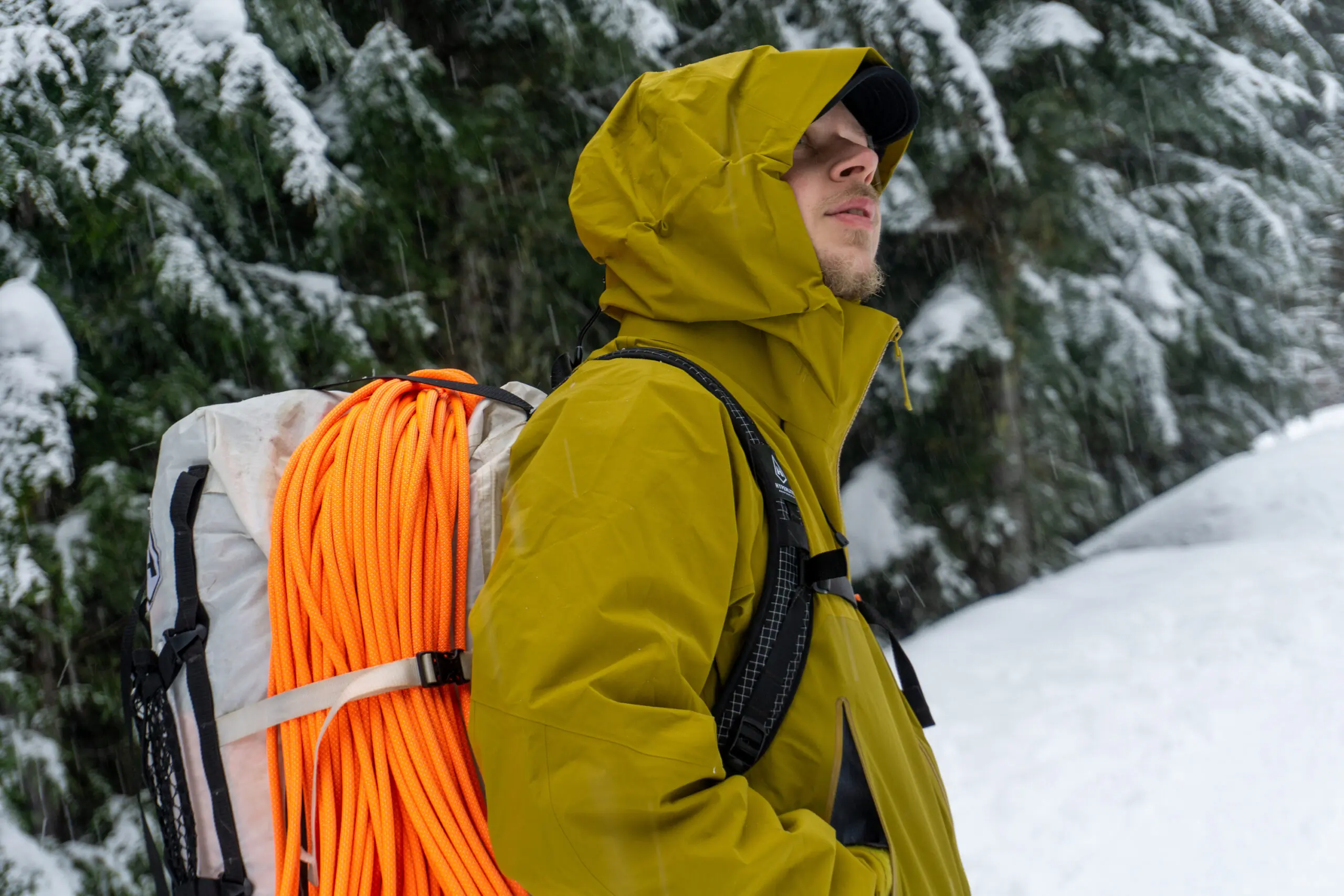

The Best Hardshell Jackets of 2025
After months of testing in the harshest of conditions, these are the best hardshell jackets to brave the alpine with in 2025.
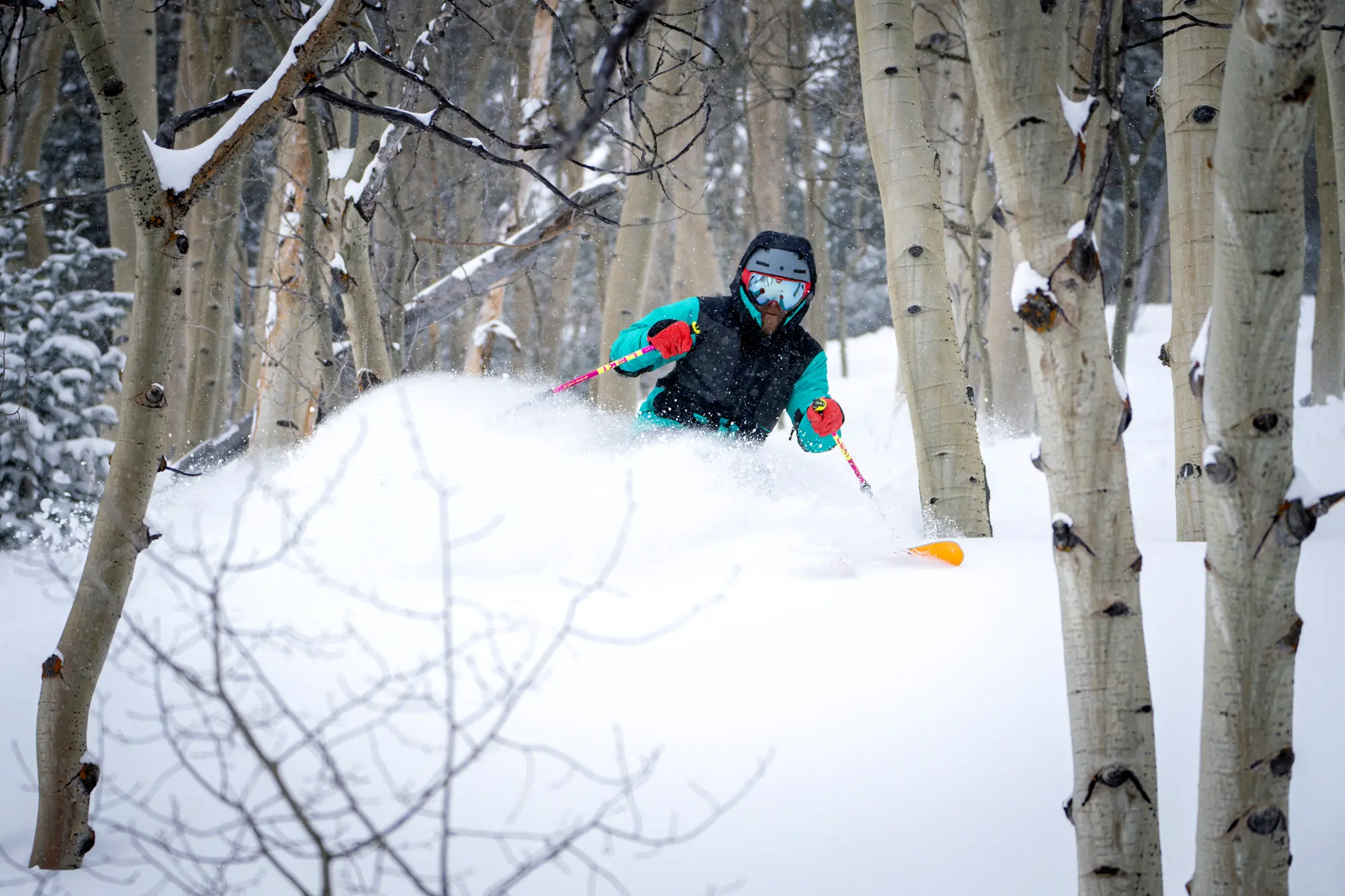

The Best Ski Jackets of 2025-2026
Whether you’re skiing in sunny or stormy conditions, we tested and found the best ski jackets including Patagonia, Arc’teryx, and more.
